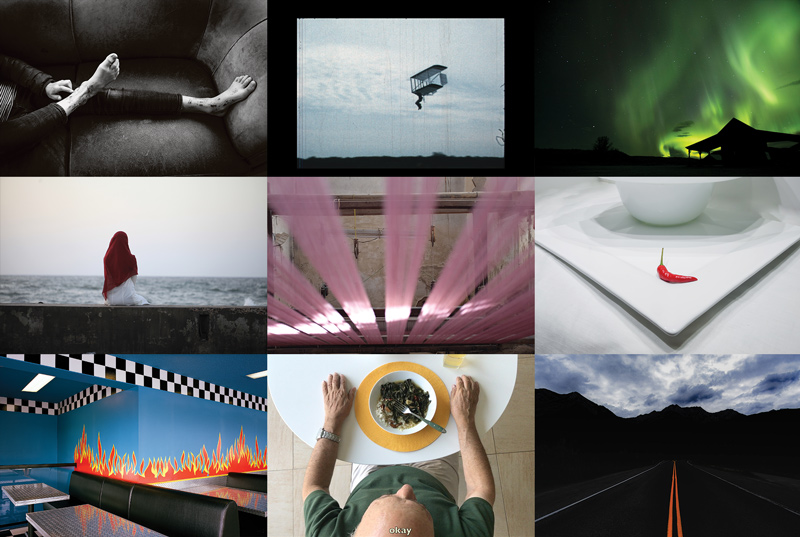Major Research Project (MRP) - Abstracts

Photo by Samantha Wehbi '12, Here,There, and Nowhere: Imaginary Geographies of Translocal Spaces.
Students in the Documentary Media MFA program create both a visual project and a support paper for the project, as part of their MRP. The following abstracts are from the support papers and provide a concise summary of the concerns addressed in the Major Research Projects.

In Iran, having a dog- as a pet- has been illegal based on an unwritten law for many years. However, in January 2019, walking dogs in public and carrying them in cars became legally banned. In this major research project, I will examine the existence of pet dogs in Persian cultural history and the lifestyle of dogs and their owners in the country in the present day. As the ban is based on religious laws, I will also show two different interpretations of Islamic rules related to dogs. The Forbidden Dogs, a documentary film and companion to this paper is a visual ethnography research project exploring the experience of having a forbidden dog and why their owners choose to make a choice that is illegal, thus adding more stress to their already stressful lives- in terms of lacking freedom, financial problems due to inflation, unemployment, and the precarious state of the country's economy. This MRP is about all these lovely creatures in the city I was born in and shows how the inhabitants exercise their freedom, struggle with various problems created by the religious governors, how resilient they are, and how they try to be happy despite the circumstances.

This paper is written to support the film One World is Writing, a short documentary that uses reenactments to depict the life and work of writer Shirley Jackson while also making connections between Jackson‘s fiction and the filmmaker‘s life. The first section of the paper gives historical and literary context to Jackson‘s work and explains the process of selecting excerpts from her letters and fiction. It also examines the process of pairing Jackson‘s fiction with personal stories from the filmmaker‘s life. The Documentary Relevance section highlights scholarly research related to documentary reenactment and autobiographical filmmaking. Influential documentaries and theatrical productions are also described here. The Methodology section details the technical, artistic, and narrative choices made during the filmmaking process of One World is Writing.

This paper discusses the documentary film La vie est un jardin as a piece that explores counter-capitalist practices of fostering cultures of care derived from ecofeminism as a means to equip Millennials and Gen Z with philosophies of mutualism to find strength when facing an uncertain future caused by climate chaos. The paper outlines the specific crises that Millennials and Gen Z face and their relationship to colonialism and Western capitalism. It discusses ecofeminism as a framework to reconnect with the land through backyard gardening to guide community-building initiatives. The documentary film is discussed as a form of memorial and the community-building practices it highlights. It shares its relevance to existing bodies of documentary work such as Agnes Varda and John Wilson for its autoethnographic lens and cinema verite approach. The methodology of the documentary outlines the community-building practices and philosophies that were part of making the film.
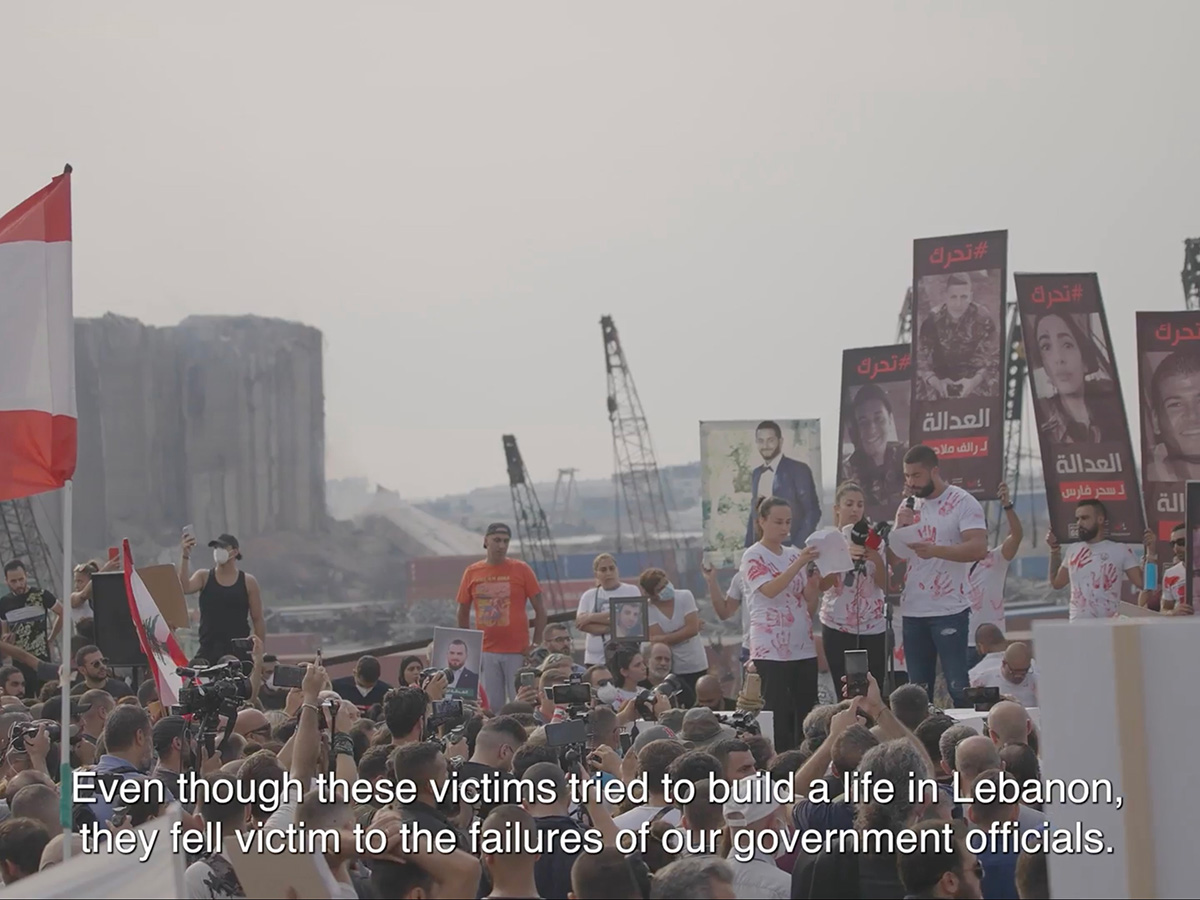
On August 4th, 2020, one of the most powerful non-nuclear explosions in history tore through the capital of Lebanon, Beirut. Platoon Seven, a team of nine firefighters and one paramedic, were sent to the port of Beirut to prevent this catastrophe from occurring. They were unaware of the presence of 2,750 tons of ammonium nitrate. The Lebanese people witnessed this disaster and were left traumatized. Almost three years have gone by since the explosion occurred, and justice remains a myth. The family members of Platoon Seven have not lost hope. They continue the fight for justice against the corrupt Lebanese government. The following research paper discusses a documentary film that honours all ten members of Platoon Seven and follows their family members through their ongoing battle for justice. They are faced with several challenges in a country that has suffered more than 32 years of corruption, fraud, and chaos.

My project attempts to reveal and shed light on the current American socio-political
moment through a visual investigation of the country’s heartland. There are two key questions at the heart of my analysis. First, what does freedom mean, and second, what does it mean to be an American today? These questions have been taken up by photographers and philosophers alike, with notable projects being Robert Frank’s The Americans 0r Jean Baudrillard’s America. While these questions have been approached before, the current socio-political climate in America marks a critical juncture in its path to the future. By integrating an image-based and empathy-based approach to research, this project aims to resist the pernicious polarization regarding national identity in the United States.
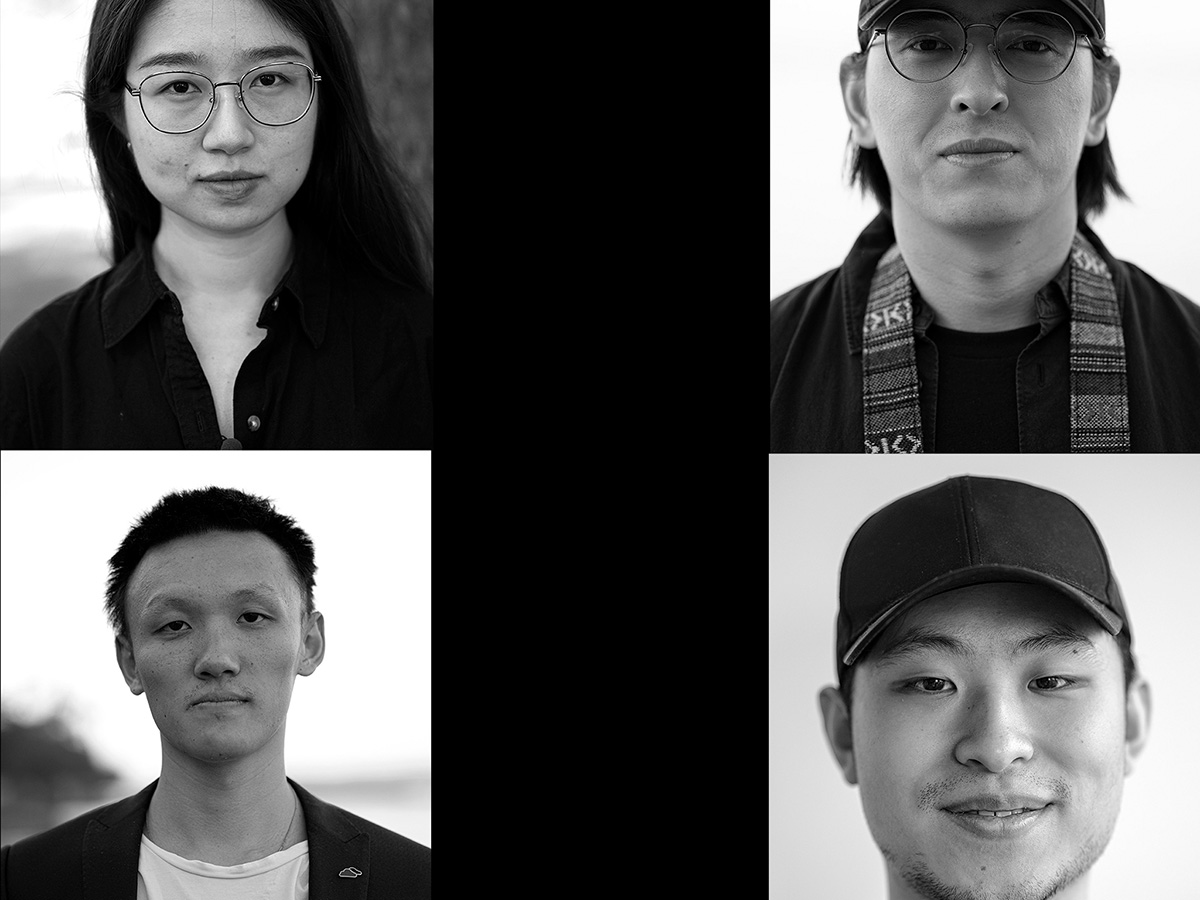
As a Chinese international student, I have always wanted to create a project about the Chinese international student community, as there needs to be more resources and discussions surrounding this topic. Through making this MRP project, my goal is to dive deeper into the motivations behind why Chinese students choose to study abroad and recognize that their reasons to leave are often mixed with complex social, cultural, and sometimes personal factors. My project focuses on Chinese international students born in the 1990s, specifically those who have received post secondary education in Toronto, Canada. This is due to my own experiences living in both China and Canada, as I have heard numerous stories from my fellow Chinese students during my time here and have a unique perspective on the differences between the two cultures. Therefore, I have included myself in the project as this MRP is also about my journey and study abroad experiences. The MRP project consists of two main components: a photography series featuring full-body portraits of my participants and a video containing all the interviews I have conducted with the participants. Through making these visual elements, I hope to provide a more comprehensive and positive representation of the Chinese international
student community and bring attention to the diverse range of experiences and
motivations that drive students to study abroad.

The documentary film and its accompanying paper, You’re the Life of Me, is an ethnographic project about Black music set in Jackson, Tennessee, and follows several musicians as they live and perform in both Jackson, Tennessee, and Detroit, Michigan. By foregrounding the lived experience of its protagonists and their histories around musical pedagogic tradition coupled with the affective power generated by performance by and for Black communities against various physical and imaginary geographies that encompass the space that Black people in the American South navigate, the film looks to understand the liminality of cultural exchange and the power of music to find freedom.

Brash and culturally confident, with an exuberant take on fashion, art and architecture, the Canadian-made program Fashion Television broke new ground whilst earning numerous vulgarity complaints to the CRTC. Anachronistic now in terms of inattentiveness to issues of body, race and class, Fashion Television nonetheless represented a liberatory gateway for many people—breaking down barriers around sexuality, clothing and presentation of self -offering inside glimpses of change being worked out in creative spaces at a particular moment. Carton d’invitation is a documentary and a practice-led research project extended by an interactive media library that tells the story of my experiences as Fashion Television’s “invisible” reporter in Paris from 1986 until 1998. While foregrounding a record of Canadian cultural accomplishment that might otherwise be lost, maternal subjectivity through the use of home movies is integrated into the film’s narrative. Foucauldian theories of power and surveillance emerge around questions of embodiment in this study.
 - Lourdes Lasala.jpg)
Music has always been a part of the everyday lives and development of people. Individuals turn to the words of their favourite musicians for comfort and go to concerts to feel a sense of community. Musicians offer their lyrics to portray the messages that they are trying to say and use concerts as the place to do so. What happens when this space becomes queered? Oh, to Be Seen is a project that looks at the importance of community and togetherness that is bound by music. Looking at the queer and trans music scene in Toronto, Ontario, this project aims to portray the role that music plays in the lives of LGBTQ+ individuals and seeks to discuss the importance of a queered concert space. Through an autoethnographic approach, this project aims to depict the unique way music brings us together through vulnerable moments of connection, belonging, expression and freedom.
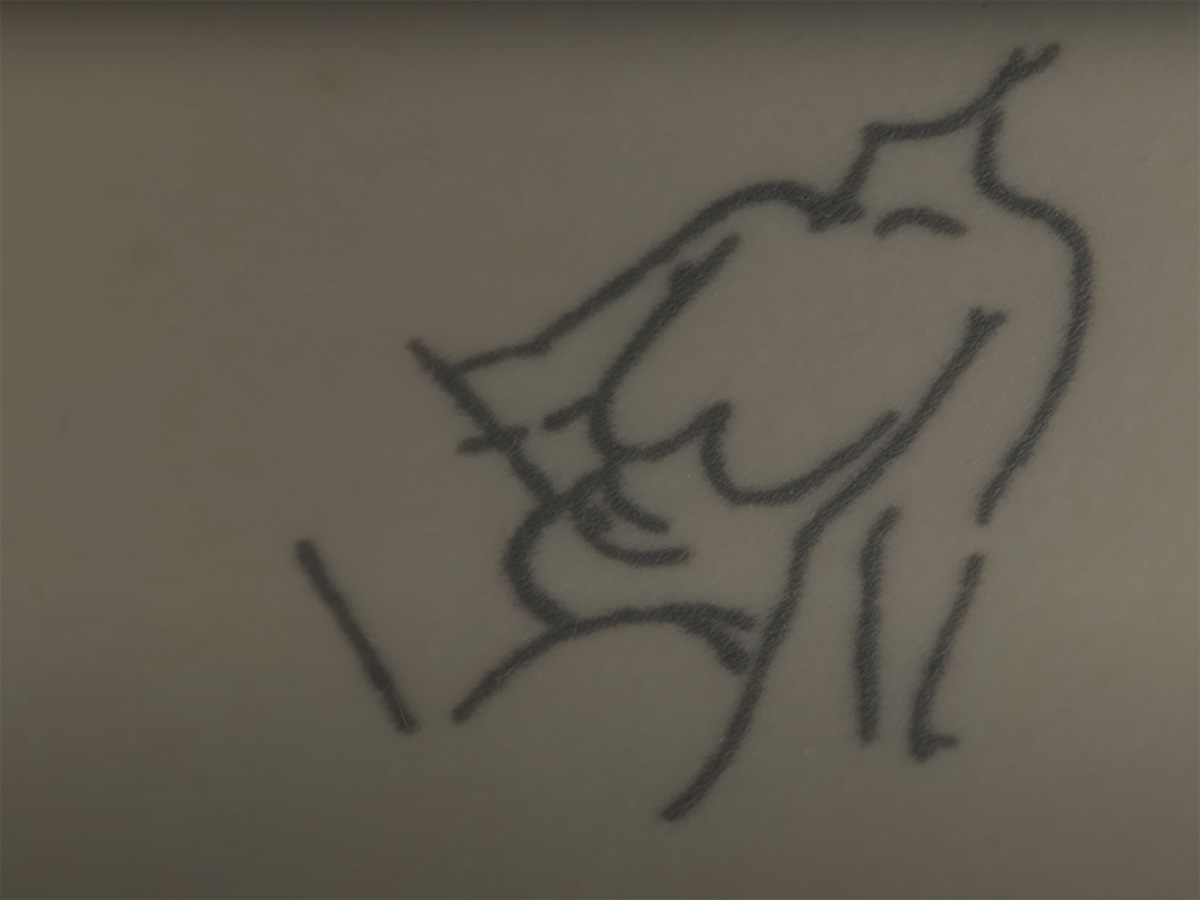
Skin Deep is a short documentary film that explores the relationship between tattooing and healing, primarily through the method of scar cover-up tattoos. Through interviews with five individuals who have received scar cover-up tattoos, a dermatologist, and a tattoo artist, the film analyzes the relationship between a tattoo and a scar and dives deeper into the reasons why we choose to show certain marks while hiding others. Visual metaphor and reenactment are also used to expand on the many benefits of body modification and the ways in which it can help people reclaim their bodies. This accompanying paper will focus on the history and social relevance of body modification as a healing practice and examine various frameworks through which tattooing practices can be viewed. It will also serve as a support piece for the film and will explain the methodology, influences, and overall process of the work.

This MRP takes the form of a gallery installation meant to materialize a research process driven by archival images from across North America, along with my own digital photography on location in New York City. My subject is the interaction between the 1939 World’s Fair in New York City, the sensitive land and toxic landfill it was placed upon, the people who have engaged with the space, and the onset and context of World War II. The year is 1939, and the place is Flushing Meadows Corona Park in Queens, New York City. To this project, the fair in part represents a full court press on the part of the federal, state, and civic governments to establish a
singular sense of “normal” in the name of population control. In this context, the side-show stands in opposition to imposing neoclassical icons that dominate the skies in reliable geometrics.

This paper outlines the creative process of The Chinese Apparition in Minnesota, how it is situated in different genres of documentary film, and the experience of mourning during physical displacement. The Chinese Apparition in Minnesota explores the sense of belonging and loss for young Chinese immigrants in America and Canada. Situated within realms of essay film, experimental cinema, and poetic documentary, the film meanders between documentary and fiction, recollection and dreams. Personal experiences of loss interweave with the public while differing definitions of home become indistinguishable. In the film, a young Chinese immigrant from Minnesota is trapped in Canada and unable to see their dying grandmother back home. As the Zhongyuan Festival approaches, premonitions masquerading as recollections, forgotten folklore, and reality slowly merge into one. The main character saunters like an apparition who does not belong, wandering into the dreams and memories of herself and her family.

Double M Country is a film documenting Carrie Davis’ return to Moose Factory after a loss of land, language, and culture due to the Indigenous child removal system commonly known as the Sixties Scoop. Davis uses a walking interview with her uncle, Emmett Sack, and autoethnographic first-person filming to let audiences feel as though they are on the journey with her. While the intended audience is, first and foremost, those who were taken during the Sixties and Millennium Scoop, Davis invites everyone along to enjoy the reconnection and reflect on the losses due to residential schools, the Sixties Scoop, and colonialism.
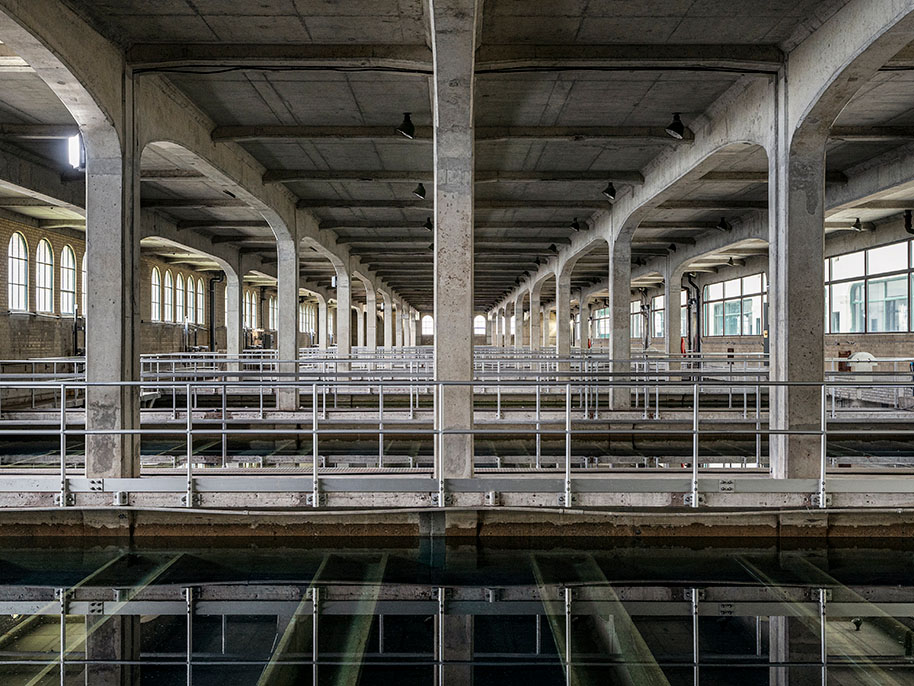
This photographic project is a visual exploration of the Toronto wastewater system. It aims to take the viewers into the infrastructure, which is buried beneath our feet, and make visible the system that we rely on, but take for granted.

During and following the COVID-19 pandemic, there has been an increase in social reflection occurring in the US and Canada. In part, we have seen this manifest in Canada as an increasingly critical focus on public monuments, evidenced by the destruction of a John A. MacDonald statue and the changing of Ryerson University’s name. This critical focus is investigating how our representation of the past, especially racialized histories, affects people in the present. As an addition to the ongoing reflection on the relationship between public monuments, present-day race relations, and the representation of racialized histories, Monumental Erasure is a documentary film that explores the ways that Black historical narratives are erased and underrepresented in Canadian public monuments, and investigates the resulting social impacts. The project focuses on public monuments related to the Underground Railroad and Black settlement in southern Ontario, primarily in the towns of Fort Erie, St. Catharines, and Niagara-on-the-Lake.

This Major Research Project delves into the symbiotic relationship between Indigenous knowledge and contemporary documentary filmmaking, using the film "All Sacred Things" as a primary case study. Centred around the poignant narrative of the Ojibway Spirit Horses and the personal reconnection journeys of Indigenous college students, the essay underscores the imperative of utilizing Indigenous methodologies, especially the act of listening, in filmmaking. Drawing inspiration from influential Indigenous voices such as Alanis Obomsawin and Elder Marie Short, the project elaborates on the transformative power of genuine storytelling rooted in tradition and relevant to current Indigenous experiences. Through a rigorous analysis of sharing circles, discussions on identity and representation, and the broader themes of decolonization and reconciliation, the essay offers insights into the potential of films like "All Sacred Things" to bridge cultural gaps, challenge colonial narratives, and amplify authentic Indigenous voices. The research highlights that true reconciliation in the film is possible when Indigenous knowledge systems guide the narrative, fostering deeper understanding and appreciation.

Jiabao & Jiaping is a short documentary about my grandparents. My grandmother is called Jiabao, and my grandfather is called Jiaping. They have very different personalities and living habits, and the marriage did not make them adjust to each other. After getting married for around fifty years, they decided to live separately in 2014. The film focuses on their current living situation as two people living by themselves. The film explores their experiences in youth, the shaping of personalities, and their family histories through interviews and archives.
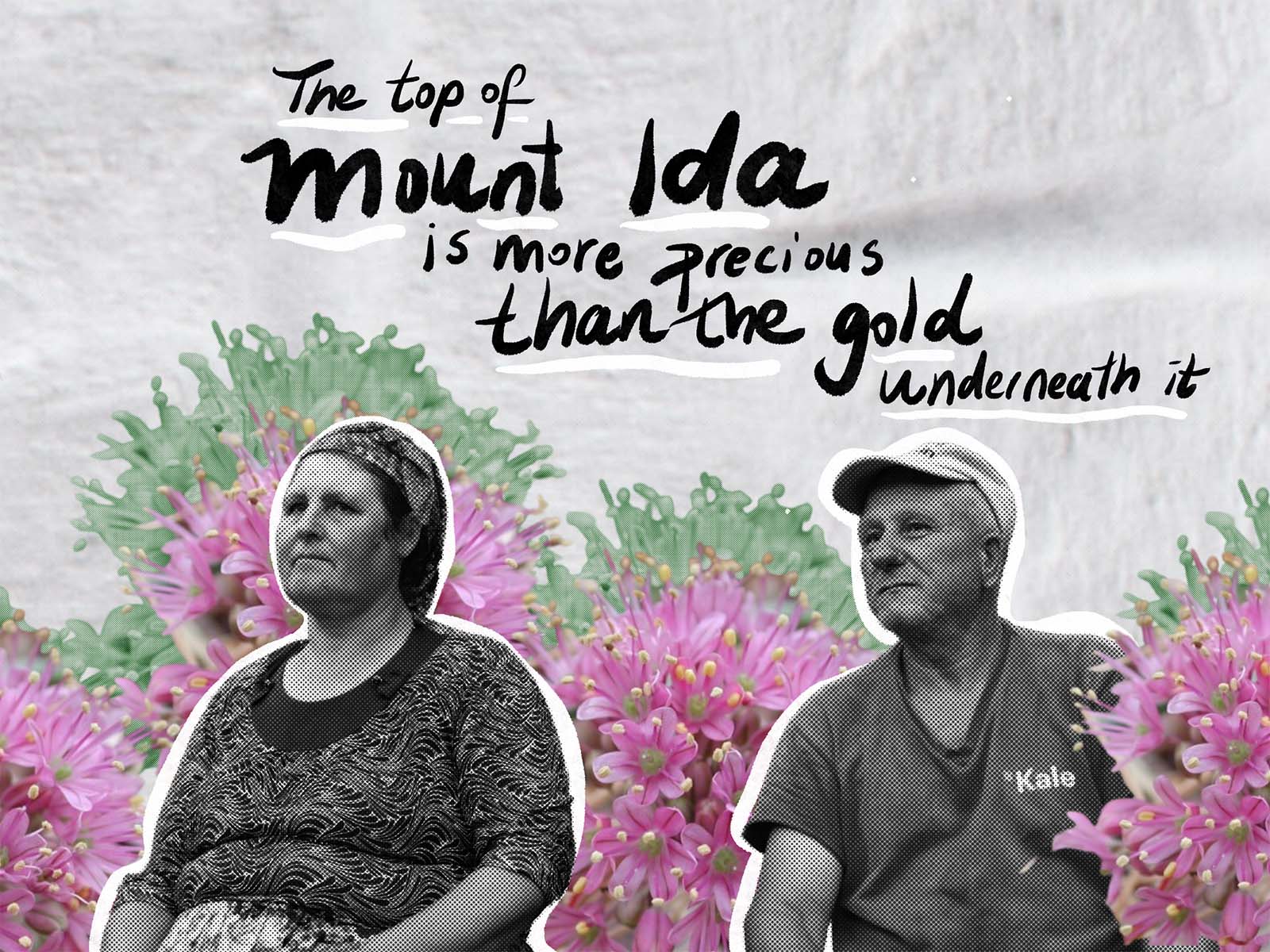
Protectors of Ida is an Instagram-based episodic documentary created in collaboration with the people of the Ida Mountain range. It addresses the aftermath of the local resistance movement against a Canadian gold mining company within the broader perspective of the history of environmental resistance in Turkey. It consists of six episodes, each focusing on a different aspect of what being a protector means by posing the question: “What is the cost of protesting for the local residents of the Ida Mountain range today, and what are the ecological, political consequences of fighting for their land?” This multi-media exploration exists within the space of co-creative documentary practices, bringing in archival and interactive elements to its storytelling provided or created by various community members who are the co-creators of this experience. It functions as an online public space, providing a platform that brings together the various faces of the mountain range.

Over the past decade, there has been a sharp increase in the number of children and adolescents identifying as transgender. The simultaneous rise in gender clinics to provide care to these youth at pediatric hospitals worldwide has resulted in much controversy. On the one hand, critics of social and medical transitioning in such youth will stress the inability of children and adolescents to make significant decisions regarding the future, especially with the lack of research concerning the long-term effects of hormone blockers and the irreversible effects of cross-sex hormones. On the other hand, proponents will cite the capacity of children to make these decisions and the immediate psychological harm of not providing such care. While documentaries concerning gender dysphoria in children and adolescents have increased in the past decade, there are few that privilege how physicians come to understand transgender care and how such knowledge informs the unique relationship among transgender children, their parents, and their physicians. True Colours: Conversations on Gender is a special meditation on gender by a physician-filmmaker. The film documents the conversations among caregivers, physicians, and researchers regarding pediatric and adolescent transgender care against the highly controversial backdrop of ideology and gender politics.
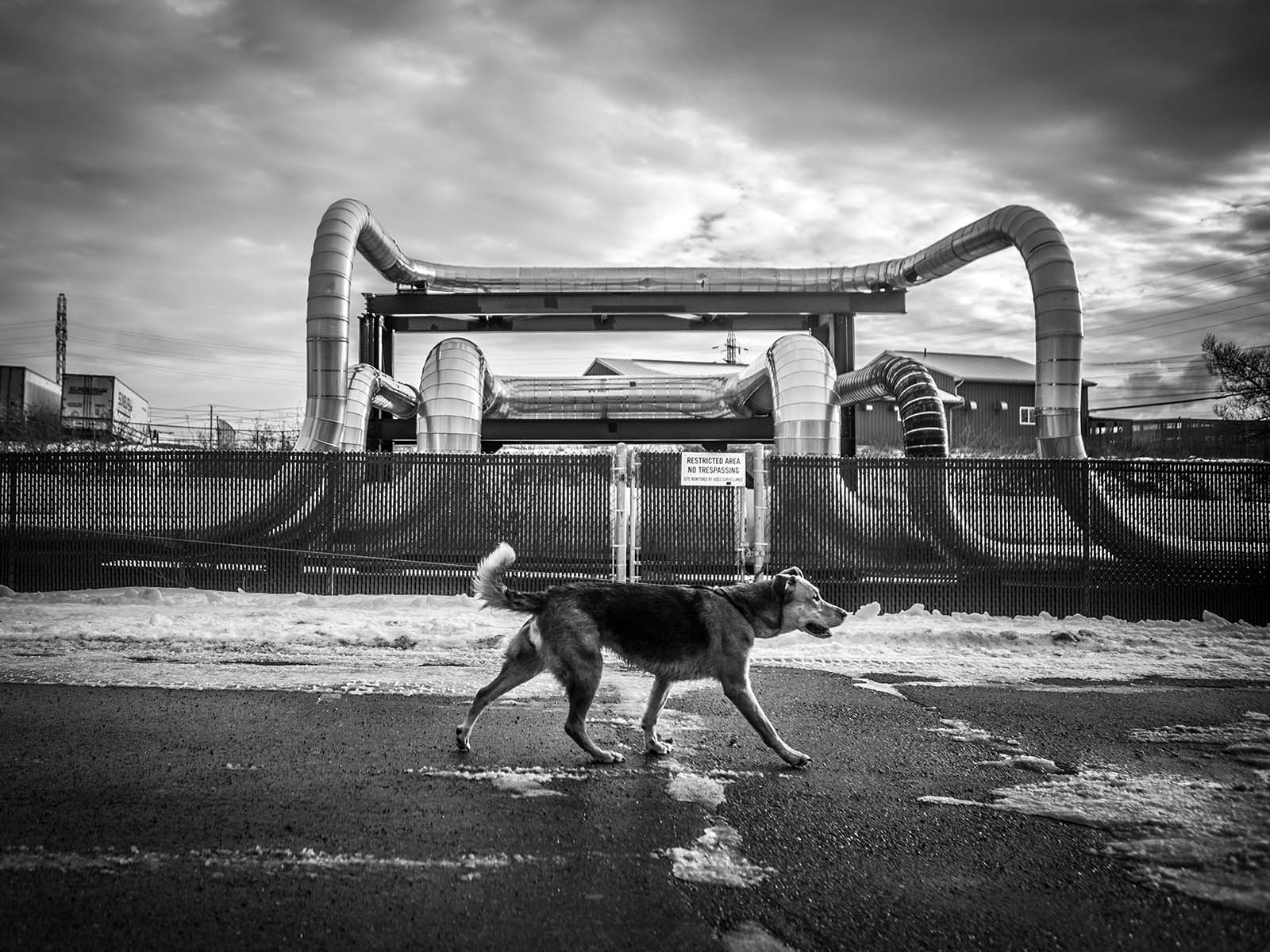
This MRP paper is in support of a photographic project entitled The Cloud Factory, presented as an exhibition at The Image Centre. The Cloud Factory explores issues of environmental classism in my hometown of Saint John, New Brunswick, a city home to Canada's largest oil refinery. The paper begins with an introduction of the work and a description of the issues represented in the photographs. The second chapter focuses on methodology and how the selection of images differs based on the public presentation method. The first section of the third chapter addressed the project's relevance within the documentary tradition with a specific look at photographers who have employed a long-term social documentary approach. The second part of the third chapter looks at those who have used the documentary method known as the "toxic sublime," a mode characterized by the beautification of environmental harm.
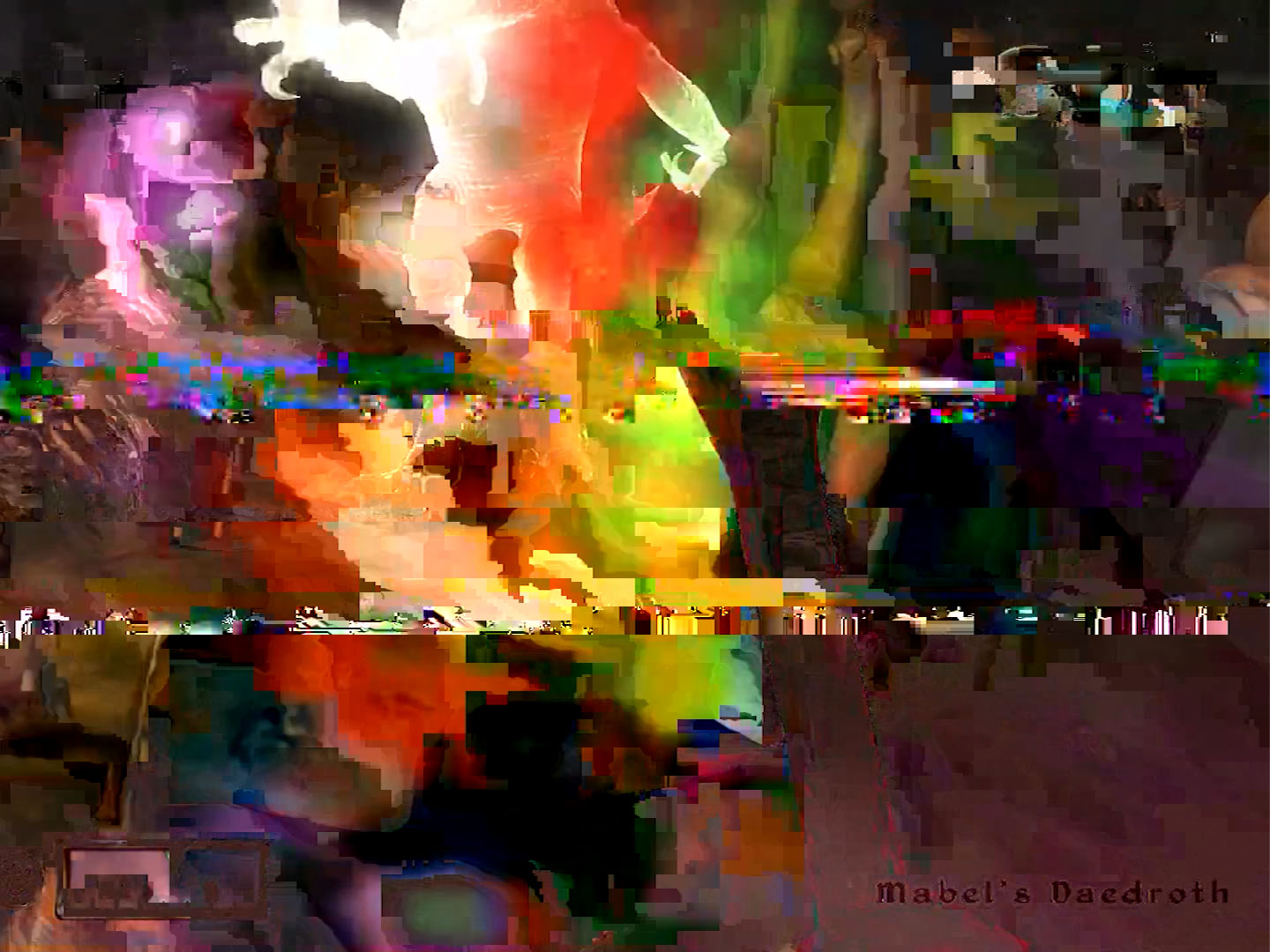
CHA_OS is a film about magic. But more than that, it is a film about what drives people to seek out magic in the world around them, about the innate desire for meaning within all humans. The film follows me as I undergo two journeys in parallel: one to become a powerful spellcaster in a nostalgic videogame and another to discover what practicing magic really looks like in the 21st century. From within the confines of a computer, the film travels through a realm of ideas, digitally encountering people from around the world who introduce me to a practice known as Chaos Magick. Along the way, I meet YouTube-based academics of the occult and practitioners alike, learning about a range of magic’s appearances in today’s world, from anti-reality activism to machine-learning magic to ritual breakfast. Put together, a picture begins to form, suggesting that magic isn’t a thing you do or believe in; it’s a way of looking at the world.
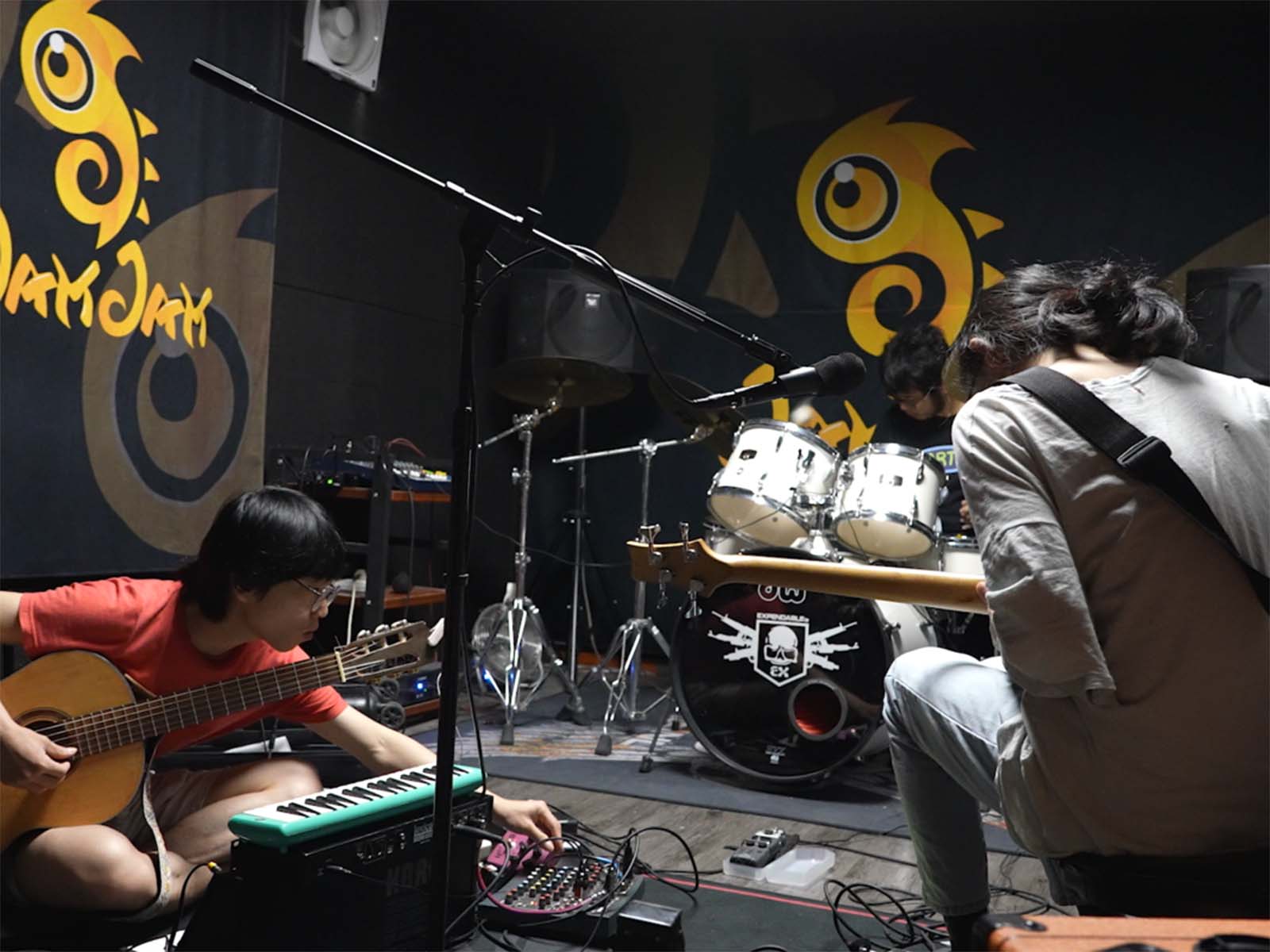
This Master Research Project paper supports the short documentary film One Time Making Friends, a sociology-based music documentary about the unconventional lifestyle of three young experimental musicians living in Guangzhou, China. The film relates to the music documentary genre with a strong emphasis on sociological perspectives by studying the main characters as young musicians trying to break new ground and live an alternative lifestyle in contemporary China. This paper provides a deeper view of the cultural traditions, intensifying competition in the job market in current Chinese society, and, more importantly, a state of Chinese youths filled with passion, love, and idealism under the cover of experimental music. The film aims to inspire young adults who struggle with conflict with their perplexity and persistence in this world. Who are we, and why are we alive? The answers may cost us a whole life to obtain.
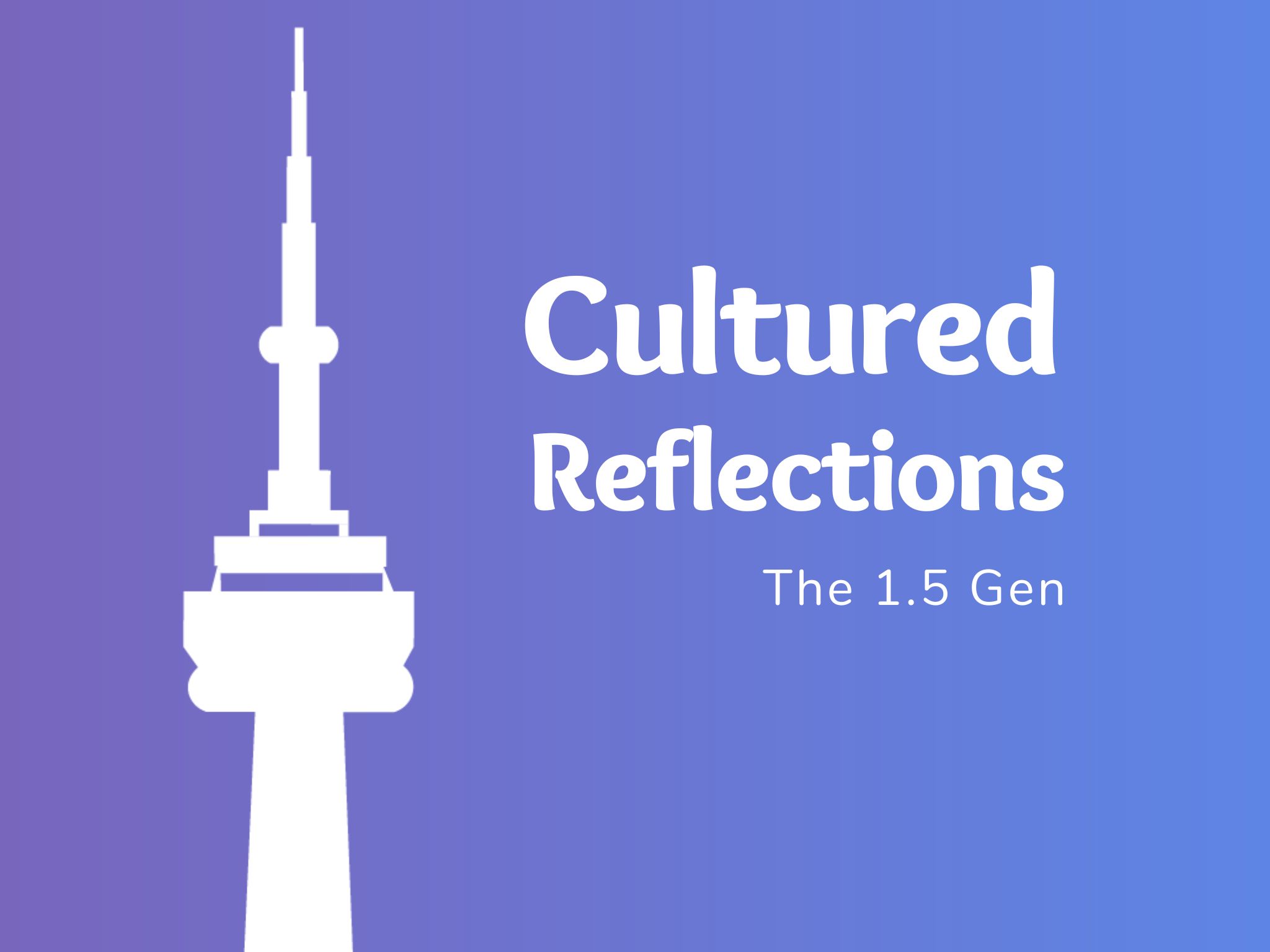
Cultured Reflections: The 1.5-Gen explores the factors contributing to identity formation in 1.5-generation Canadian artists, people who were born outside of Canada but immigrated to Canada during childhood or adolescence. The project draws on interviews with six emerging artists of diverse cultural and artistic backgrounds to address the impacts of migration on the sense of belonging and the experiences of living in culturally diverse Canada. The main characters are Cheyenne Gold, Denirée Isabel, Raia Fernandes, Rea Sweets, Tamara Masa Vojinovic, and Wandy Cheng. All participants are female or non-binary, under thirty, and migrated to Canada during childhood or adolescence, categorizing them as 1.5-generation Canadians.

UNDO REDO explores the adaptive reuse and revitalization of Christian religious architecture by diverse faiths. These heritage spaces are transformed layer by layer through a veritable “Undo and Redo” that results in an architectural palimpsest. The original, however, is mainly evident and co-exists symbiotically with the altered. Explored using digital photography and sound, the project looks for the essence of the transformation through juxtapositions of architectural elements coupled with the religious and sociocultural practices of the new inhabitants. Audio recordings from these spaces add a sensory element that virtually transports the viewer into the space. The images are a personal reflection on the sociocultural reasons behind these transformations. Capturing layered nuances of cultural memory, religious identity, and community, this series of spatiotemporal architectural images chronicle the current state of transformation of architectural heritage in Ontario and Québec’s ephemeral, multicultural, and diasporic landscape.

Barn Down is a film that seeks to show how the Eastern Townships of Québec have historically been represented and imagined. The emphasis placed on the beautiful, the pastoral, and the quiet in those representations continues to reinforce an essentialized version of the Eastern Townships that lacks a sense of connection between the different historical, cultural, or economic events that have always been at play in shaping the region. By filming the process of an old wooden barn being torn down and replaced by a modernized one and situating that process within the broader poetic landscape of the Eastern Townships, I ask that we consider how we construct our landscapes. I situate my work in the context of landscape studies, geography, and sensory ethnography. I contextualize Barn Down by studying the fixed frame and other currents in contemporary documentary studies.

“The Haweaters” examines the development of Manitoulin Island, ON, as a colonial micro model upon which Canada and the genealogy of its multicultural archetype were shaped. This is reflected through the country’s modern neoliberal establishment, which advanced first through colonialism, then the industrial revolution and capitalism, and eventually a set of immigration policies redefined by Prime Minister Pierre-Elliott Trudeau’s notion of state multiculturalism. This seven-year photographic endeavour embodies a visual poem under the guise of a photobook – a cautionary tale of a common plight across numerous countries built upon the methodic transmogrification of their colonial legacies. Inspired by Michel Foucault’s notion of historical genealogy, the photobook blends photographs and collages as a critical strategy to allegorize the profound relationship between Manitoulin’s unspoken past, traumatized present, and the questionable origin of Canada – too often romanticized through the pioneering epic of “settle and prosper.”

The documentary photo book "Home" contains 24 short stories, named after 24 Chinese Solar terms, about my family's immigration experience of coming to an unfamiliar country. As a homesick child, I initially didn't understand my mother's choice to emigrate to Canada. The project represents all the key places and essential moments in my memories over the course of 17 years living in Canada and recreates the journey as a first-generation immigrant child growing up. Moreover, the process of looking for a home and the truth has helped me find identity and belonging in Canada.
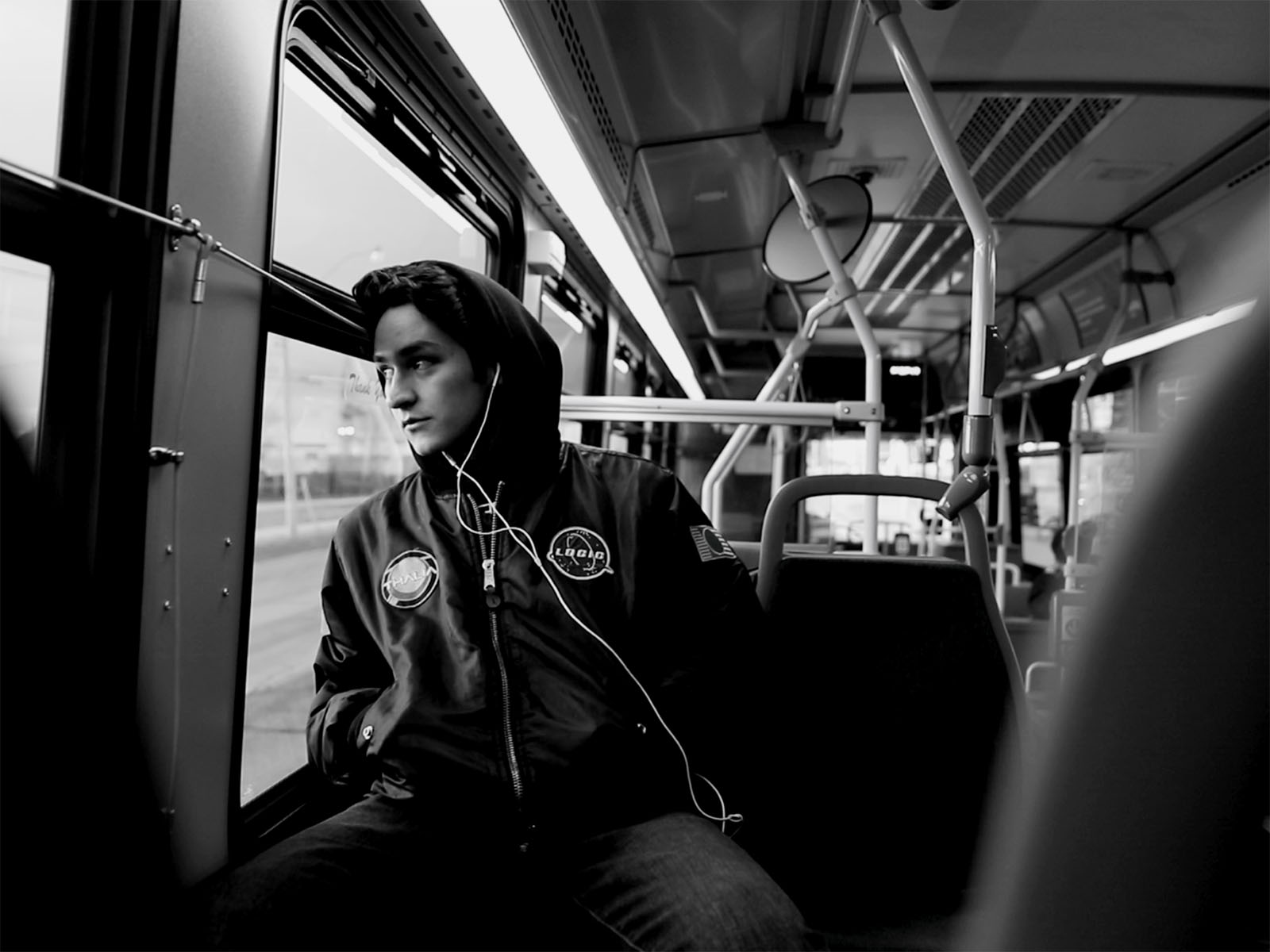
Luke Galati’s work, When We Reach Out, Who Should Respond?, is a documentary film that asks the question: who should be the first responders for crisis calls for people experiencing mental health issues in the Greater Toronto Area? This film looks into if the police should be the ones who intervene during these high-stakes moments. The documentary is told through the perspective of Luke Galati, a filmmaker and journalist who lives with bipolar and has had a first-hand account of the police acting as first responders to a mental health crisis that he went through. The film interviews community members, advocates and policymakers to understand what is changing and the future of mental health crisis response in Toronto. The film also reflects on instances in the past where tragic outcomes have resulted from police response. This film seeks to explore what is the best model for a compassionate and effective policy surrounding helping individuals in mental health crises within a Canadian context.

Over the past century, a visual language has emerged that informs but also constrains how documentary photographers depict the violence and repercussions of armed conflict. Using various Artificial Intelligence tools, including Google's BigGAN, Dall-E Mini, Dall-E 2 and Midjourney, my Master's Research Project explores the range of expression of machine-learning image generation rooted in keywords associated with the documentation of war. The images I have excavated may seem naive, perverse and disorienting to viewers. I argue that there is an essential truth in these data-based, algorithmic reconfigurations. Taken collectively, they highlight problems inherent in the visual representation of war.

The present paper is in support of the multi-media installation Wonscotonach Lives. Wonscotonach (commonly known by its colonial name, the Don River) is a 38km watercourse in Toronto's east end. The river formed at the end of the last glacial period and had been a site of human activity for thousands of years prior to the establishment of the industrial city, which led to ecological pollution and neglect. Wonscotonach Lives comprises a multi-media archive of the river and its valley at a moment in its history when the past is being reckoned with, and the future is envisioned. Through conversations, observational videos and photographs, it considers the river valley a site of contrasts and explores some of the many stories emerging from this place. Serving as a case study for urban rivers across the world, the project and supporting paper also address a more significant issue facing post-industrial cities of the 21st century – the ever-changing relationship between human and natural environments.

Plantillusion is a form of personalized nature documentary that aims to rectify the misconception that house plants are mere decoration. Its images are created under the most peculiar circumstances. Coerced by the isolation and physical restrictions of COVID lockdowns, a new sense of intimacy has emerged between me and my houseplants. This work is simultaneously a diary, herbarium, private family album, and self-reflection essay. Above all, it is a visual documentary that revisits and reinvents the relationship between me and the plants I personally care for. Plantillusion primarily focuses on human attentiveness towards plants that live in close proximity to us. Additionally, it reexamines the role of humans as a social collective within the natural world. The hustle and bustle of human activities have long been muting the subtle whispers of our green neighbours. Perhaps the delicate details of this documentary could inspire insight and a new form of perspective as to how we should function as an ordinary species — a subservient component — amongst others on this planet.
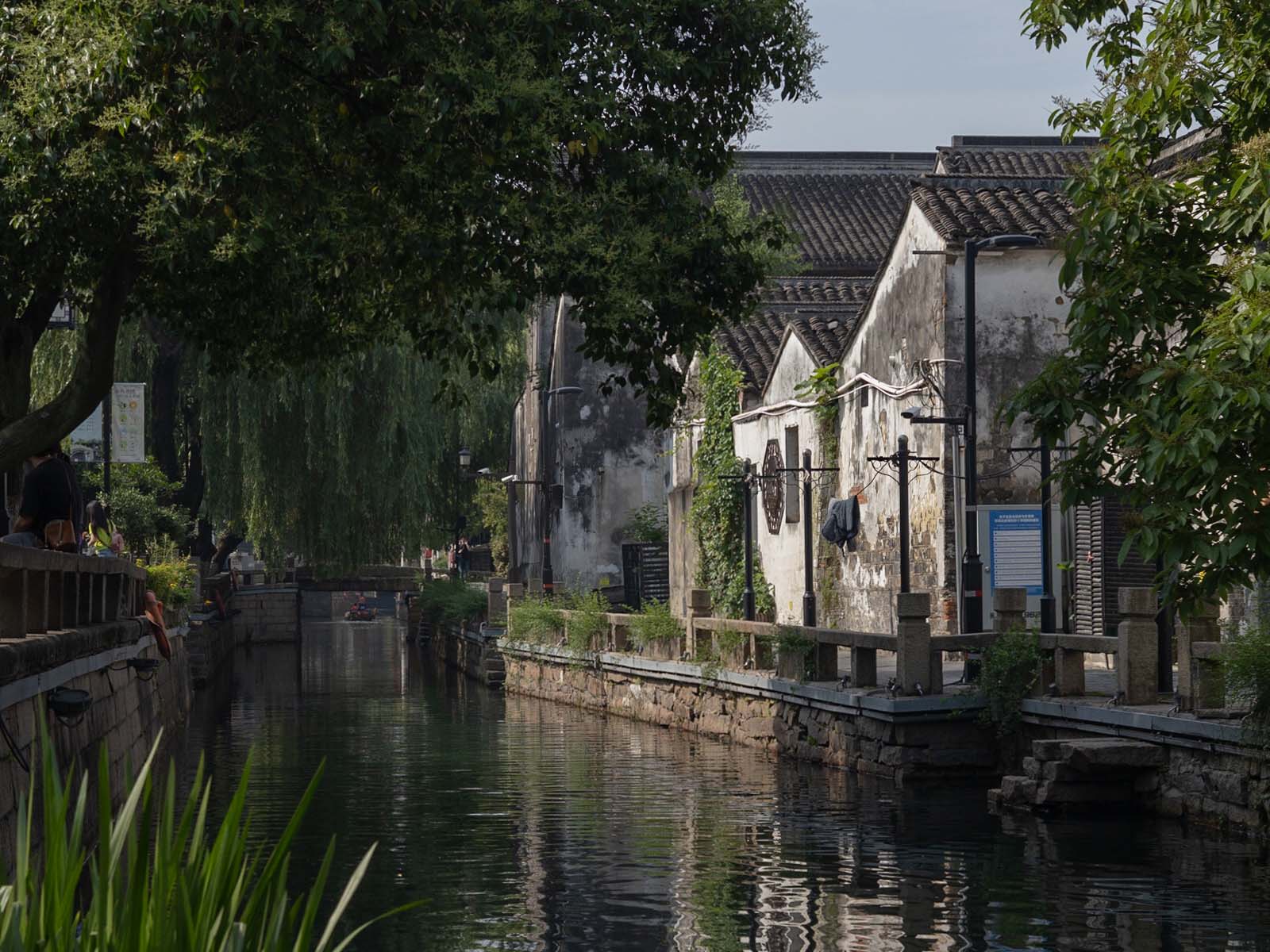
Suzhou is a city in southeastern China and has been called the “Venice of the East.” This city was built upon and developed along the Pingjiang River, located along the Pingjiang Road in Gusu District in Suzhou. With its 2500-year history, the river has witnessed the changes of Suzhou from ancient times to the modern era. Near the historical Humble Administrator’s Garden and the new Suzhou Museum designed by Leoh Ming Pei, the Pingjiang River is the city’s link between old and new. Pingjiang River is a photography project combining landscape and street photography that aims to explore the Pingjiang River and reveal the consequence of the historical city preservation policy. Since ancient times, the river has served as the main space for Suzhou residents’ needs for transport, drainage, defence, fire isolation, domestic water, and climate regulation. Under modernization development and historic preservation, the river is not just a living space but also a famous tourist site. Pingjiang River aims to show the complicated status of the Pingjiang River and address the systemic question regarding urban planning in the historical context. This is accomplished by offering an observational window into the environment and human activities. Pingjiang River hopes to provide an in-depth and comprehensive look at the complex city space.

In prevailing Hindu practices in Nepal, a menstruating person is considered “untouchable.” Various restrictions are placed on the menstruator, and the extent of these restrictions varies between families and communities in and outside of Nepal. Para Sareko is an intimate portrait of a Nepali diasporic family living in Scarborough, Ontario, Canada and their experiences with Nepali menstrual customs. The documentary is inspired by the filmmaker’s experiences with menstrual restrictions, supported by research and brought to fruition after a search for practices of Nepali menstrual restrictions in Toronto. The film includes participatory and observational modes of representation. It is not only a film about Nepali menstrual customs but also a portrayal of a diasporic family keen to keep their culture alive while also fitting into Western culture.
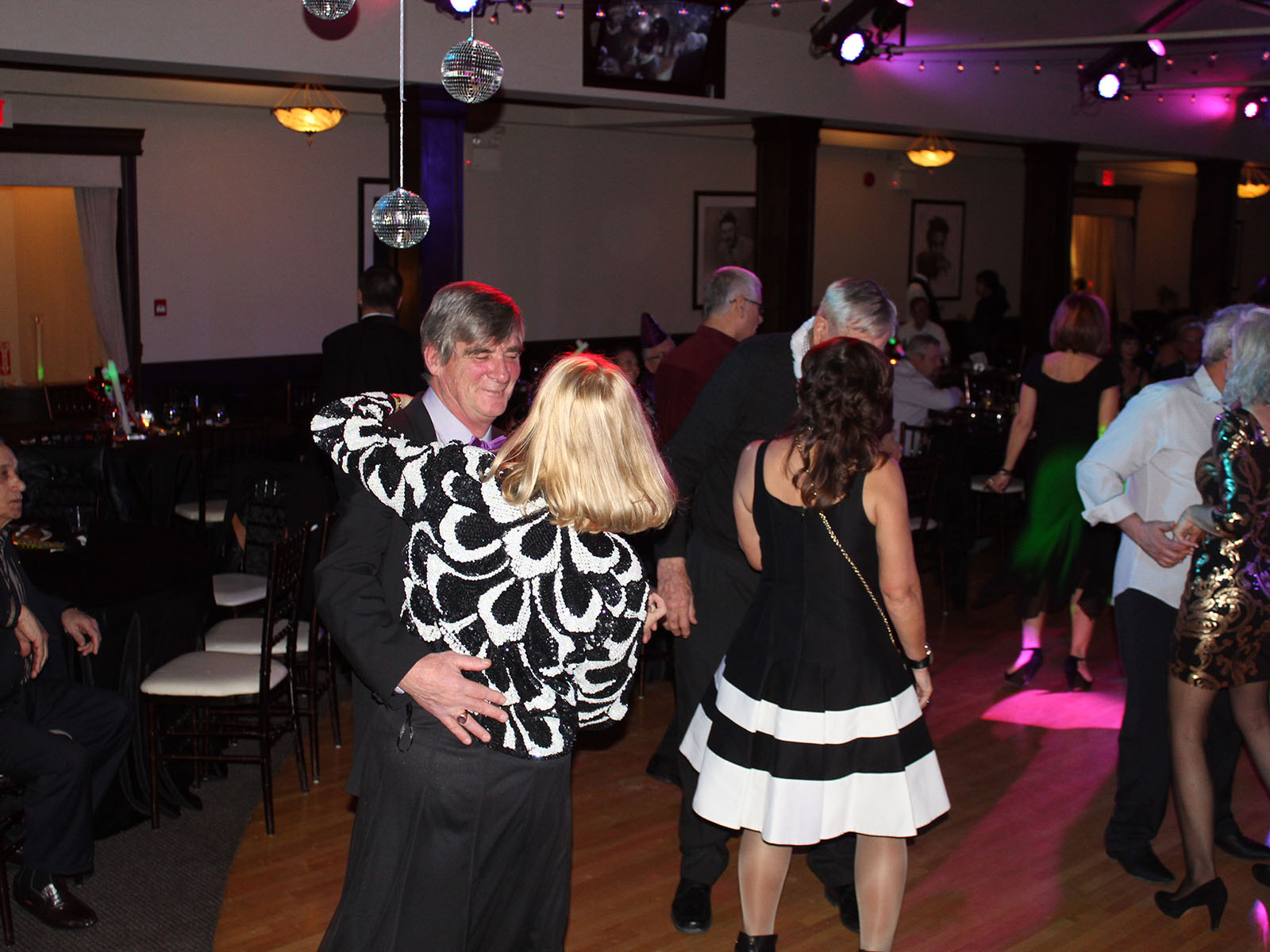
This paper is written in support of my film, Dancing Through the Decades. It gives background and context about Single Professionals Network, the history of the Toronto dancing scene, and the benefits of dancing and finding love later in life. The film is about the community of people involved with the Single Professionals Network, a company geared to baby boomers looking for a night out of dancing and searching for love and friendship. It is told from my perspective as the daughter of the business owners, Peter and Diane Finch, using an extensive collection of images and videos I captured throughout my childhood and teenage years.

This project is about my grandfather, who I hardly knew but remember well from family stories. Through interviews, home movies, and exploring places and objects that evoke sensory memory, I've tried to paint a better picture of Babajan's life, who lived during a significant time in contemporary Iranian history. The socio-political changes before and after the Islamic Revolution of Iran significantly impacted my grandfather's life and, therefore, my life. My grandfather, who was a worker at a printing shop, managed to become a print house owner, build his own house, and change his social status from a lower-class worker to an upper-middle-class entrepreneur, which ultimately made it possible for me to move and live in Canada. Through my film and supporting research, I have also tried to subtly highlight some underlying social issues affecting my family and Iranian society.

This MRP is comprised of a medium-length documentary film and an accompanying support paper. The visual component was filmed in Aylmer, Quebec and Ottawa, Ontario, over the summer of 2021 with a selection of subjects, including a group of school-aged children and their parents; a 92-year-old woman; beachgoers; a poutine shop; a soup kitchen/safe injection site; and a Catholic church. The film examines how the pandemic has impacted these people. The paper provides additional background information on the filming and discusses key scenes and techniques used in the film. It also locates the film within the scope of documentary relevance, considers the ethics of my filming, and provides a reflection on the methodological process.

This paper examines trauma in the world of theatre. Emotional trauma is caused by a deeply disturbing experience, or witnessing it, which has deleterious effects on the victim’s sense of self and their mental well-being. This paper focuses on emotional trauma caused by harassment, discrimination, or mental abuse, which need not be recurrent. The paper draws on research from Canadian and international artists and scholars who reveal the problem of blurred boundaries and, in extreme cases, their absence as inherent in the theatre industry. Behind The Curtain, a documentary film and companion to this paper, uses personal stories and theatrical narrative to show the struggles artists face when an audience is not watching, that there is a hurt that can no longer be hidden. The film casts new light on this problem by situating it within the broader context of the #MeToo movement. Behind The Curtain employs interviews with victims of trauma in theatre, a reenactment of one traumatic event, and gives space for victims to convey their experiences through their preferred forms of expression: performance, writing, visual art, and others. The paper considers the ethical responsibilities of documentary filmmakers who work with vulnerable subjects, the broader questions about reenactment in documentary film, especially vis-à-vis trauma victims, and the potential of deleterious effects on their mental well-being through re-exposure.

Throughout the COVID-19 pandemic, mass homeless encampments erupted across Toronto, a City already decades deep into a dire housing crisis. While politicians and City staff struggled to clear tents and relocate people into crowded, unsafe emergency shelters, the encampment community and housing justice advocates responded with steadfast resistance and demands for better options. The short documentary film Housing and People Action Plan explores the past two years of this response and aims to emphasize the voices of people with lived experiences of homelessness and state-enacted violence. Using elements of irony, parody, music, and animation, the film also seeks to stretch the boundaries of how stories about homelessness are told. In this supporting paper, I contextualize the film within the social and political history of Toronto’s housing crisis and compare the film to similar documentary work.
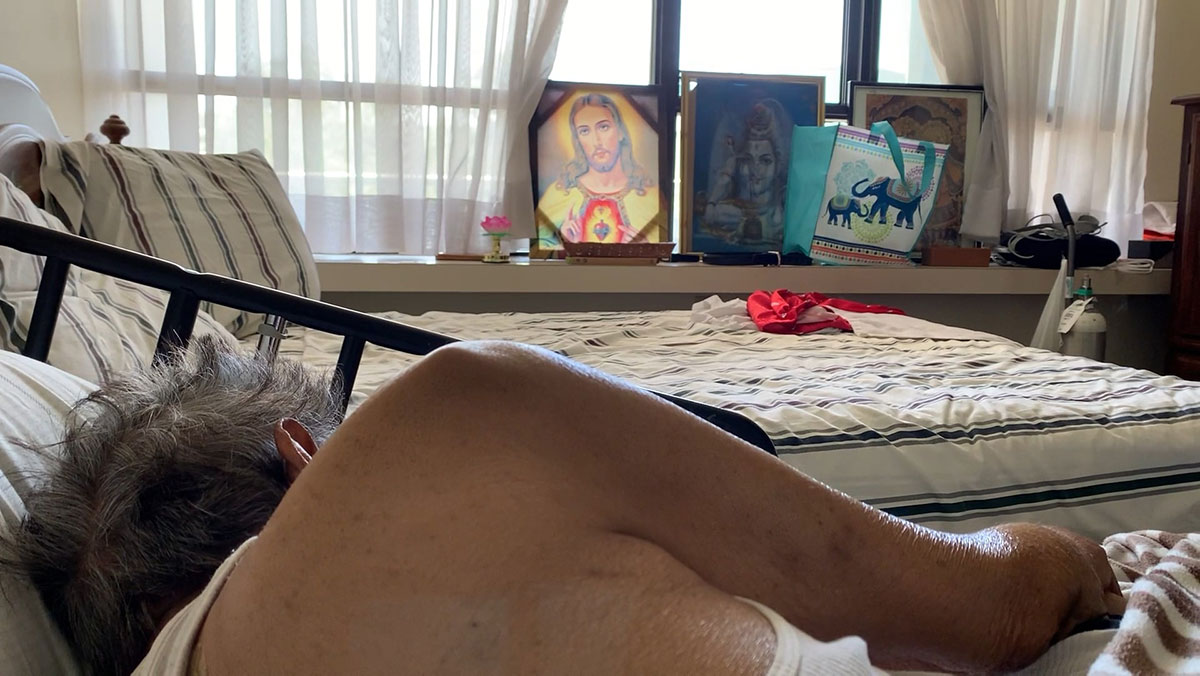
Granddaughter: Religiosity and Spirituality with the Indo-Guyanese Diaspora
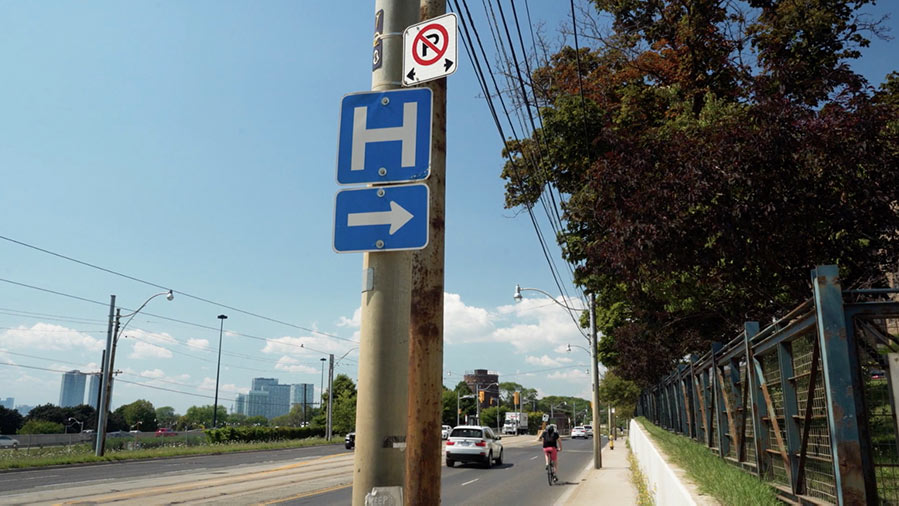
Universal, Amen
In 1967, Pierre Elliott Trudeau declared that “theological principles should, or would, have no bearing on Canadian affairs." However, Canada’s status as a secular country remains unstable. Universal, Amen profiles the ongoing debate surrounding publicly funded Catholic healthcare facilities in Ontario that refuse services based on religious belief. The project considers the consequences that this integration of religion and government may have upon how Canada conceives of itself as a secular nation. The project explores the question: what is the value of publicly funded Catholic healthcare facilities that refuse services based on religious belief in a purportedly secular province?

Everyone Rides a Bicycle in Heaven
Everyone Rides a Bicycle in Heaven is a documentary project situated at the sites of cycling fatalities in Toronto, and uses the motif of memorials as a metonym for the dead. The project consists of fifteen photographs and a single-channel audio and video installation. The paper delves into the history of bicycles, automobiles and the nature of our streets, in order to inform the resolutions of the project. It also studies the nature of road fatalities to uncover the movement of ghost bike memorials. The second chapter reflects on the modes and mediums considered in making the project, and the resources and collaborations sought in the process. The final chapter addresses concerns of representation, documenting suffering and death, alternative photography and the notion of truth and beauty in documentary photography. The paper concludes with a reflection on death and use of memento mori in inciting personal and societal change.

No Found Land

Walking with the Invisible

A Peoplehood | Amiut Yehudit
A Peoplehood | Amiut Yehudit is a multimedia installation exploring the complexity of contemporary Jewish identity in Toronto, and the emotional impact of today’s insidious antisemitism within a community that celebrates its identity in many forms. My work encompasses a subjective ethnography utilizing a multimedia approach to blend discursive threads artistically. Observational photography, portraits and still life illustrate familial/community resilience. Shared values are revealed through celebrations and communal gatherings. Social and newspaper media ephemera are used to situate expressions of antisemitism, serving to contextualize the lived experience of those photographed/interviewed and to make visible proofs of pervasive antisemitism. These include instances of virulent antisemitism as well as indirect forms such as scapegoating Jewish students for the actions of Israel. Audio interviews are used to demonstrate the community’s reflection upon aspects of identity, pride and trepidation, illustrating Jews’ ever- present awareness of their differences living as a minority community.

My body is a place, just like any other
Transgender and gender nonconforming (trans*) bodies have been used in media, art, and culture for centuries, yet rarely are they represented and theorized in the same ways as cisgendered bodies. This project- and subsequent film- explores trans* bodies in space and seeks to theorize the trans* experience away from the essential body as the locus of identity and towards the complexities of mind, spirit, and heart. Over the backdrop of the American West— itself a site of historical cis-hetero white male dominance— this film aims to complicate the ways in which trans* experience has been depicted in film history and elevate these stories to the status reserved for normative characters.

Pulse

Sweetwater
Sweetwater is a short documentary about disability, sex work and finding community. This film attempts to bring together filmic and musical elements that reflect tones present in abstract cinema and magical realism, in order to create a visual representation of the technological space where disabled people often form communities. This film is a love letter to all of the disabled people I have had the privilege of coming to know through the magic of the internet; and to those I have yet to meet.
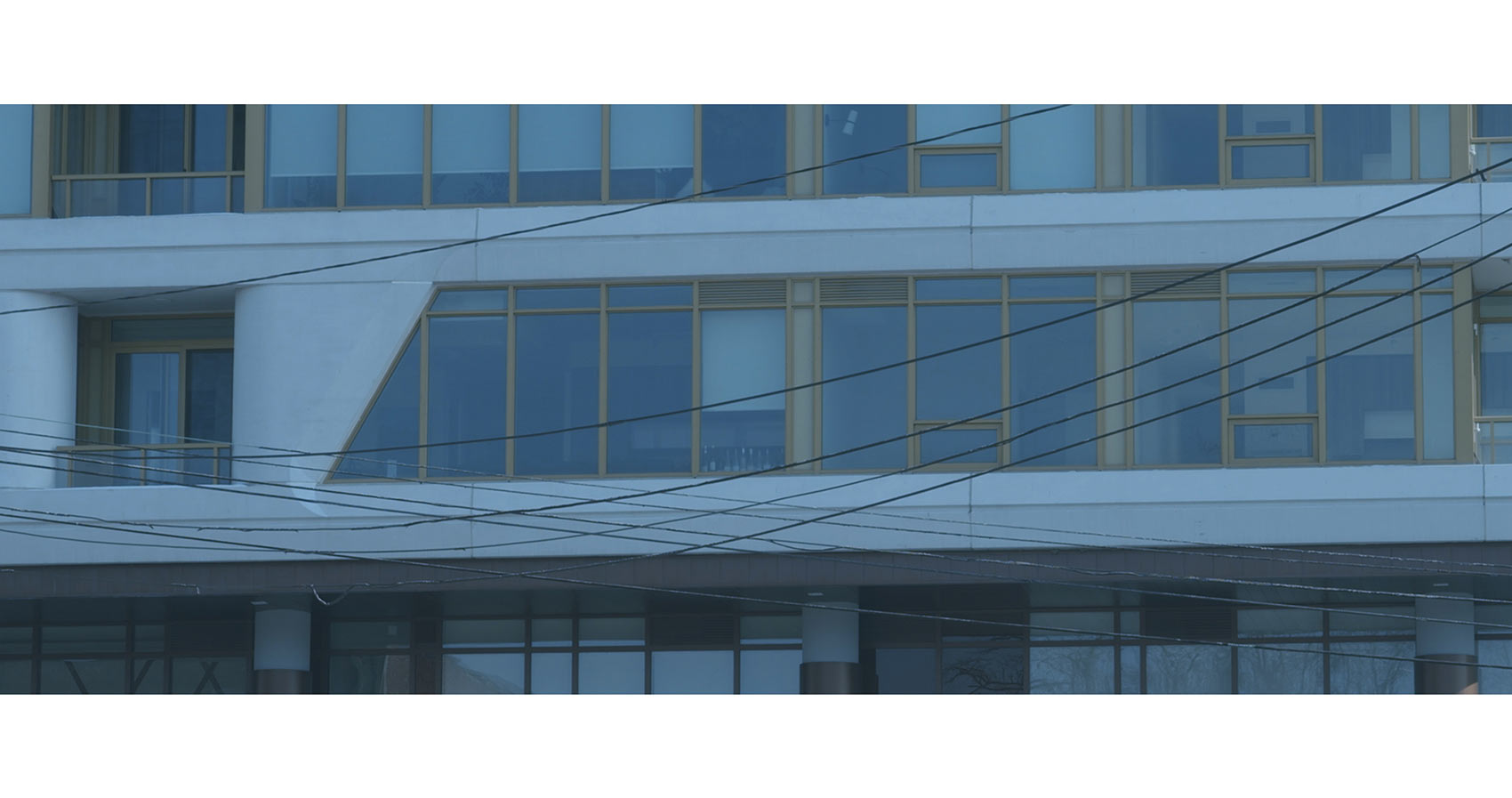
Nine Witches: Identity, Voice and Difference in Feminist Experimental Ethnography

The Shadow Pandemic
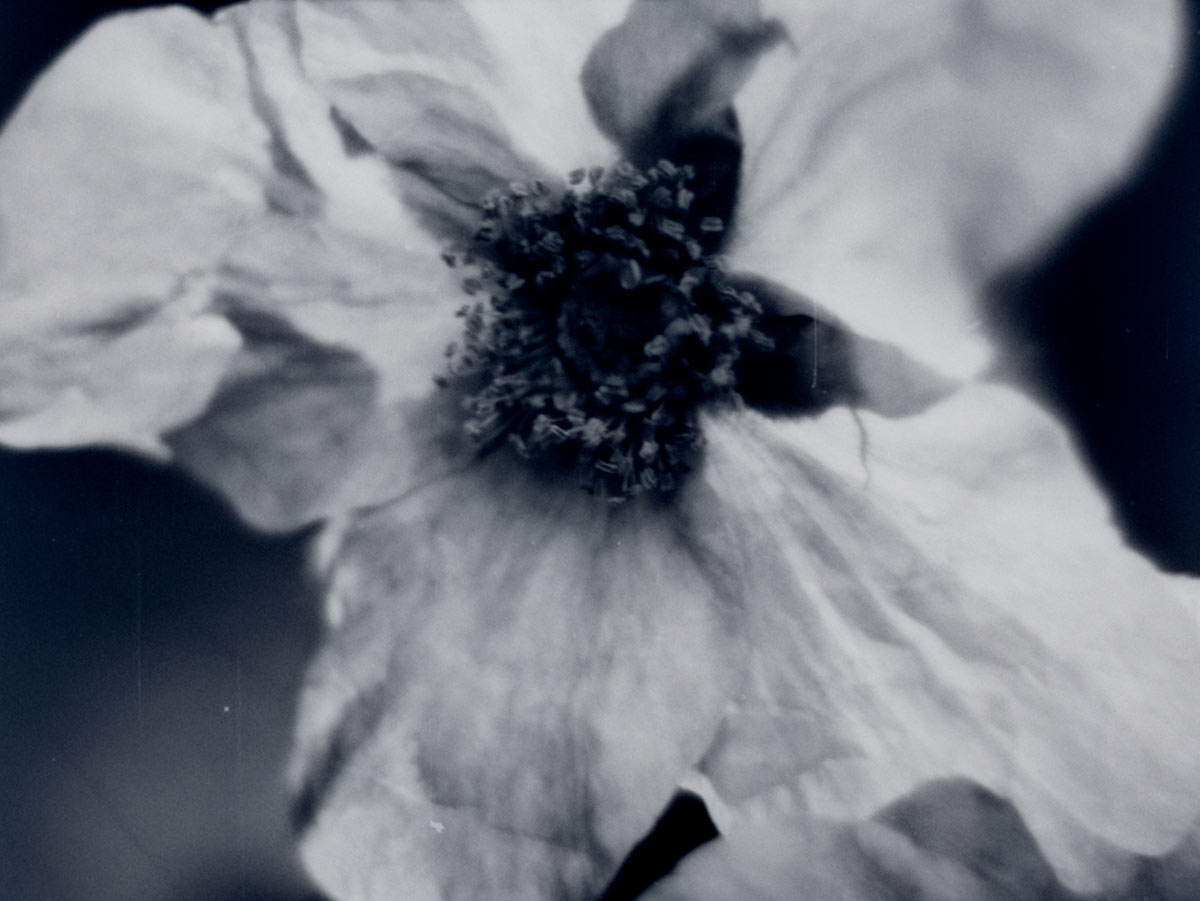
Herbaria x Pelicula: Collaborations with Plantlife on Motion Picture Film

Eight Acres
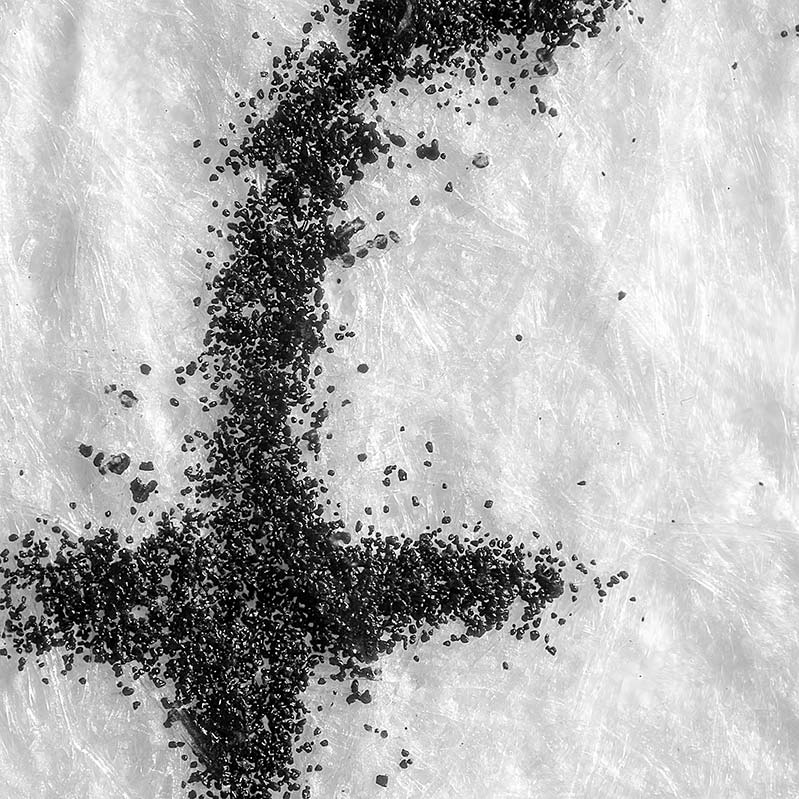
Black Squiggles White Background
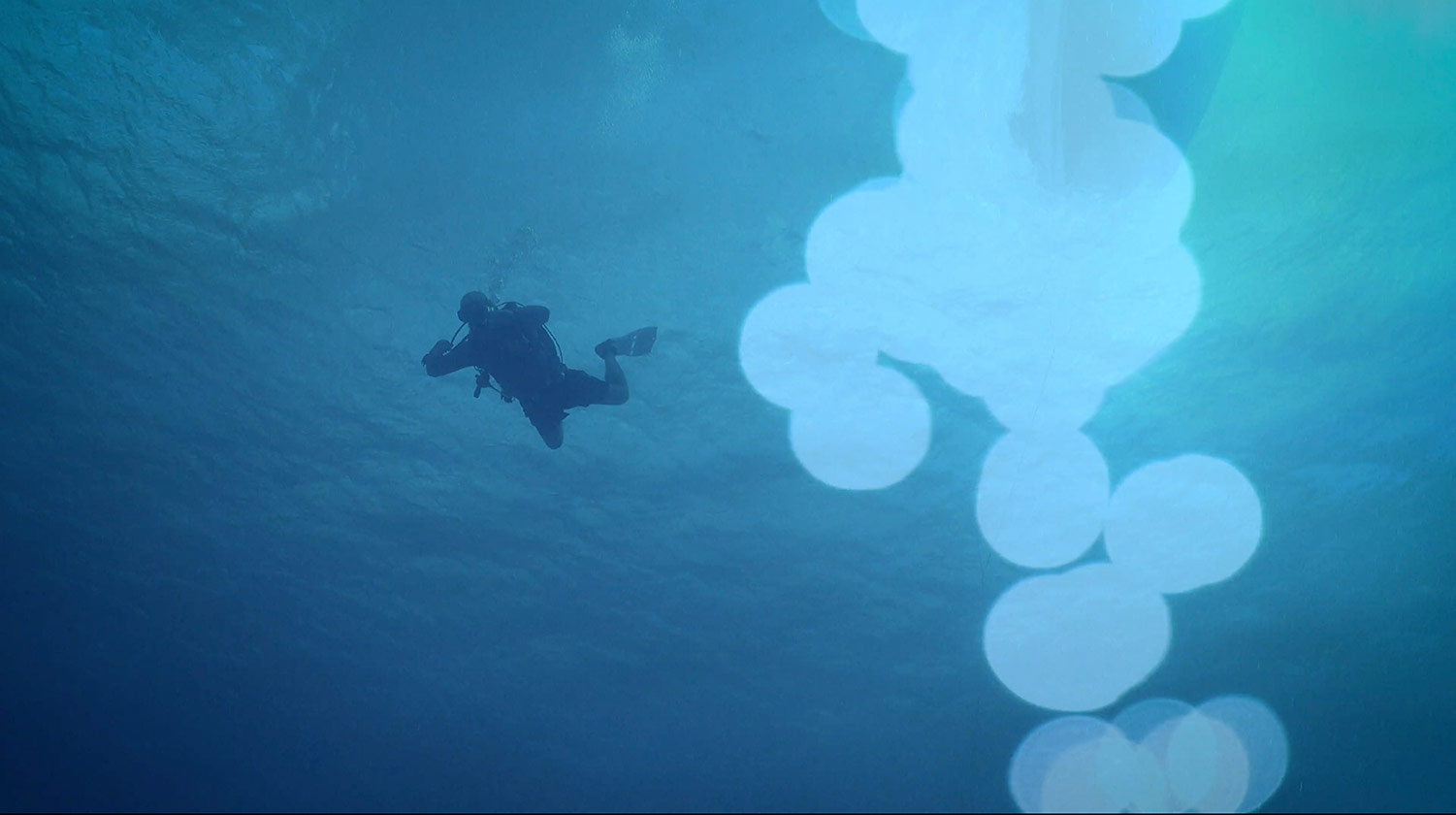
Echoes
The spiritual connection humans have with water can go unbeknownst to most. However, an entirely different community longs to be beneath the surface, searching for many different immersive experiences. Scuba-Diving is a recreational sport that is often considered extreme due to the nature of the environment in which scuba happens: in the vast open waters. To some, it is the quiet experience away from the chaos of the surface; to others, it is exploring new places that only a handful of people have seen. While under the water, divers witness a whole other kind of inner-space in which we can see the effects we have on our world. It triggers an awareness of our impact on preserving its natural resources. Viewing through the eyes of those who seek adventures beneath the surface, we recognize the intensity of humans' effect on this vital element that surrounds us in our daily lives.
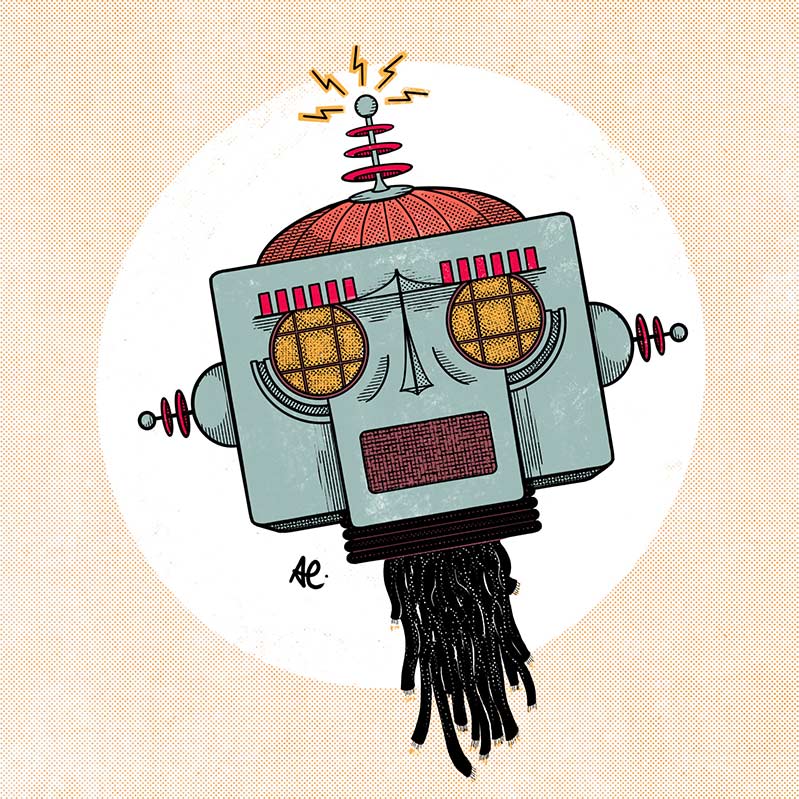
Machines for Living

Dis/closure: What Happens When We Tell

Thanks for Nothing: Transit, Housing, and the Violence of Gentrification in Neoliberal Canada

Drunk on Too Much Life
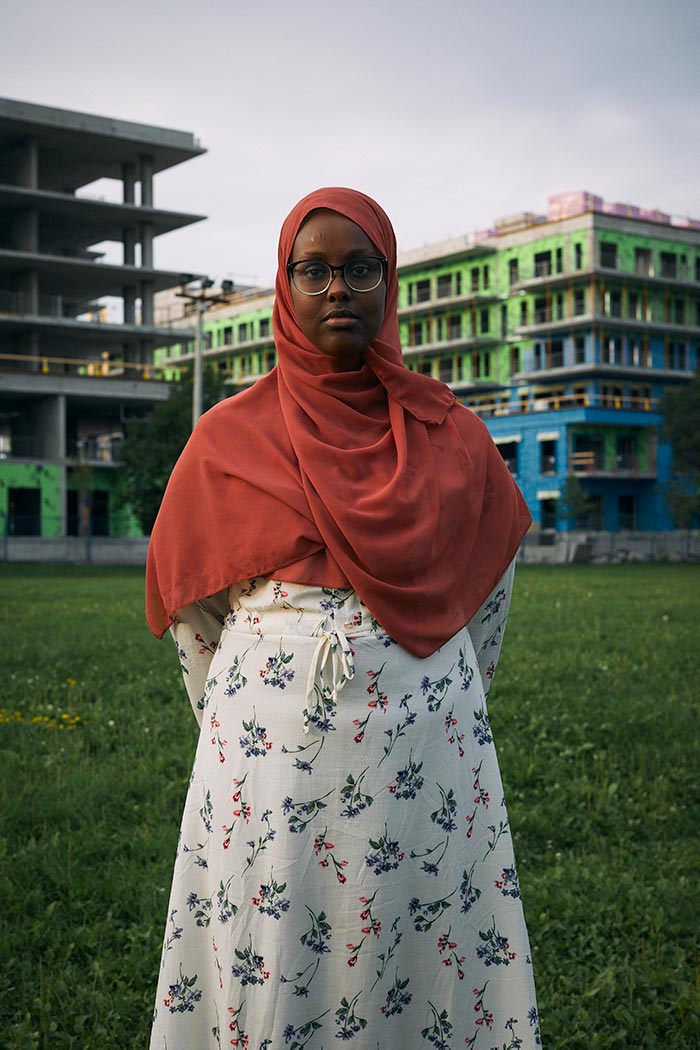
Property Standards
In 2018, Ottawa's Herongate neighbourhood experienced one of the largest mass evictions in recent Canadian history. Close to 600 people, including many immigrants and refugees, were forced out of where they live, their homes demolished to make way for luxury apartment rentals at the hands of their corporate landlord Timbercreek Asset Management. This event belongs to the larger trend of housing financialization, where publicly traded companies come to own more and more rental housing stock worldwide. The business strategies employed by these institutional investors rely on systematic neglect, rapid turnover of tenants and strategic gentrification on a massive scale to ensure high shareholder returns. Property Standards is a conceptual documentary photobook and accompanying installation. It evaluates these 2018 evictions, as well as the tenant led resistance movement to them, in light of global trends in housing financialization. It weaves an intertextual dialogue between tenant interviews, academic research, government, corporate and legal documents and other forms of media ephemera, to create an archival narrative of this event, as well as analyse the causes of financialization more broadly, with the hope that better understanding can contribute to resistance against the damage this process causes to the urban social fabric.

(Re)-Mediation

The Beast in me Manifesto
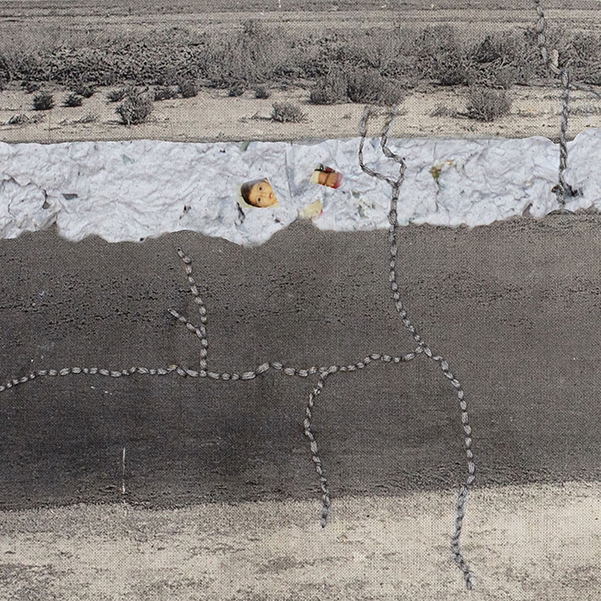
Gav-khouni
Gav-khouni is an installation that examines the relationship between place and identity. This is done based on the artist’s lived experience of relocation and the story of the drying up of a river in her hometown. In this paper, this project is explored within theoretical and documentary practice contexts. In doing so, various concepts of identity, place and memory are studied to interpret how relocations can affect a sense of identity. The history of the river and the effects of its damming, abstraction and diversion are discussed to understand its metaphorical presence in the project. Additionally, documentary aspects of the work, influential artists, and the process of the development of the project are explored. The findings of the project reveal the strong bond between place and identity, and they point to the impacts that changes of places have on the identities of people who relate to them.

SAFARI
Safari is a swahili word used to describe a “journey” in Luo, which is a tribal language spoken by the Acholi people in Northern Uganda. The term originally came from an Arabic background of the word “safar,” which means to travel. My tribe adopted the term thousands of years ago during the slave trade era. In this paper Safari represents a two-part project, SAFARI the film, is a 19 minutes autobiographical documentary that intimately explores Dominic Akena (myself), and Walter Ojok Ocii’s personal stories of surviving a guerrilla war as child soldiers in a refugee camp in Uganda, and our immigration journey to Toronto. Using strategic applications of three main elements such as the visuals, audio, and textual documents and materials acquired from archival sources, both the research paper and the film uniquely establish a narrative structure that allows the audience to access, indulge, and reflect on the subject matter at stake, which is that many children are still being used around the world to fight wars.
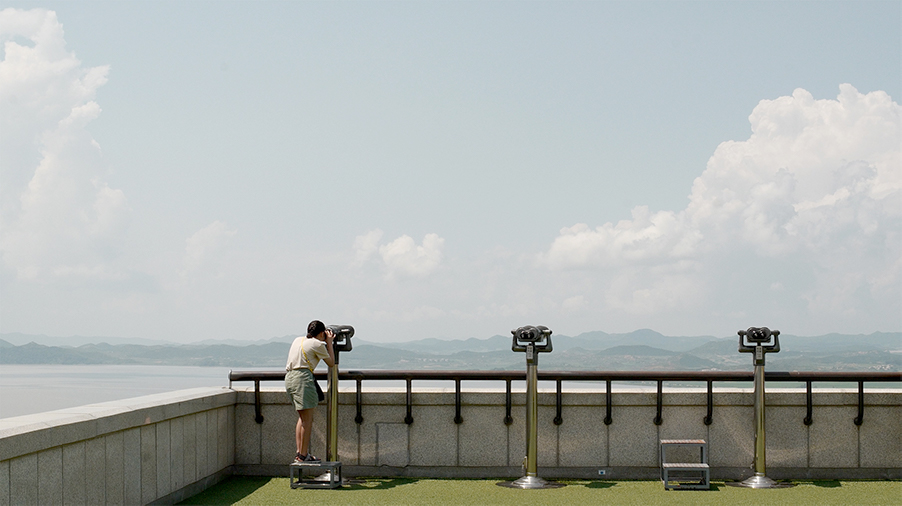
Looking Through the Binoculars
As a militarily restricted zone, the DMZ space has been slowly consumed by wildlife. The irony is that because it is prohibited to humans by the fact of human conflict, today this military space acts as a wildlife preserve. This preserved space only exists in-between reality and fantasy, a mirage in South Koreans’ mind. This major research project analyzes not only this contradiction but also military conflict, political division, and social trauma through the lens of DMZ tourism, discussing how this military space plays roles in modern South Korean culture and society. Also, the personal point of view in this film moves back and forth between reality and fantasy, capturing the surreal nature of South Korean military tourism and social conflicts, using narration over contemporary shots of tourist sites, archival footage, and performance.
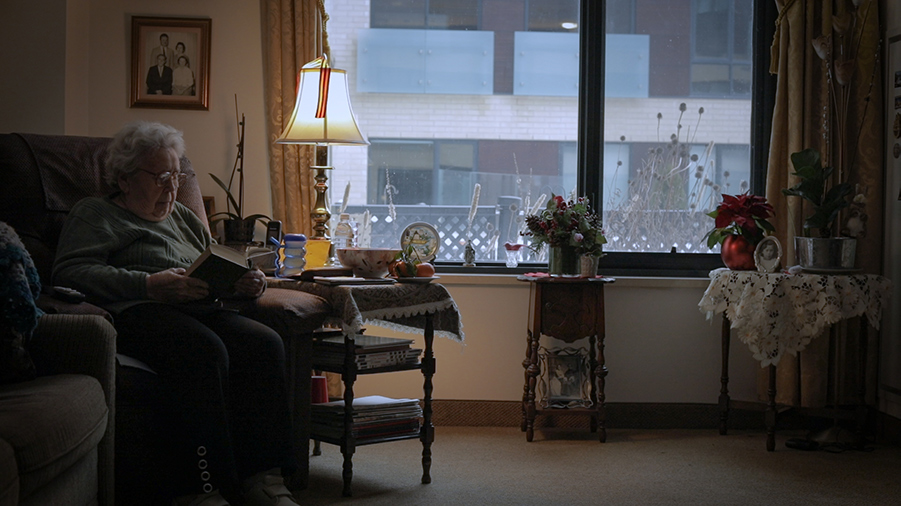
Musya
This paper is written in support of my documentary film Musya. The film follows a group of students from a Russian school in Toronto as they re-enact life stories of a living witness to Stalin’s Reign of Terror, for whom “life under the Soviets was worse than under the Germans during the war”. With major parts of the Soviet security service archives still classified, the topic of mass repressions is being deliberately excluded from the pro-Soviet narrative currently propagated by the Russian political elite. As the memory of this human tragedy is fading, with just a few witnesses remaining, this research project explores how the re-enactment method accompanied by analytical discussions can be used as an alternative way to ignite an intellectual and empathetic conversation on the mistakes of the past, and humanize historical narratives of pain and suffering.

Perma
This MRP, entitled Perma, is concerned with environmental change in Northern Canada, and has a specific focus on the ways permafrost and water are being altered by human activity. The accompanying exhibition will present these issues in an immersive, multimedia gallery exhibition. My visual project has developed through creative practice and discourse with scientists and Indigenous land-based researchers. It investigates permafrost thaw, from the direct effects of small-scale mining to the results of large-scale climate change on Inuvialuit, Gwich’in, Dene, and Trondek Hwetch’in traditional territories. The exhibit will show prehistoric material previously preserved and the transformation of thawing permafrost, alongside the altered spaces left behind. The goal of my research is to better understand changes happening in the Arctic, and all environments, using visual investigation to explore how colonial narratives alter nature and impact our relationship with land in the Anthropocene.
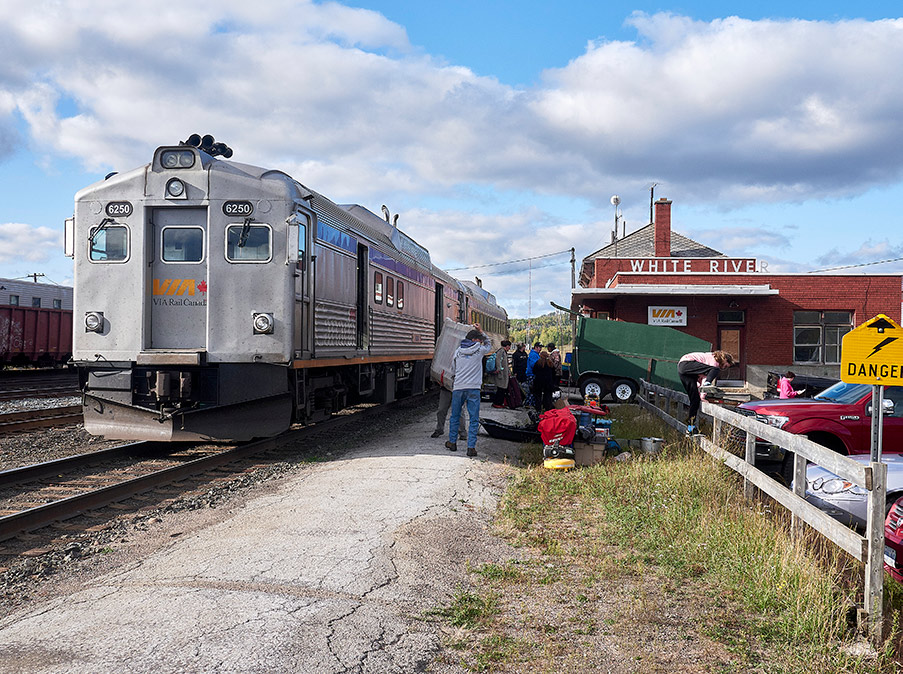
TOWARDS INCLUSION: THE BUDD CAR TRAIN FROM SUDBURY TO WHITE RIVER
The train from Sudbury to White River is an agent of inclusion. Because there are few main roads intersecting the 484 kilometres of the route, communities and lodges along the way often rely on the Budd Car to connect them to the outside world.
Isolation may be considered as part of a matrix of elements related to low income, including poverty, powerlessness, vulnerability, and ill health. Inclusion refers to community participation, the right to services, and the concern with individual well-being, including that of women and children. Inclusion involves helping to bring people into the foreground who have been pushed into the background.
The isolation of individuals, families, or communities is not a static condition but a dynamic activity. This qualitative study of people on the train combines photography and commentary. It explores how the experience of the train itself, and the passenger service as an institution, assists with inclusion.
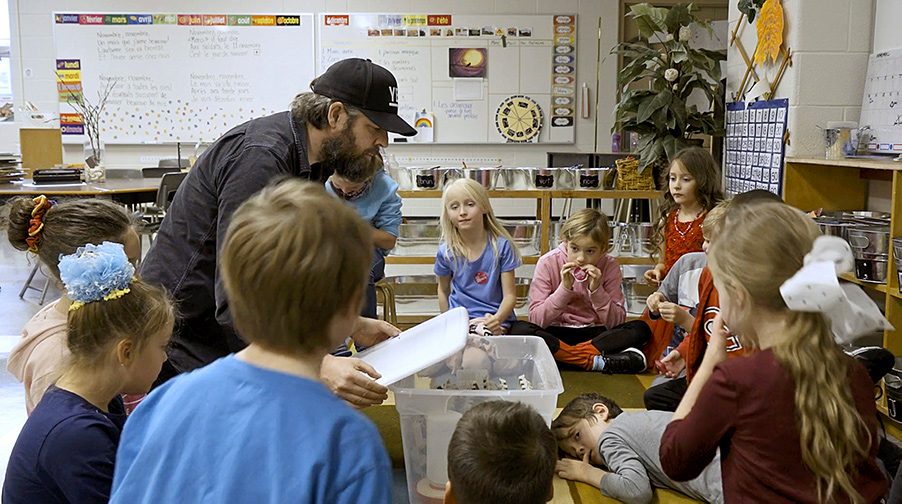
Chasing Crickets
For centuries urban migration fueled the economic, cultural and social life of the cities. In the past decade, a new trend has emerged: population decline in some of the largest North American metros. Joe Shouldice, a creative professional and the protagonist of my documentary project Chasing Crickets, is representative of a broader phenomenon of reversed urban migration. In 2018, the rising cost of living, longer work hours, and transportation challenges, among other issues, pushed Joe and his family to leave New York City for Owen Sound, a small Ontario town. Faced with a lifestyle and career change in his mid-life, Joe aims to re-invent himself as an entrepreneur and human-grade cricket farmer while confronting heavy socio-cultural preconceptions of the Western world towards the consumption of insects. In this supporting paper, I explore and document Joe’s story and the bourgeoning industry of cricket farming in Ontario, Canada.
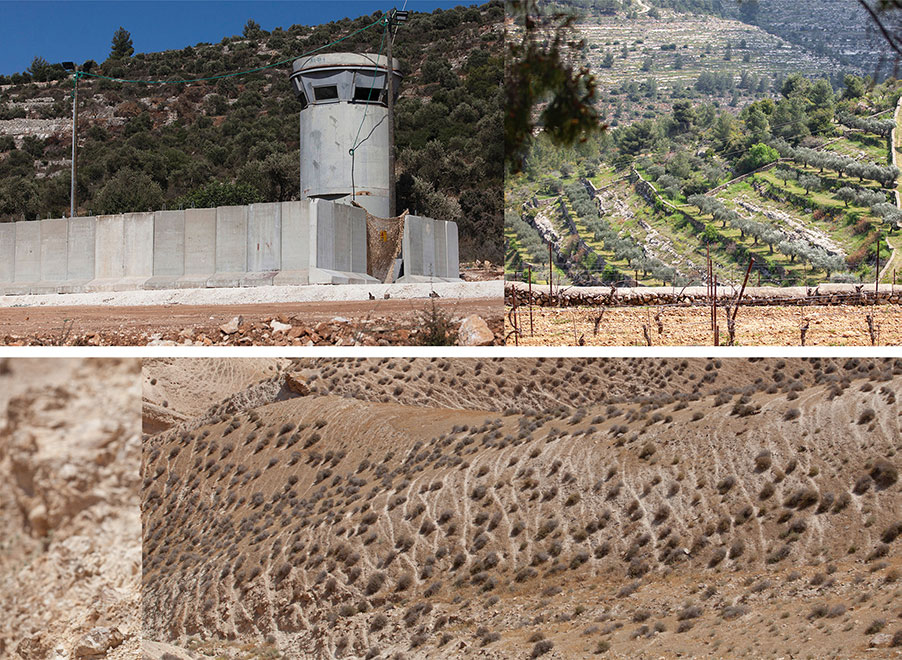
Grounded Assertions in 1/1000th of a Dunam: Soil as a Site for Collective Memory and Decolonial Disruption
1/1000th of a Dunam is a multimedia exhibition exploring Palestinian assertions of belonging through the site of soil, an epistemic space where land and belonging are imagined, where in reality they have been denied. For many Palestinians who keep a handful of soil with them across the diaspora, soil acts as a material stand-in for the nonmaterial memories tying them to home. This persistent refusal to forget plays a key role in resisting the settler-colonial impetus to sever ties between Palestinians and the land. In the face of Israeli denial of both Palestinian histories and futures, the project 1/1000th of a Dunam looks at one way that memory is revived and attachment to land renewed: through the symbolism and materiality of Palestinian soil.

Homework
The documentary film Homework tells the stories of two Chinese girls during their summer holiday in 2019. The two ten-year-old girls have different backgrounds: Qiao Shiwen is from a middle-class family in Beijing, and Li Jiahui is from a working-class family in a small village of Shanxi province. Shiwen is an only-child, and Jiahui has one brother. The two families have one thing in common: the parents are concerned about their children’s education, but they have different parenting styles.
The film is aimed at representing parents’ educational anxiety by showing the families’ daily life and exploring different parenting styles’ influence on children. Viewers can also see the gap between children and parents, urban and rural areas in today’s China. This research paper provides the social-historical background to this documentary film and then discusses some existing documentary works concerning the similar topic. At the same time, this paper goes over the film’s production process, including the shooting and editing process.
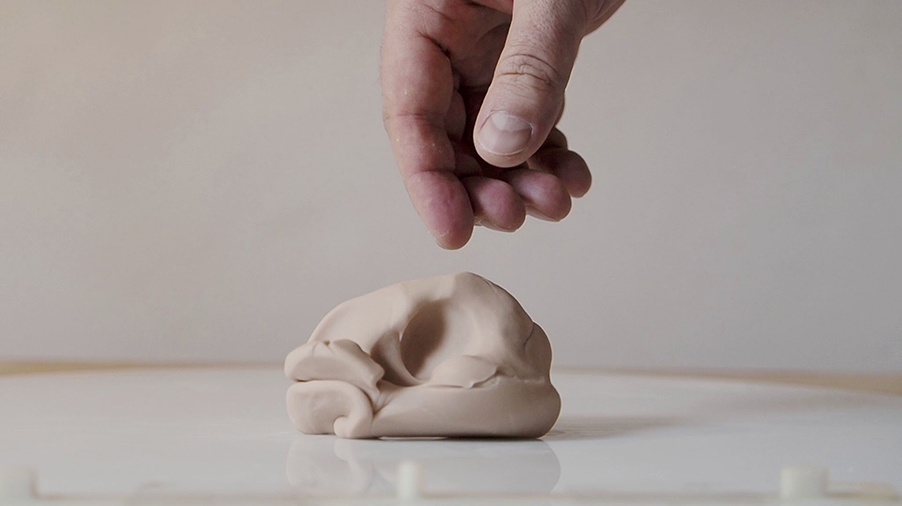
Art Evolving: Analog or Digital
Art Evolving: Analog or Digital is a short documentary film which celebrates analog and digital methods of art creation, asking the question of what our connection to the work being created is through these different materials, and alluding to the future of humanity’s relationship with technology. While a group of artists share their experiences of working between these two vastly different methods of art making, the film explores the pros and cons of both methods and then points to a potential future of artistic development. The aim of the film is to celebrate the beauty of both analog and digital methods of art creation and provoke deeper discussion and investigation into the potential of technological change, as it relates to both artistic exploration and its relationship to the human experience.
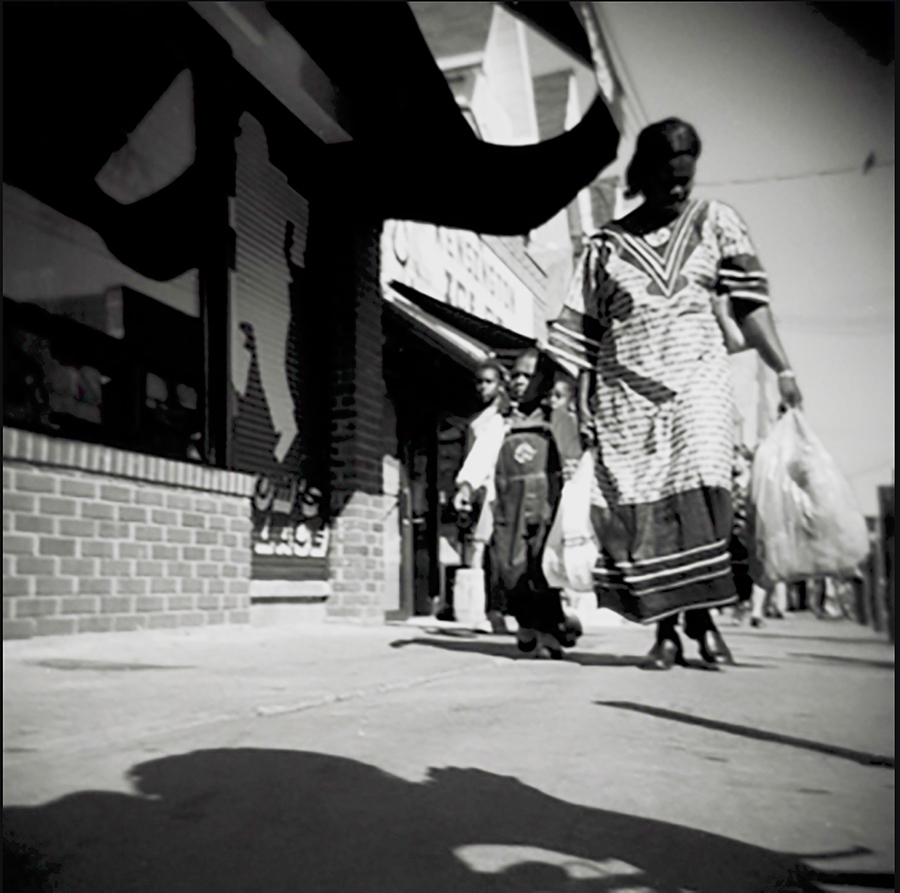
IAH: A Remembrance
Constructed around ideas based on Jamaican Rastafari music and philosophy, IAH, A Remembrance, tells the story of a mother who immigrated to a foreign country to better provide for her children. The experience of reuniting with my mother and observing the ways she navigated the new country are central to the film. IAH is a poetic, essay style, experimental work in the tradition of domestic ethnographic filmmaking. I consider the way she lived alongside the philosophy of the Rastafari movement, and, also as a way of thinking about art making, freedom and Black life.
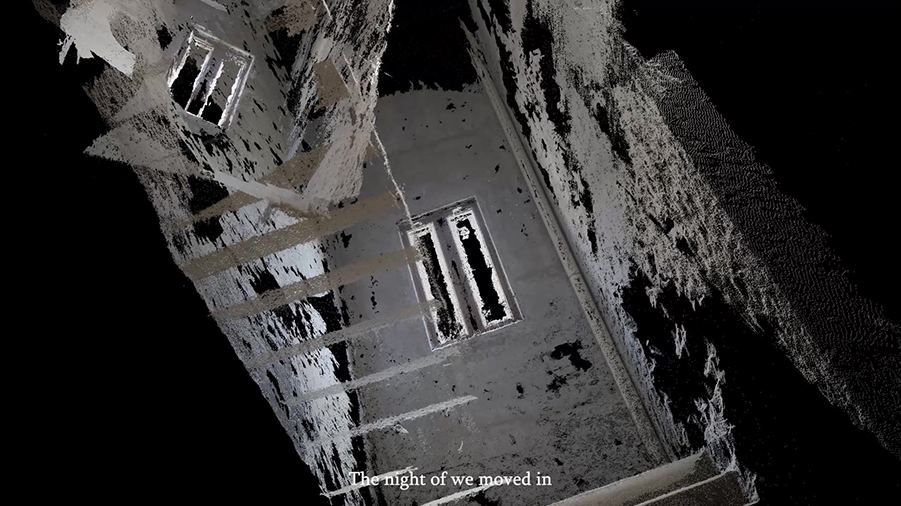
How to Be Satiated in the Dark
How to Be Satiated in the Dark is an installation comprised of an animated short film and an observational video that trace the “ghost town” phenomenon in my hometown, Donghai, in Southern China. The ghost town is a geographical and urban phenomenon reflecting how houses are being built more than demanded. The empty buildings existing in the area make the section where they were constructed gradually resemble a ghost area. With only a few families taking up residence in a largely empty area, those “homes” no longer seem to fit the supposed warm, comforting idea of home. This paper examines the theoretical literature related to the socio-historical context during Market Reform and Land Reform, which sheds light on the ghost town phenomenon in China, the context for rural urbanization and the ghost zone in my hometown, and, finally, discourses on architectural phenomenology, affect, mobility, and the “uncanny.”

Blizzard
Blizzard is a short documentary film about a refugee family of four from Turkey’s Dersim (officially Tunceli), who are in search of a new home in Canada.
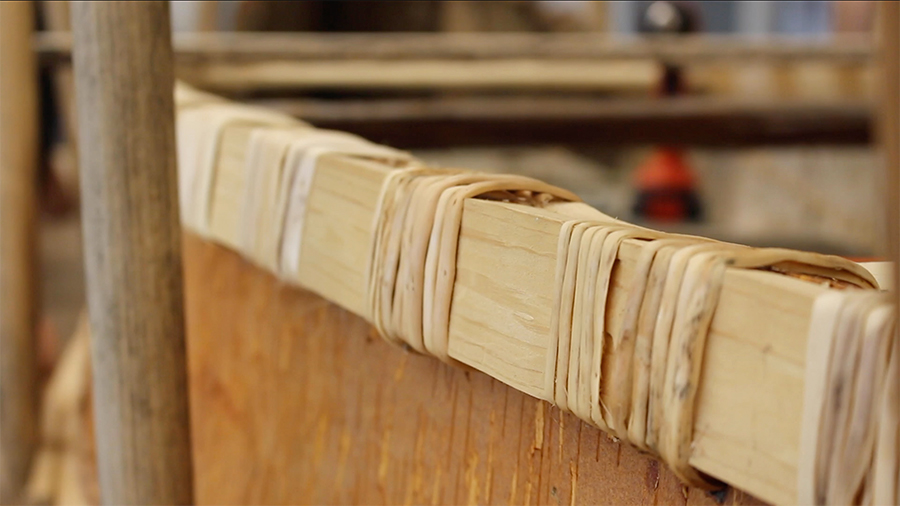
Made By Land
This documentary short film, Made By Land, snapshots the culture and community of three canoe builders, using a variety of documentary forms in order to show their techniques, methodologies, and their engagement with a variety of communities. The focus always remains on their manual labor, but broadens to include larger social, historical, and political issues including environmentalism, the canoe as a tool of colonialism, and the debts one generation owes to another.
Challenges during production included filming on location without a crew, maneuvering through the COVID pandemic, and rigorous editing to achieve a tight focus, with no voice-over narration. Instead of a classic “quest” dramatic story, the audience engagement is realised through the sequencing of the different scenes.

Marcela
Marcela is an autobiographical and auto ethnographic documentary film that uses personal archival VHS footage and interviews with the subject’s family members to explore the main question at the center of the film: After many years of ballet practice, why did Dina quit ballet as a young girl? In revisiting this event from the past, the viewer is taken on a journey in exploring the environment she grew up in that led to that decision. In searching for the answer and in learning about the internalized racial trauma passed on through her father, an unexpected revelation becomes the main takeaway of this film. Marcela is a reflexive meditation that reveals more than the subject had initially asked for. Dina’s multiracial and Third Culture Child identity become part of a more complex narrative in which the subject becomes aware that half of their identity got lost in a hostile and racist environment.

"BOBBY"
This paper is written in support of my short film, “BOBBY”. The film focuses on magician Bobby Motta’s recovery from being stuck by a car as a pedestrian. Bobby is forced to adjust to a new life with a traumatic brain injury, and through the examination of this film we look at the profound effect trauma has on identity. This paper is an extension of this exploration, connecting my own journey after being stuck by a truck as a pedestrian. I share my own experiences learning from my own trauma as we attempt to unwrap Bobby’s.
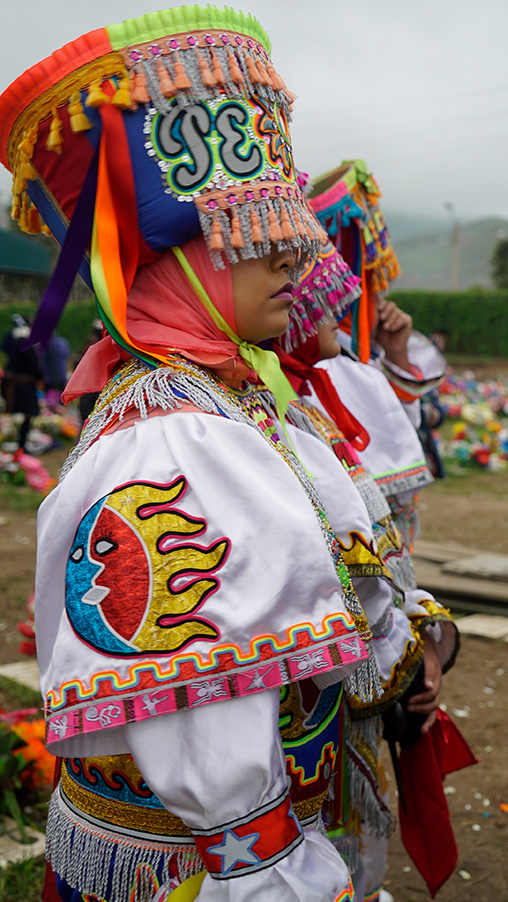
Warmi Dansaqs, a Brief History of resistance
This project will focus on the history of resistance and feminism through the exploration of el Baile de las Tijeras, with the new expression of female dancers, commonly called the Warmi Dansaqs (Women Dancers in Quechua). Through research on this dance and the history of Peru, this project explores the experience of Warmi Dansaqs; how it has shown resistance throughout the years and how it is still a site of resistance today. This piece is here to make audiences reflect, to pique viewer's curiosity for them to want to understand how this dance is in itself a unique way of documentation, a way of passing on information and history from generation to generation since pre-colonial time.

Generations
Although the recorded history of Muslim-identified communities in Canada begins in 1854, historical depictions have denigrated the narratives and histories of these communities in the Canadian imagination while allowing stereotypes to reign supreme. Through repurposing and reconfiguring the systems of representation and spaces of display that historically enabled this misrepresentation and erasure, Generations aims to assert the existence of Muslim-identified individuals in Canadian society, culture and memory. Through a series of multigenerational group portraits of female members of Muslim families across Canada, as well as written material that engages with their past and present, the project offers a photographic archive where our histories, diverse experiences, and complex narratives are included in a lasting record. In this support paper, I contextualize the historical and contemporary experiences and representations of Muslims in Canada and demonstrate the need for community members to produce counter-representations, which reclaim citizenship and reassert belonging.

#SelfHelp
The film #SelfHelp critically examines Toronto’s mental health care system, it’s flaws and the different reasons why people resort to other options. After facing ongoing challenges, three young women decided to take matters into their own hands. Through the use of social media, starting community workshops and dedication to knowledge-sharing, these women begin to not only heal themselves, but others as well.
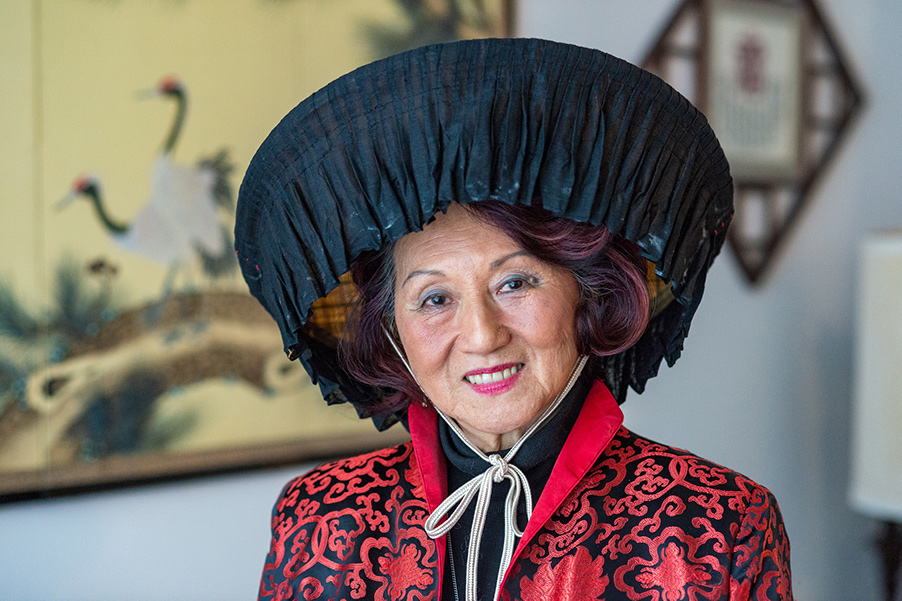
The Chinese Jamaican Oral History Project
The Chinese Jamaican Oral History Project is an initiative that aims to record and preserve memories and stories from the Chinese Jamaican community in Toronto. Its two distinct components are: (1) an online archive of audio-recorded oral history interviews, narrator portraits, and other images; and (2) an exhibition made from the contents of that archive. Specifically, the exhibition is comprised of twelve digital stories -- one for each of the narrators who has participated in the project so far. In every case, a soundbite has been selected to represent the complete oral history interview (which is archived online in full). Together with the images, these voices tell a story of the Chinese Jamaican community in Toronto, while also underscoring the diverse range of individual experiences within it.

How Deep is the Difference?
This paper provides an account of how a document is transformed into a documentary. It follows the blurriness of the concept of difference as it relates to the Canadian idea of diversity, and its manifestation in governmental forms and official documents. It highlights the paradoxical (inconsistent) function of such documents in addressing diversity, individuation and change. This research was informed by the concept of difference, defined (interpreted) by Manuel DeLanda, and is expressed in a multimedia installation titled Illegal Entries, which reconfigures the Canadian Passport Application form (PPTC 153-154) as a three-dimensional space. This installation shows viewers that this official document, which operates to legitimize state power over citizens’ bodies, is designed to undermine the concept of difference, which is at the core of individuation and is the backbone of diversity and multiculturalism in Canada.
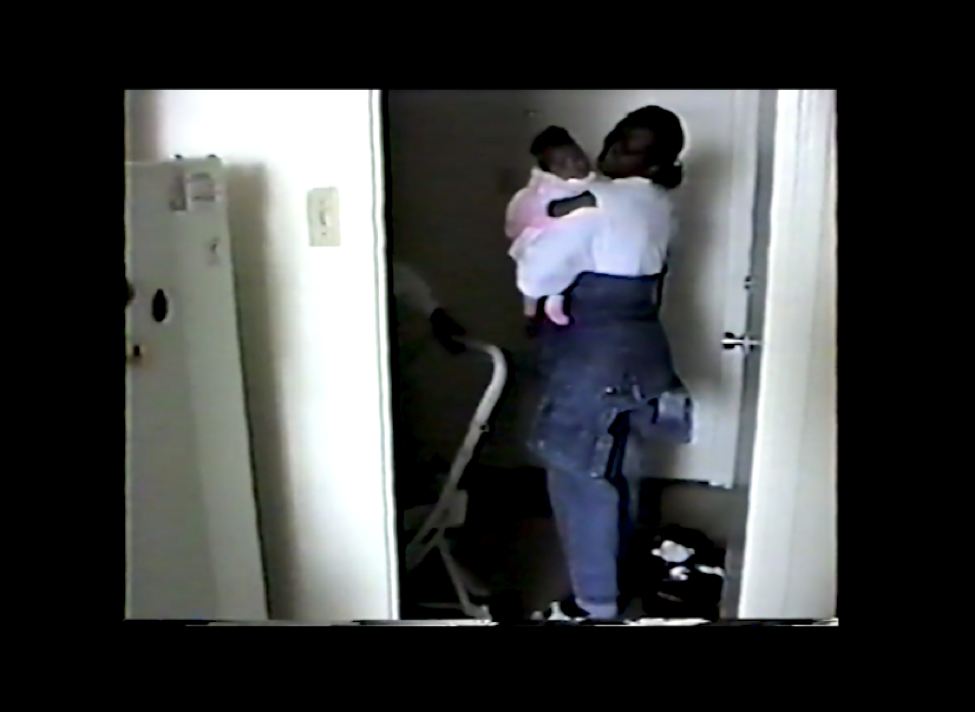
It's a Little Complicated
This thesis covers the process behind the production of my fifteen-minute documentary short, It’s a Little Complicated for the MFA Documentary Media program at Toronto Met. It explores the driving force behind my work, the annexation of the Congo by the Belgians, familial abandonment, parental illness and its effect on their children, and family archives. Most importantly, the film and the paper investigate my mother’s past and how her diagnosis brought us closer together.
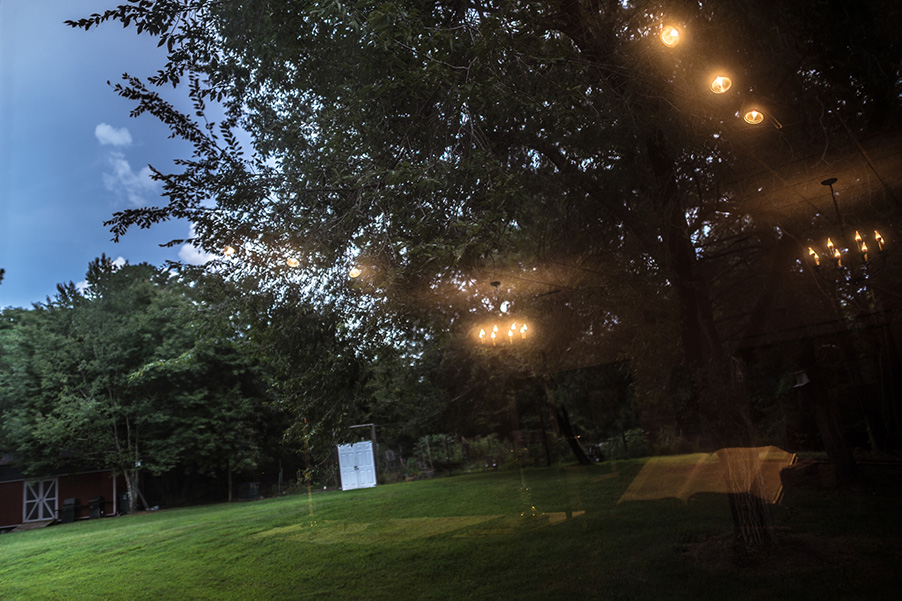
Shut Away
Shut Away is a window into a less-discussed immigration story in the United States. There are currently around fifty undocumented immigrants living in churches across the nation after receiving deportation orders. Nationalism is rising within the government, the country, and the world at large. It remains, though, the strategy of US Immigration and Customs Enforcement (ICE) to avoid raiding “sensitive locations.” Taking refuge in these churches provides some insulation from the possibility of deportation, but the spaces end up being a prison of a different sort. Using the still photograph, moving image and spoken word, this project explores a complex situation at the intersection of immigration, religion and politics. Of any state in the nation, North Carolina has the most individuals living in sanctuary. Shut Away aims to highlight the people in that southern state who are engaged in these acts of resistance.
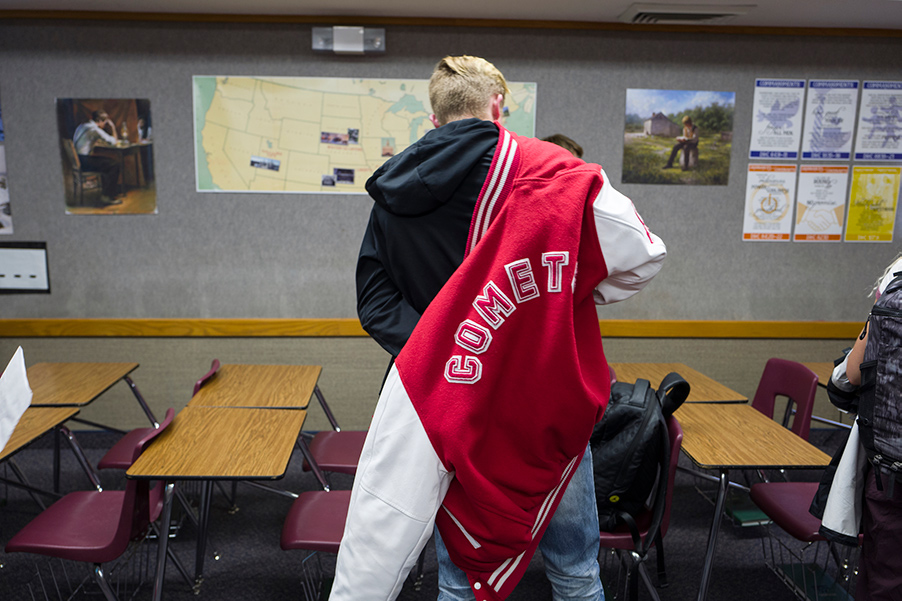
COMET
This major research paper is written to accompany the photographic installation COMET. The project examines the town of Raymond, Alberta and their high school football team, the Raymond Comets. I look to visualize the specific reality of Raymond, especially their approach to sports and how it interfaces with their faith as members of the Church of Jesus Christ of Latter-day Saints. This paper supports COMET in three main ways. I examine my own history of sport and my relationship to the Raymond Comets, I overview their faith and its relationship to sport, and I provide my own history developing COMET. I detail the theoretical and practical approaches used to produce COMET, examining the role of observation within photography, and describing the process of building the narrative within the gallery. Finally, I describe influences on COMET, and detail how and where COMET fits in the history of the documentary tradition.

The Garden Collective
The Garden Collective is a short documentary film exploring the memorialization of the former Prison for Women (P4W) in Kingston, Ontario. The film documents the P4W Memorial Collective, a group of formerly incarcerated women, activists and academics, working to establish a memorial garden to honour the many women who lost their lives inside P4W. The Garden Collective features interviews with the Collective and other former prisoners of P4W to provide insight into prisoners’ experiences and past injustices, as well as call into question the ways in which the prison is currently being remembered and historicized by the surrounding community.
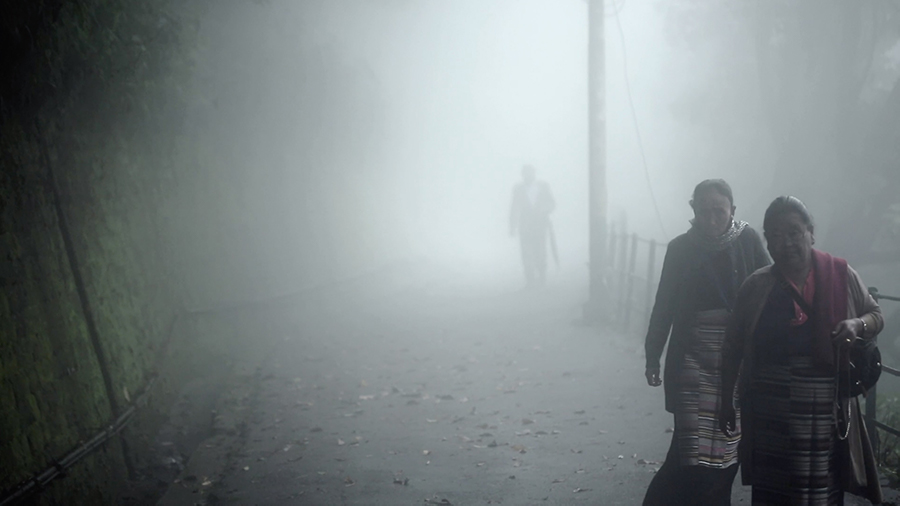
The Tea Workers
The region of Darjeeling has been a backdrop for political conflict since its colonization by the British in the 1800s. In the aftermath of the politically-motivated 104-day long citywide shutdown in the summer of 2017, Darjeeling’s tea industry took a significant hit. The forced closure of the plantations meant that workers were unable to earn wages, in spite of often being at the frontlines of the Gorkhaland movement protests. This paper contextualizes the research that went into the short film The Tea Workers. In particular, it explores the complexity of the female experience of labour on and around tea plantations, as well as the ways in which labour and gender hierarchies intersect to uniquely affect women labourers in the politicized landscape of tea production.

Visceral Conversations
This project is a portrait of my prepubescent daughter, who is a liver transplant survivor. While it addresses the dynamics of our mother-daughter relationship at a typically transformative age, it also speaks to the broader question of what is failing in Canada’s current cadaveric donor policy with its shortage of organs and low number of Canadians opting in.
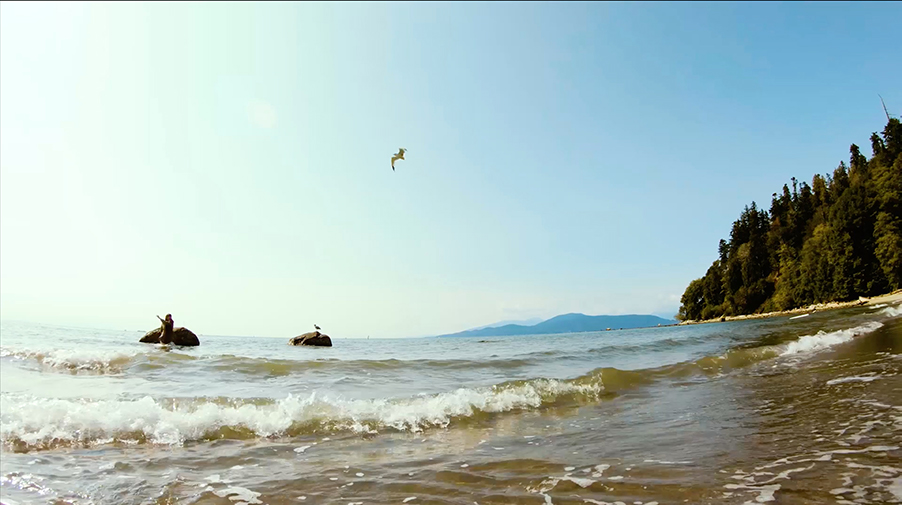
Letters From my Future Self
What does it mean to become the person you are meant to be? How can embodied wholeness be realized, no matter what happened, and become an exhilarating point of departure for creative practice, and ultimately, life. In Letters From my Future Self, my thirty-six minute experimental film, I try to answer this question with material from my own life. By making art out of my personal history, and the mystical vision of a Future Self, trauma becomes a portal for healing, and discovering the beauty of the present moment. In doing so, I offer my story as a template for others’ healing. I encourage viewers to embark on their own inward journeys of self-discovery. To enlighten that which they most wish to hide from and push away. To merge their divinity with their humanity, becoming their own Future Selves.
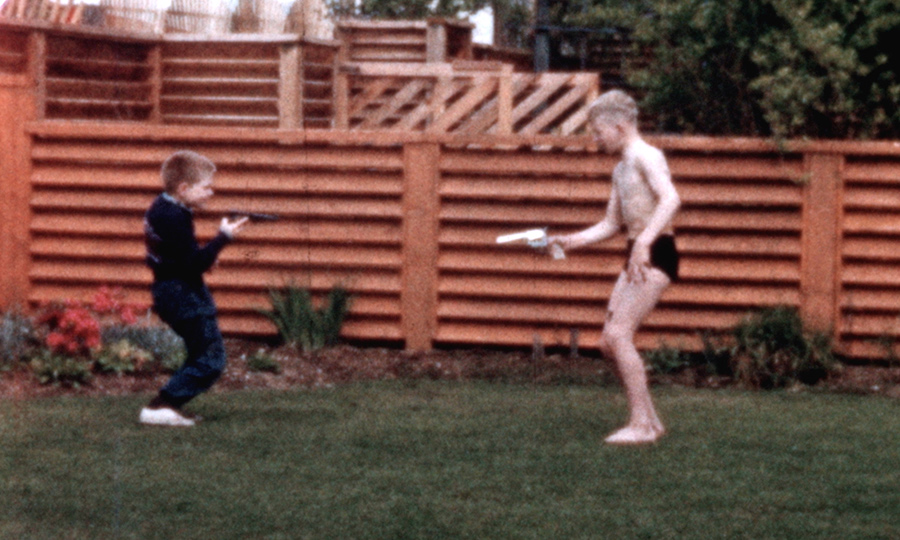
Kingfish
Kingfish is a documentary film that addresses a 19-year estrangement between my father, Jack McDonald, and his brother, Dan. Despite research indicating that 1 in 12 people experience familial estrangement, this phenomenon is rarely discussed. Kingfish explores the culture of silence surrounding family estrangement, as well as other complex factors contributing to its initiation and maintenance. To confront this, Kingfish poses a two-part question: How does estrangement function and what are its effects? I examine Jack and Dan’s estrangement as a byproduct of significant events that were not properly addressed or processed. I also look at psychological concepts of differentiation of self and betrayal of the family system, as well as Jack and Dan’s distinct valuation of money. Existing within the tradition of domestic ethnography and autobiographical documentary, Kingfish provides an intimate and personal portrait of family cut-off, which acts as one small initiative to confront the silence surrounding estrangement.
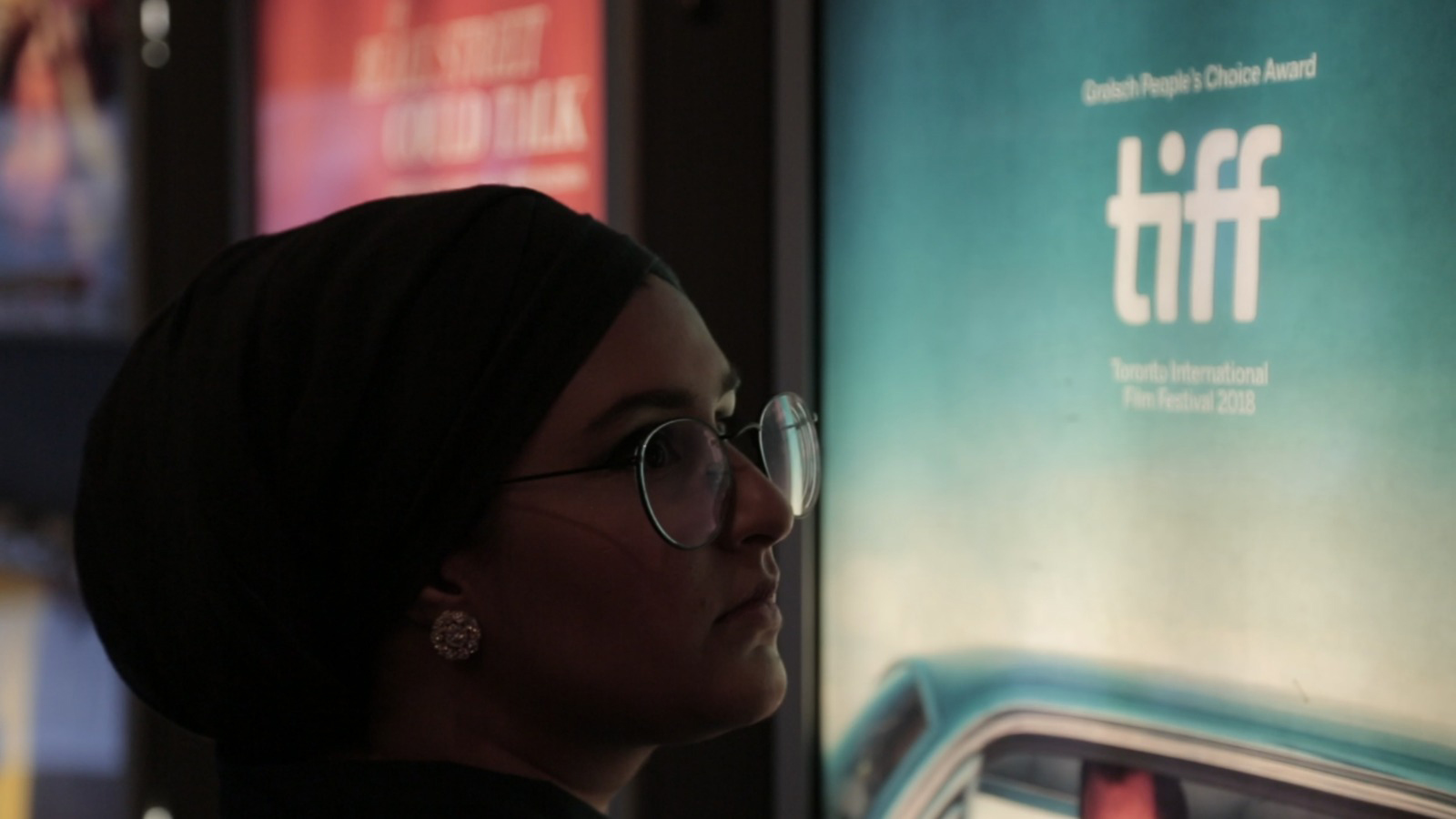
Keep Dreaming, Kiddo!
Keep Dreaming, Kiddo! is a documentary film about my experience as a Muslim actress who wears the hijab full time. I compare my journey to two other actresses: a white woman, Rachel Salsburg and a South Asian woman, Ameena Iqbal. I use this comparison as a case study to assess how our opportunities differ in the acting industry in Toronto in 2018. I also hold a roundtable discussion with two Muslim actresses, Maryan Haye and Asil Moussa, to talk about how our limitations due to our religion could get in the way of our performance art. As well, I speak to several experts including a producer, a filmmaker, a casting director, and an acting teacher to learn how to practically integrate Muslim actresses into film and TV as the issue not only stops at acting, but extends to education, writing, casting, production, and even government policies.

Tirmazi
This paper has been written as an accompaniment to the 20- minute documentary, Tirmazi. The film explores the language and landscape of displacement, as told by my mother, Hanifa Shah and her experience with forced internal displacement in Pakistan, and migration to Canada. This paper examines the main differences between Ahmadi Muslims and mainstream Islam, as well as the history of Ahmadi persecution in Pakistan, in order to contextualize my mother’s displacement within Pakistan. It also delves into the process and aesthetics used to create the film, including the use of archival imagery and animation. Finally, this paper examines Tirmazi within the broader context of documentary, placing it within a hybrid genre that combines elements of poetic and performative modes and essay and animation models.
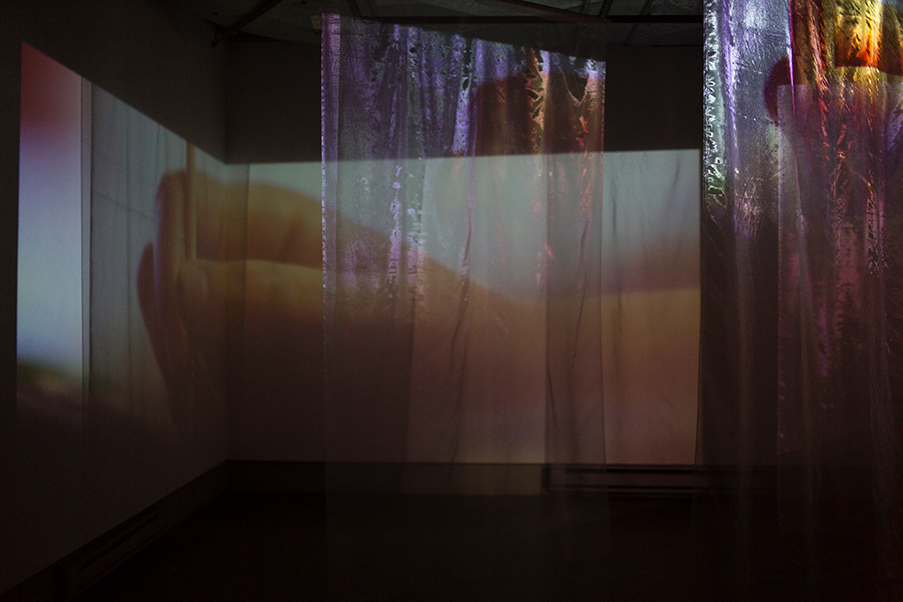
All Kinds of People, All Kinds of Ways
This masters research project, All Kinds of People, All Kinds of Ways, proposes that gender is a constructed concept produced by colonial, capitalist, and patriarchal structures. This is illustrated through a three-channel video installation of the same name that utilizes conversations with two-spirit, Anishinaabe participants whose traditions express the fluidity of gender identity. The research done in this paper further supports these discussions through an analysis of feminist and queer theory, as well as a look at various cultures around the world that have similar understandings of non-fixed gender.

Glad You're Here
This paper is written in support of the ten-minute film Glad You’re Here, a visually stunning personal film, told through the eyes of an artist. Engaging themes of love and betrayal, hope, belonging and place, Glad You’re Here documents a nineteen--year journey through building a family life, seeing it suffer the damage of mental illness, grief and separation, then rebuilding with empathy. A story about an extreme moment of crisis has turned into a documentary that deals not just with the subjective but with the important issue of spousal abuse. The story is summarized, and context is provided. Ethical issues in autobiographical film are discussed with regard to motive, consent, and disclosure. Issues specific to filming family, treatment of archival material, and use of place and landscape are considered. The film’s social relevance is contextually set in reference to autoethnography and an existing body of work concerning trauma.
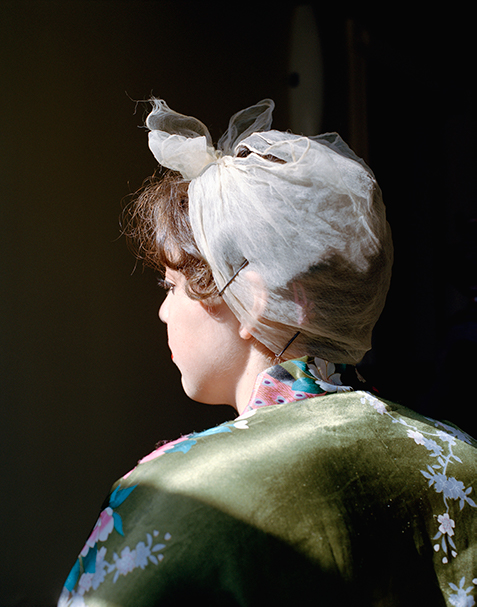
With Alice
At the age of fourteen, Alice began exploring the frustrations she faced as an adolescent, an artist, and a feminist—through her artistic practice. With Alice is a portrait of my cousin Alice, exploring her ever-shifting identity through painting and performance over a two-year period. Alice’s admiration for female characters that appear in 1930s, 40s and 50s films compelled her to paint women of these eras. The paintings blend images of herself with actresses she idolizes. In borrowing and re-working their images, Alice personifies aspects of her own personality inspired by these icons. The photographs in With Alice portray Alice in her creative process, shaping her artwork and herself. In the formal portraits, Alice poses consciously for the camera, performing the women she paints. In participation with one another, we have created portraits of her own embodied icons.

The Lost Seahorse
The Lost Seahorse is a short documentary about my grandmother Irene, who has Alzheimer’s disease. The film is a poetic portrait composed of testimonies by her primary caregivers. Recalling memories of Irene, they tackle issues such as absence, loss, and the difficulty of caring for someone you love that has forgotten who you are. Ultimately, the film asks if it is Alzheimer’s that ends the identity of a person or if that happens when we forget who they were. This paper exposes the themes that served as a basis for the creation of this project as well as the process of its development.

Extra Medium: Documenting a Mood of Speculation
Extra Medium is an experiment that seeks to explore the impact of today’s rapidly changing media environment. Through the traditional use of interviews, as well as manipulations of the traditional documentary framework, this project seeks to tease out a nuanced angle from a larger cultural environment of media saturation. It seeks to answer this question: what is the cultural impact of the widespread adoption of smartphones and social media in the last ten years? It proposes that the inclination of generation Y and Z towards activities rooted in the physical and tactile – in particular, analog photography – is a manifestation of anxiety surrounding a new and changing media environment.

In My Back Yard
In My Back Yard is a documentary film that explores the changing landscape of the Mount Dennis neighbourhood in Toronto. This change is represented by the 54-acre Kodak site that is being transformed into the second largest transportation hub in the Greater Toronto Area. The film employs a series of visual strategies and retells recent observations related to the impact of this massive infrastructure project on the people, the land and the urban wildlife. Local residents, politicians and community leader were consulted. Their interviews are combined with dioramas, archival photographs and time-lapse photography to express the multi-facetted list of community concerns. This support paper attempts to define and analyse these struggles within the context of Leo Marx’s 1964 work The Machine in the Garden: Technology and the Pastoral Ideal in America. This paper proposes that Marx’s concept of the “middle landscape” helps to define the current struggle in Mount Dennis.

Queen of the Bands: Carnival and “Monarchy” in the (416)
“Queen of the Bands: Carnival and “Monarchy” in the (416)” is a multimedia gallery installation which explores the complexity of Queenliness through the audio and photographic documentation of four women who perform as the head female masqueraders within the complex political framework of Toronto Caribbean Carnival's 2017 King and Queen competition. The Canadian national narrative reserves Queenliness for historically dominant European figures such as the Queen of England, so what does it mean to be a woman of colour performing as a queen in a Canadian carnival celebration? The complexity of this history and the prominence of African masking traditions in carnival Mas’ making among other cultural influences in the Caribbean contribute to the notion of Queenliness within the framework of Carnival.
The purpose of my photographic investigation is both to capture a tangible element of carnival’s relationship to Emancipation Day history in Toronto, and, among other things, to examine the women’s representation and power in Afro-Caribbean communal celebrations. My additional objectives were the following: First, to evaluate how the historical framework of Emancipation Day in Ontario has shaped the current production of these celebrations in Toronto. Second, to contextualize the head female masquerader’s position within the historical framework of Emancipation and carnival. Third, to determine the role carnival celebrations play in defining a racialized woman’s identity in Canadian society. Fourth, to investigate how employing documentary photography practices can shape the understanding of Emancipation Day and contextualize African Canadian history, and, lastly, to investigate what effect British monarchal representation in Canada has on Queenliness when performed by women of colour.

No Maybe Yes
Beyond the disheartening statistics that 1 in 3 women and 1 in 6 men experience sexual assault in their lifetime, consent has become a prominent topic in the public discourse in the last few years with the emergence of the #MeToo movement. Our collective attention is most often dedicated to understanding the contributing factors, which influence the pervasiveness of sexual violence. However, how normative consensual relations are practiced between willing partners is an understudied area. The artistic thesis project discussed in this support paper investigates how consent is depicted in popular film and television.
No maybe yes is a three-channel video art installation. Through appropriation and postproduction art practices, this project explores how behaviours, customs and conceptions of sexual consent were depicted in popular and critically acclaimed fiction films and television series in the year 2016. The cultural materials reviewed take both viewership and reception into consideration to establish a balanced cultural sample.
The intentional act of not including traditional instruments of documentary storytelling, such as interviews with subject-matter experts or witness testimonies, challenges what constitutes a documentary practice. This project addresses sexual consent while asserting that popular media can be understood as archival time-based objects, relevant to sociological and research-based study.
The medium, form, and style of the project draw intersections between ideas of appropriation, the archive, humour, popular culture, and issues of representation in the media. This meta database documentary project exists in relation to the tradition of artistic documentary collage films and the archive of contemporary popular film and television.

Denk Ich an Sonneberg
Denk Ich an Sonneberg (Remembering Sonneberg) explores my family history over a one hundred-year period and its transformation through migration. It delves into the shifts of family identity over four generations; starting from mono-cultural roots in late 19th century Germany and moving to a 21st-century North American household of diverse ethnic backgrounds. This personal chronicle of cultural change employs our collective relationship to food as both common denominator and cultural indicator as a way of shaping our individual and communal identities. Grounded in acculturation theory, Remembering Sonneberg combines photography and video into an installation, which establishes a point of departure and the narrative of my family’s migration to Canada offering a multi-generational perspective of change in identity, for both the individual and society.

Bill in the Sky
My film is a portrait of the artist/explorer William Lishman. A character unlike any other, I worked with Bill for the 12 months, filming interviews and his everyday life. My film is a representation of, not only my time spent with Bill, but also his own archival footage, including Super 8 films of his many projects and adventures, as well as his own documentaries he’s created to showcase his projects. Beginning with Bill in the 20’s as an apprentice in a welding workshop, until his final days as a 78 year old man, in semi-retirement facing the challenges of aging and health, I present a then and now portrait of this iconic Canadian figure. There is a focus on his largest project: his innovation of leading migratory birds South in an ultralight airplane. His de sire to be the first person to fly with birds developed into a larger project that ultimately helped to save the endangered whooping crane population.

ARCHIVES, SPACE, AND RACE IN 206 CARLTON: ARCHIVAL DOCUMENTARY MEDIA AS ANTIRACIST RESISTANCE
206 Carlton is a short experimental documentary film which uses archival compilation tactics to explore a history of racism and resistance by focusing on a house in downtown Toronto. Through this paper, the history of this house is explored, while furthering the role of archives and race in this and other documentary works.

In The Periphery
In The Periphery is a photography-based project that examines how the existence of Highway 401 has affected and impacted the area of land that resides alongside this highway. I am documenting the area around one of the busiest roads in the world but allowing the road to remain invisible. This paper explores the rationale for choosing a project about a highly visible and well-known road. The sub-chapters will inform the reader about the growth of highways and the impact they have had, especially to health. I will discuss photographers that have influenced my thought process and how that also feeds into my approach as a photographer, especially those who have dealt with the concept of “road trips.” Within the paper I will dissect two images that will give a greater understanding of my practice. I will also speak about choices made in regards to the exhibition and how I see the work progressing post MFA. The project corresponds with the upcoming 50th anniversary of the completion of Highway 401 in October 2018.

NON TI SCORDAR DI ME
The World War II period was a significant time for Canada’s Italian-Canadian community, when members of the community were labelled as “enemy aliens” and held in three internment camps: Camp B70 (Ripples) in New Brunswick, Camp 130 in Alberta and Camp 33 in Ontario. Following the war, a silence was adopted by the victims when the history was not passed on due to a combination of shame and the desire to shield family members from the truth. This history has slowly died off as a result, and modern attempts to keep the story alive have faced the problem of gathering information from descendants who do not necessarily know the truth, coupled with limited access to archives and archival records that are incomplete. This study is an attempt to deduce a new understanding through artistic methodology with the objective being to foster interest and discussion in the subject.

The Right to Learn
The Right to Learn investigates the drastic increase in higher education costs in Canada over the past few decades: It follows three students in Toronto, Canada as they navigate the real-world effects of this rise in tuition, as well as investigates the impact seen within educational institutions and Canadian society at large.

Walls: An exploration of representing mental health through performativity in documentary film
When I first began developing symptoms of depression as a child I did not understand that something was wrong. I assumed that these melancholic feelings were nothing out of the ordinary and accepted that they were a part of growing up. By the time I was eleven years old I began to lose friends on account of my depression, and I panicked. I realized that the act of crying and feeling extreme unhappiness were not things deemed acceptable by society and I decided to conceal any emotions that were out of the ordinary. The stigma against mental illness led to the internalization of my sadness, and due to this I was only able to express these emotions when I was at home, particularly within the safety of my bedroom. The longer I hid it, the worst it became, and the more I became trapped in cyclical thoughts of despair. I felt completely estranged from my family and society, and thus became increasingly worse at being able to verbally articulate what I was experiencing, leading me to withdraw even further.
My short documentary, Walls, depicts the extent to which my mother, father, and sister were affected by my fear of being mentally ill. It uses animation, live-action interviews, and our family archive to explore each of our experiences with my Bipolar Disorder during my youth and years as a teenager.

Goli: A Tale of Threads
In Farsi, Gol means flower. Goli literally means “color of the flower”, which usually refers to light red or variations of pink. Goli is also a female given name. Goli: A Tale of Threads is a poetic documentary and a research project that looks at the traditional handloom textile weaving and tinting workshops in Kashan, Iran. The film weaves together sonic and visual threads to create a sensory experience of the workshops, build specifically for this craft, which flourished for centuries and are now, experiencing a partial revitalization after a decline. Goli: A Tale of Threads tells the story of some of the remaining weavers. The film also explores the recent changes taking place in the workshops, such as weaving fabrics with more colours and different patterns, thus looking at the future of Kashan’s handloom-weaving workshops in a quickly changing global market.

Bacheh Tudeh-Yee: A childhood missing
Bahche Tudeh-yee: A Childhood Missing is an autoethnographical documentary project which revisits, explores and reconstructs the childhood memories of the son of a political prisoner in Iran in the years following the 1979 revolution in Iran. The research component examines the literature related to the trauma and effects of incarceration of parents on their children. It provides a theoretical background on the notions of identity (self), memory, trauma, history, historiography, as well as the problems with representation and the documentation of others. Furthermore, it examines domestic ethnography as a means of self-reflection through the intersubjective representation of the familial other(s) while acknowledging the socio-political gaze of the public as a potential threat to its participants. However, the project resorts to autoethnography as a great alternative when the familial others are reluctant or unwilling to participate. The documentary component of the project delves into the archive of family photos, objects and places of memory, documents, letters, writings, poetry, books, etc., and by combining them with a recapture of images of those sites, it creates a phenomenological site of memory and reflection on self and identity as an installation work in an art gallery.

(In)visible Wounds: 35 Years of Planned Reproduction in China
(In)visible Wounds is a mixed-media installation comprising video, still images, and film that looks into China’s One-Child Policy through a combination of documentary footage, personal interviews, archival materials, and reenactments. By juxtaposing personal experiences with official narratives, this work focuses on complex social implications as well as the tension between government officials and the people affected by the enforcement of the policy. This project specifically looks into government intervention and social engineering in policymaking, education propaganda, and the narration of both personal and collective memories. There are three major components in this documentary work. The first component is footage shot in the city of Jiangmen, in the southeast province of Guangdong, that includes landscapes and interviews; the second component is archival footage from a propaganda film produced by a local Television Station, Heshan Local Television Station, that serves the government’s ideological purposes; and the last component is a reenactment adapted from a propaganda mural painting series created by the government. In the final presentation, the second component was removed due to censorship and privacy issues. This major research paper provides the theoretical framework for the project and discusses the social and historical background of the One-Child Policy in China; it addresses the existing documentary works in relation to this project’s topic; and it goes over the process of producing this documentary work in both China and Canada. This exhibition uses the transition from the One-Child Policy to the Two-Child Policy as a starting point to document the human stories and memories as the country underwent rapid societal change.

In Between the Lines
In-Between-The-Lines is a documentary portrait of Bayan Khatib, the former media officer for the Syrian Coalition. During peak media attention of the Syrian Uprising, Bayan connected North American audiences with those inside the conflict. Living in Mississauga, Ont., and working remotely, only a screen divided Bayan from the front lines. Bayan now suffers the consequences of that work, battling the effects of “vicarious trauma.” Traditional symptoms of PTSD are worn on Bayan’s body because of the traumatizing content – violent images and videos – she was immersed in for those two years. While Bayan’s industry expertise offers insight into how Canadian audiences engage with disaster imagery and the effects that has on producers as consequence, the particularity of Bayan’s condition, vicarious trauma, has great ramifications for understanding the affective properties of images of suffering broadly, which extends the boundaries of witnessing and the ethics of viewing in turn.

Valley of the Southern North
Valley of the Southern North is a both love letter and elegy to the Peace Valley, the people who call it home and the way of life due to be lost behind the waters of the Site C Dam. The Site C dam has been a recurring threat to the Peace Valley between Fort St. John’s and Hudson’s Hope, BC since it was first proposed in the early 1960’s, and was pushed forward twice before this third and final attempt began construction in 2014. The struggle to halt the project has united farmers and environmentalists, settlers and indigenous peoples across the valley, but to no avail, the dam is to be completed in 2024. Rather than a directly political or traditionally activist documentary, this short film seeks to explore the beauty of the landscape and the people who live in and around it to better understand what we stand to lose in the aftermath of this project.

Teta, Opi & Me
Shot entirely on an iPhone, Teta, Opi & Me is a poetic, meditative, multi-lingual, and feeling driven short film, documenting the intricacies of my playful process in capturing my grandparents’ enduring romance through social, political and racial adversity. The film is an experimental work of domestic ethnography and auto-ethnography in the style of an essay film, using an amateur approach to express the complex inter-subjectivity within family and to create and reflect the private, intimate, and familial. Through this, I explore the notion of love; what it means, how it is given, received, and how it endures through time and experience (or not). Of equal interest is the intermingling of cultures and languages: what are the implications of my grandparents’ crossing of Austrian and Palestinian cultures on their children, family and ultimately, on me? The title Teta, Opi & Me hints at this third culture: Teta meaning grandmother in Arabic, and Opi meaning grandfather in German.

Fronteras Invisibles: Navigating class and race within tourist dominated spaces of Cartagena, Colombia
It’s been almost eight years since I first arrived in Cartagena. Looking back, it is still difficult for me to process all the lessons I’ve learned, and my journey to make a documentary about Cartagena and San Francisco stems from my desire to fully comprehend these experiences. I navigate a grey area between tourist and local, still conscious of my position as a privileged foreigner, while being absorbed by the connections I have formed with those I’ve come to see as close friends and my chosen family. With my documentary and this support paper I hope to provide a glimpse into that strange, undefinable world that exists in between boundaries.

Shkakamikwe-Kido (It Comes Through the Land)
Shkakmikwe-kido is a multimedia installation that creates an immersive experience within an Anishinaabe style Teaching Lodge, using projected visuals, oral teachings, and ambient sound. This project contributes to the revitalization of Indigenous practices and ways of looking at our relationship with the land and water, informed by existing cultural processes of land-based learning. It speaks to land stewardship and Indigenous place-making in the city and, using a multi channel video installation it articulates the connection between the land as a source of knowledge and the practice of land-based learning. The overarching themes of this project are learning land based teachings, reconnecting through social relationships, and represencing Indigenous identities through the exploration of cultural practice in an urban environment such as Toronto.
Shkakmikwe-kido, which roughly translates to ‘It comes from the land’, attempts to invoke an immersive experience through an academic and a culturally informed process of re-visioning. The documentary approach of the project fits within a poetic, activist, and reflexive mode, but can also be interpreted as a meditative approach to teaching/learning. By reframing my thesis project research and production process through an Indigenous informed methodology, the project took on a final aesthetic, form, and voice that speaks to the philosophies and function of Indigenous place making.

There for Scale
Once an ecologically productive wetland at the mouth of the Don Valley and a meeting place of the Wyondat, Iroquois and Missasaugas, the Port Lands were infilled to create industrial spaces in the 1920’s. Since most heavy industry ceased in the 1980’s, the landscape today is brownfield, formerly industrial contaminated land. Existing at a central position within the city, connecting modern day east and west with the Don Valley to the north and Lake Ontario to the south. Toronto’s psychological and physical barrier between it and its waterfront includes the Port Lands. As the landscape of this site is changing we must question the factors driving it and its consequences.
This photographic project considers practices common to mapping, pushing into more radical territory incorporating history, ecological continuity, urban and environmental intersection and land-use. The composite images utilize multiple perspectives drawing attention to the tensions inherent to landscape planning and development.

Silence in the Mind
Calling to mind the senses associated with our memories is something the majority of us think of as a universal experience. But what if you could not bring back the sensations from any of your memories? Silence in the Mind was performed on June 28th, 2017 at Burdock in Toronto, Ontario, Canada, as a live interactive documentary exploring those who are aphantasic: people who do not possess a sensory memory. This project seeks to understand variations on the human experience, and how we as unique individuals perceive the world around us. Silence in the Mind, recorded as an audio documentary, examines a newly discovered way in which some people have always experienced the world around them.

60 Seasons - A Conversation around the Future of Food
The current state of food production in the Western world is leading to the devastation of our land, soil, and air. Industrial farms are contributing not just to poor human health, but to the ever increasing depletion of our natural resources, a reduction in the biodiversity of plants and animals and in the sustainability of the planet. 60 Seasons – A Conversation around the Future of Food aims to stimulate the dialogue around healthy and sustainable means of food production by depicting the efforts of two small groups within Northumberland County, Ontario. Their aim is to bring sustainable farming methods to their community, while expanding the discourse around environmentally sound food production and providing healthy food choices to those in need.

In Jesus' Name
In Jesus’ Name is a poignant all-indigenous English and Cree-English collaborative documentary film that breaks long-held silences imposed upon indigenous children who were interned at the notoriously violent St. Anne’s Residential School (1932-1976) that was located in Fort Albany First Nation, Ontario. This paper will introduce a ‘theory of omertà’ as I have begun to develop it. This theory specifically focuses on complicity between religious or large international organizations and state-controlled bureaucracies in their efforts to create long-held silences of abuses against vulnerable and marginalized communities. In addition, I will argue for an empathic methodology when interviewing those who have been greatly traumatized throughout their lives, one that places harm reduction before the needs of documentarians.

Nature Dazzles
Bullying and violence against transitioning children and youth within the Canadian educational system still continues to be a serious cause of stress for children. This documentary film includes interviews with children, parents, and teachers about a weeklong program called Gender Splendour that has been held for the past seven years at The Grove Community School in Toronto. Amid workshops during a week in April, non-binary-conforming and cisgender identifying children have the opportunity to ponder, question, and defy gender stereotypes, which are prevalent in society, culture, and the media. A background of the director of the film informs his trajectory as an activist communicator. In addition, some of his inspirational sources are included. Notions playing in the documentary related to activism, reflexive ethnography, performativity, and participatory dynamics, are explained. Producing a documentary on the subjects of sexuality and children surely poses difficulties related to ethics, consent, and representation, on which the author comments.

Windows to the Soul
Windows to the Soul is a multimedia installation project that examines Bibi Zolika Ally’s experiences surrounding her childhood eye trauma, partial blindness and healing process. The project references her memory of the trauma and hints at details from her past, but emphasizes her lifelong process of recovery. It explores her sense of loss and her strategies for coping, including the ocular prosthetic lens that she wears. Building on her association with ocularist Darren Hall, as well as his own experience creating lenses and working with a diverse group of patients, the installation juxtaposes Ally's personal story with the work of the ocularist.
By using a mix of photography, video and artifacts, Windows to the Soul brings to light questions about vision itself—an inherently reflexive subject for visual media.

DeGreening
This photographic exhibition explores contemporary social and political issues in the country of Iran, through the depiction of a changing landscape. The work consists of photographs of the northern province of Gilan, Iran. As a critical body of work, the installation engages audiences to experience the changing environment and asks viewers to question the causes of the environmental changes in agricultural areas.
A brief history of land use change in Iran during the White revolution is presented followed by a description of the current situation of farmlands in contemporary Iran. Goals for the project, methodology and issues of subjectivity are discussed. The shooting strategies, selection of the images, and presentation of the project is outlined. Finally, the essay discusses the project’s documentary relevance.

Cyéwmen
Cyéwmen is an immersive film experience of the traditional Secwepemc (Shuswap) salmon fish camp. It is a meditation on a cycle of sustenance woven through traditional knowledge and integral to survival of the Secwepemc, standing defiantly against the brutal efficiency of commercial fishing and resource extraction.
Through sight, sound, feeling and smell, I endeavour to situate viewers both spatially and emotionally. In the spirit of Secwepemc land-based learning, Cyéwmen offers itself as a space for meditative observation, where awareness of one’s environment and sensory stimuli become catalysts for the emergence of insight and emotional possibility.
Cyéwmen is neither linear nor didactic: it is an invitation to learn actively, to understand through one’s sensory experience and feeling of the world. It reflects an Indigenous worldview, where the acquisition of knowledge is the outcome of self-guided exploration. Like an elder this project merely facilitates introspection; a strategy of inquiry rather than a defined conclusion.
Cyéwmen is presented as a two-screen, multichannel installation as part of the DocNow 2017 festival.

A su propio ritmo
A su propio ritmo (At Its Own Rhythm) is a short documentary film that reinterprets the audiovisual legacy of the Cuban Revolution, as seen through the lens of the Noticiero ICAIC Latinoamericano (ICAIC Latin American Newsreel). In this paper, I examine the socio-historical context of the Noticiero, present my methodological motivations, the theories that have illuminated my artistic process in the construction of the film, and situate it within documentary film practice at large.

Lovesick
The short documentary film, Lovesick, explores the changing environment and landscape of a small Canadian lake through the testimonies of the people who live on its shores. Lovesick Lake is one of the smallest bodies of water along the Trent-Severn canal system – a waterway that connects Lake Huron to Lake Ontario. What once was a prosperous region used by Canada’s First Nations people for hunting and fishing, is now a popular location for summer cottages and resorts. Over the last 60 years, shoreline development has increased exponentially while the health of the lake and surrounding land has declined as a result. Now, the lake and local communities face an uncertain future as new vacation developments are being proposed. The film asks: At what cost does Canada’s cottage country come?
Lovesick is a response to the materialistic thinking of Canadians and the land that many people take for granted. It aims to enlighten viewers in the hopes that they begin to question the space they occupy and encourage them to respect the delicate balance between nature and humankind. While cottage country is primarily an Ontario lifestyle, Lovesick is a microcosm that aims to shed light on development of natural areas all over North America – and the detrimental effects development can have on the ecosystem.

The Self
The Self is a series of photo-based videos within an autobiographical conceptual framework in five chapters. It visually illustrates my search for my lost identity and personality as a Persian immigrant artist, using a performative documentary art practice in a poetic and meditative space. After several years of unsuccessful efforts to settle in Canada and to be accepted in Canadian society, I felt that I had lost my self and ego. The concept of the artwork is to create an unconventional visually performative documentary that addresses the question, “Who am I?” This project represents the feeling associated with losing one’s self in a visually coded and semiotic artwork in which the audience is invited to decode the visual segments in order to determine the meaning. The main axis of the work is a series of recent self-portraits and personal identification portraits that are superimposed over pictures related to the history and culture of Persia and Iran with an emphasis on contemporary poetry, music, and mystical philosophy.

No Fats, No Femmes, No Asians
There is a common belief in the queer community that the oppressed cannot oppress others. In many ways, this support paper will document the meandering paths I took to create the short documentary No Fats, No Femmes, No Asians. But more than that, it addresses how such blatant racism and discrimination is accepted in the queer community. It is a discussion of how queers and Asians are portrayed in the media, and how the early representation of these two groups has created trauma and has become ingrained in the larger queer community. I will be borrowing from important questions raised by neocolonialists, critical race and queer theorists, as I make references to popular and queer culture. These will be my guides for a theoretical investigation of identity politics in Canada, specifically identities of queer Asian men. Using experimental, auto ethnographic, and performative documentary tactics, I will offer alternative images and different ways of presenting those images so that they cannot be taken up as another form of subjugating queer Asian men into stereotypical discourse.

Unconditional
The loss of a child is unarguably devastating. But what happens when a mother loses her child to the prison system? Unconditional is a multimedia project that explores the experiences of women whose children are in prison. While the incarceration of a loved one is devastating for all members of a family, mothers in particular bear the weight of responsibility and blame for their child’s behaviour. This project seeks to understand the complicated feelings of grief, shame, and helplessness that mothers go through when their child is arrested. Unconditional demonstrates the incredible bond between mother and child that remains unshaken, even in the most extreme of circumstances.

Ash
Ash is a short documentary film about a socio-cultural exploration of two Seoul punk venues and the scenes that formed around them. Ash is a film that co-opts the music documentary form in order to re-examine ideas surrounding cultural and gender norms. It follows no strict genre rules and often relies on punk style and humour to maintain a greater sense of verisimilitude.
In Ash we learn about people struggling to assert their identities against the oppressive narrative of a dominant culture, about how they eschew simple satisfactions in the struggle to pursue individual happiness. Defying stereotypes of race, gender, or cultural expectations, it is a film of hope and purpose. It is a story about living a life within a closed system. Above all else, Ash is a story of struggle, triumph, and defeat. An elegy to the loser’s victory.

Mistissini Healing
Mistissini Healing is a short documentary film about two young Cree women healing from intergenerational trauma due to the legacy of the Indian Residential School system they experience living in the isolated James Bay Cree community of Mistissini, Quebec. Today, the number of First Nations children in foster care is three times the number of children enrolled in residential school at the height of their operation. Mistissini Healing follows intergenerational survivors Dayna, a foster child, and Maryjane, a college student studying youth and child care, as they rise from unfortunate circumstances and find hope, inspiring them to work to improve their community for future generations. The research conducted for this film expands on the struggles indigenous youth face, as well as the importance of reconciliation between indigenous and non-indigenous peoples in Canada.

Speechwriters: Performing Politics in Documentary
What role do speechwriters play in Canadian Federal politics? How do they affect the political process? In what ways do they influence how we imagine and articulate ideas? How much of the words spoken in parliament are those of the politician and how much are those of the speechwriter? Speechwriters is a short documentary film that explores the above questions with humour, criticism, and sincerity.

On The Road To Virtue
On The Road To Virtue is a research project consisting of a thirty-minute documentary film and this supporting thesis paper. The entire project is built on the archival documentation of Meyer Brownstone from his visits to the Salvadoran refugee camps in Honduras in the 1980s. Through a cinematic examination of the visual and audio evidence, as well as Brownstone's commenting on it, we consider his memory of interacting with the refugees and contemplate their own efforts to retain agency in their lives. The film uses three primary vehicles — archival documentation, personal interviews, and enactments —to create a storytelling structure which encourages reflection on the direct testimony of the Salvadoran refugees and on Brownstone’s images, while assessing his evidentiary accounting of life in the refugee camps. The supporting paper and the film both reflect on his commitment to promoting human development in the camps and elsewhere, through the establishment of participatory democracy structures, the maintenance of sustainable living practices, and the insistence on free speech and movement. The film also conveys the fluid relationship between historical events and their contemporary remembrance while this thesis paper critically reflects on the implications of these ideas and the related artistic approaches used to present them in the film.

Gone with the Madness
Gone with the Madness is a photographic book project that offers a critical yet intimate experience of contemporary Iranian society as it has evolved in the years since the 1979 Islamic Revolution. In development for almost a decade, the project juxtaposes exterior urban landscapes of major Iranian cities with images of interior, private and social life in these cities, drawing the viewer’s attention to the dualities and contradictions inherent in every aspect of life in Iran today.

The Weight of Air: A Picture Parade of Peter Dickinson’s Buildings
The author discusses her photographic exploration of the works of Peter Dickinson, a British-born Canadian Modernist architect, who designed 75 built works, mostly in Toronto, before his death in 1961 at age 35. The author details her personal relationship with Modernism, her affinity for Dickinson’s style and the decisions made in photographing, editing, exhibiting and publishing the images in this body of work.

A Magic Thread / Um Fio Mágico
My short documentary film Um Fio Mágico / A Magic Thread which different familial and historical narratives. In order to better understand the possibilities of living openly as a queer individual and to gain a stronger sense of my ancestral history, this thesis explores the parallels between the journeys of my ancestors and the contemporary journeys of my family members and myself. The struggles that women in my family have endured in a patriarchal society, for example, and my own search for freedom and happiness are mirrored in the historical struggles that women, black, queer, and Indigenous people endured in colonial Brazil. The paper interrogates the impact of that historical context on the evolution and migration of my family. It also explores various expressions of the feminine, both in the context of the country’s delayed feminist liberation and the emergence of dynamic queer and trans identities in Brazil.

League of Lady Wrestlers
League of Lady Wrestlers is a documentary film about the Toronto Chapter of the League of Lady Wrestlers (LOLW), an amateur wrestling league/performance art group that empowers its members through the spectacle of wrestling. The film is a document that explores the subtleties of the group politically and aesthetically. The film is a visual collage of moments staged (as in interviews and performances), captured (as in fly-on the-wall video of the practices and performances) and reimagined (manipulated scenarios, green screen effects, photographs, animations). This paper considers the film as a site for re-performance and an extension of the play between truth and fiction inherent in wrestling. With a focus on character building through the lens of feminist performance practices I examine wrestling personae as sites for personal transformation and political defiance.

Snupe
A form of modern day Blues, rap music represents struggle and reality through poetry. It first emerges in New York in the 1970s, and reaches its zenith in the early 1990s. It has since been perceived by many as an art form that promotes and glorifies misogyny, violence, and vainglory. This thesis examines the life and career of forgotten rap artist Extra Prolific (Snupe), his transformation into a Christian rapper and family man, and his artistic rebirth and spiritual redemption. Within this context, this paper argues that Extra Prolific represents the potential for positivity and raw poetic expression in rap music and hip-hop culture when these are separated from the culture’s self-destructive aspects. This potential can also be seen through the transformative qualities of religion, despite the fact that religion is antithetical to counter-culture.

On Dupont
On Dupont is a photographic series that meticulously documents a specific moment in time along one of Toronto’s rapidly transitioning streets. Presented as a series of personal observations linked by their common subject, Dupont Street, the images portray the complexity of seemingly everyday places. This paper outlines the motivations behind the development of the project, gives historical context to the street, and outlines the underlying reasons behind the recent explosion of new development along the formerly industrial street. Informed by the exploration of everyday space, the paper analyses the impact of key artists in the history of landscape photography, from Eugene Atget and Walker Evans, to the New Topographics and more recent practitioners. Lastly, the paper explores the development of photographic media and exhibition methods in relation to the choices made for the three concurrent exhibitions of On Dupont shown across Toronto in spring 2017.

Spring Contineus to Blossom in the Valley
Spring Continues to Blossom in the Valley, is a poetic-political journey film that documents the sufferings of ordinary people in Indian administrated Kashmir. These people have been stuck between the history and geography, crushed by both Indian army and the militants, in one of the world’s longest-running conflicts. The historical-political context is provided in the first chapter. The documentary journey is discussed concerning structure, memories and hope for life along with the ethical issues regarding speaking for others, especially filming victims and their families. This paper also focused on the silent landscapes and signs of memory. The film’s social-political pertinence is relevantly set about biased discourses, global terrorism, and Kashmir conflict.

The Flight
The Flight examines the Canadian operation that evacuated a group of Vietnamese children from Saigon during the final days of the Vietnam War. These children were flown from Saigon to Hong Kong and, eventually, to Toronto, Canada. Many of these children were adopted by local families, and came with no records; however, approximately thirty years later, they were reunited with each other.

Chalamaan
Chalamaan (চলমান) is a documentary film that journeys aboard the last remaining tram (streetcar) service in the Indian subcontinent: the Kolkata tram system, which has survived a century of upheavals and continues to remain operational despite the threats of vested interests and administrative apathy.

Sanctuary
Sanctuary, a virtual reality documentary uses 360-camera technique, it raises questions about undocumented immigrants, the concept of sanctuaries in Canada and the conditions of refugee families waiting for their hearings and for a second chance to live freely in Canada. The film explores the undocumented Juhasz family and their limited space inside a church, the space that they call home. The audience is offered an opportunity to share this same space virtually and be with the family, witnessing the hope and the positive spirit that keeps them fighting the system with limited means and with tremendous support from the local community. Merging documentary storytelling with virtual reality, Sanctuary will be presented in the form of an exhibit using Google cardboard and iPhones.

Perforations
Perforations is a personal, experimental film that explores the residue and layers of memory through the emotional landscape of the artist’s entrance into middle age; the project navigates the ephemeral nature of memory, loss, absence, frailty, complexity and, ultimately, renewal in life through the interconnections and legacies over three generations.

Terra Incognita
Terra Incognita = unknown or unexplored territory. We live in a world in which economic and personal growth is a prerequisite to being human. The alternative lies in what has yet to be explored. Confined by what we are told and know as the good life, we must choose, will we degrow on our own initiative or will we continue until the biosphere forces us to stop? This is a performance documentary work that involves collective creation and theatre mask technique to explore our complicity within growth culture and the potential degrowth alternative. The work uses interviews from researchers at Research & Degrowth, the collective’s own experiences creating the piece, documentation of pop-up performances around the city of Toronto and community partnerships.

Heavy Metal Thunder
Heavy Metal Thunder is a documentary film that explores Canada’s heavy metal scene and what drives artists to create its songs. This film demonstrates the impact of metal on Canada and on those who make the music.

Why We Fight
Why We Fight is a love letter to the country of Bistonath’s parents’ birth – Guyana, a place with little visibility internationally despite its talent, and startling statistics like being the “suicide capital” of the world. The film juxtaposes the memories of the diaspora with the lives of four individuals living in Guyana.
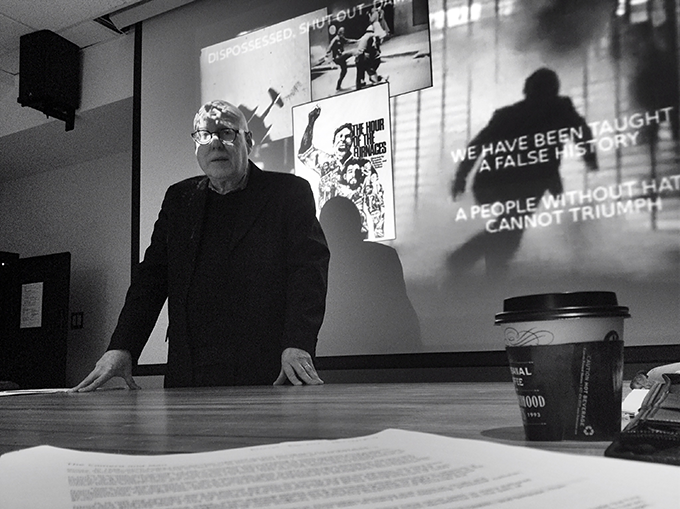
Our Steve
Our Steve is Fox’s personal quest to find out exactly what happened at what is now known as the Hillsborough Disaster. On April 15, 1989, at the FA Cup semi-final football match at Hillsborough Stadium in Sheffield, UK, ninety-six men, women and children were crushed to death. The artist’s brother, Thomas Steven Fox, was one of those who died that day. Twenty-six years after the worst sporting disaster in British history, the fight for justice and peace finally has an arena. With new inquests into the deaths opened in April 2014, Our Steve looks at the process of having twenty-six-year-old questions answered and the effects the inquests have had on the artist and her family members.

Gravity is Quiet
This paper presents research related to an immersive installation that explores the possibility of creating a portrait of a particular state of mind. This optimal state of consciousness, called flow and coined by psychologist Mihaly Csikszentmihalyi reveals a subtle and hidden world of true presence and untapped potential. Entitled Gravity is quiet , this 3channel audio visual installation examines the world of highline as a walking meditation and mines the introspections of various flow practitioners through a singular, yet symphonically built voiceover. The documented individuals push the perceived boundaries of their own mental and physical capacities, illustrating their acceptance of the culture of risk, and the possibility of harnessing fear, discomfort, creativity and joy through the world of movement. Subjects were filmed in Canyon SainteAnne and Kamouraska, Quebec in the late summer of 2015. The installation is based on data collected through participant observation, semi-structured interviews, and visual content analysis of sportfocused media.

Movement In Tradition: Tobe
Movement In Tradition:Tobe is an installation that explores the traditional Sudanese garment the tobe, which is usually worn by Sudanese women after marriage. The project set out to explore the longevity of the tobe in Canada, but ultimately resulted in a comprehensive look at its past, present and future. The many layers and implications of the tradition of the tobe become apparent through mother-and- daughter interviews, which also elicit contrasting views about the garment.

An Impeccable State
An Impeccable State is a multidisciplinary installation drawing on found and constructed archives; a meditation on the concept of social deviance within the context of an imperial, homogenizing globalism. Working in photography, video and sculpture, I embark on a wide trajectory of research and production concerning the nebulous histories of social deviance and control. From Theseus’ defeat of the Minotaur and civilization’s ‘triumph’ over ‘barbarism’; the leprosarium to the asylum; McCarthyism to modern-day deradicalization programs with their claim of a ‘cure’ for violent fundamentalism, An Impeccable State reflects on the attitudes, architectures and apparati manifested in response to the sometimes ‘undesirable’ plurality of the human condition.

Sonic City
By taking participatory action research, utilizing sound as a means of harnessing the socio-cultural, and documentary exhibiting as mimesis, this paper takes themes of contemporary underground dance music culture, sonics, political engagement, and human development in urban spaces and looks at the key processes involved in formulating my documentary project Sonic City throughout the years 2014-2016. From personal experiences in Berlin (GER), London (UK), and Toronto (CAN) to research on the ephemeral nature of what creates thriving underground dance music scenes, this paper proposes that discotheques are vital and underestimated spaces for urban development, where complex socio cultural monads of production and consumption are exercised and actualized. Sonic City as a documentary project is meant to shed light onto the places, spaces, and people involved in this vibrant culture, while as an artistic endeavour is attempting to put relational aesthetics at the forefront of documentary exhibiting, blurring the lines between gallery expectations and dance space experience.

Royal Cafe
Royal Cafe is a journey through rural Alberta’s landscape, streets, and small town Chinese-Western restaurants. A collage-like installation of photos, sound, food, and material, the work seeks to invite wonder while exploring the complex relationship between food, place, and Canadian cultural hybridity.

Public Space
Public Space is a photographic and video project examining the relationship between the public sphere and private corporations. The project explores various sites throughout Toronto and New York that are on private property but have been built with the intention of allowing the general public to have unrestricted access to these areas. These spaces are referred to as Privately Owned Public Space or “POPS”.
The goal of the project is to question and document, through photographic and video practice, these spaces within the urban environment and to challenge others to consider whether these spaces are effective in achieving their intended use and if they are truly accessible to the general public. Loss of the public space is an ongoing issue that faces cities and developers often receive concessions to bylaw zoning requirements in exchange for incorporating POPS. This thesis project is a personal exploration of how these spaces are changing the urban environments of North American cities in the twenty first century.

Hyphen
Hyphen is a conversational, impressionistic film that follows the lives and perspectives of three culturally hybridized individuals living in different cities around the world. Each is trying to negotiate being a constant outsider while also trying to connect with people and transcend gaps in cultural understanding in their different fields. The film examines the changing nature in which we define ourselves in a global era and points to the shift away from a single national identity.

MY NY // DELUXE PICTURE BOOK
MY NY // DELUXE PICTURE BOOK is a photo collage scrapbook of New York City. The act of walking through New York with a camera is an act of reflecting: the artist also reflects upon her family’s relationship with the city, using her father’s photographs as a counterpoint to her own. Power’s walks through the city are both aspirational and aesthetic, bound by the inescapable extremes that it presents. New York looms large in the collective imagination, resulting in a myriad of versions. MY NY // DELUXE PICTURE BOOK is the artist’s interpretation of the city.

Since We Last Spoke
Since We Last Spoke is an autobiographical three-channel video installation that explores the intricacies and tribulations of a modern Iranian-Canadian home. Sabet invites the viewer to witness the impact of the migration experience through an intimate portrait of her own family. Employing personal video footage and recorded conversations between family members, the installation reveals a family coping with interpersonal and cultural frictions caused by displacement.

Brothers in the Kitchen: The Uprising, Exodus and Survival of a Tamil Minority
Brothers In the Kitchen (BiTk), is a site-specific live-documentary performed with an audience inside a fully operational restaurant. The triumvirate of story, performance, and audience is used to create an interactive and immersive documentary experience incorporating oral storytelling, poetry, dance, music, archival materials and television— all performed live. BiTk is the story of the uprising, exodus and survival of Tamil Sri Lankan citizens who fled a brutal civil war and sought refuge in Canada. The ethnic conflict, between the Buddhist Sinhala majority and the Hindu Tamil minority, sparked a mass exodus following the deadly riots of Black July in 1983. Subsequently, a staggering 300,000 Tamils found asylum in Canada. Soon an inordinate number of them began work as cooks and dishwashers in many Canadian restaurants. This live documentary is performed thirty years after the arrival of the first boatload of Tamil refugees, found adrift off the coast of Newfoundland, in 1986.

I'm Not There
I’m Not There is a photographic project that explores the presence of nostalgic places, as memory and images, in the lives of those among the Iranian Diaspora in Toronto who are unable to return to their homeland. The subjects of this photographic project are Iranians who have left their homeland for different reasons and at different times. Among the subjects are political dissidents, artists, people from the LGBT community, and religious minorities who were forced to flee because of persecution and, in some cases, threat of execution. This project will touch upon concepts and themes of exile and nostalgia for a home that is longed for but out of reach. As an Iranian living in Canada, I was compelled to delve into this topic, which spoke to me on a personal level. Moreover, my interest in Iran’s current politics was a strong motivation for me to think more deeply about the notion of exile and to commence this project.
The project is a series of environmental portraits of exiled Iranians in their Canadian homes, with an image projected onto them of a place in Iran that they wish to return to. The photographs aim to address the interconnection between two types of home: the physical one in which they currently live and the one that lives within them as memory. Handwritten texts by each subject accompany the photographs enabling them to express their feelings in their own words. These images reflect my effort to depict intangible notions such as nostalgia and homesickness while indirectly making a political statement about the oppression that initiated these emotions.

Tracing Lilian
Tracing Lillian is a personal quest to understand Lillian Alling, who spent three years walking from New York to Siberia. Through the filmmaker’s narration of a modern-day hike along the Yukon Telegraph Trail, Tracing Lillian searches for remnants of Lillian’s journey. This short documentary uses animated sequences, archival footage and the filmmaker’s present-day footage of the Telegraph trail.

Senza Parole
Senza Parole is a multimedia installation using film, interviews, photographs and objects to tell the story of a young Italian family who emigrate from their small rural town in Italy to build a better life in Canada in 1958. Less than two decades after they arrive, the family’s youngest daughter Rosie, who is Ciampini’s great aunt, dies tragically at the age of 22, leaving behind a five-year-old daughter and two-year-old son. Through interviews, archival photographs, official documents, police records, newspaper clippings and family heirlooms, Ciampini attempts to reconstruct her family’s past and uncover the truth behind Rosie’s death. Senza Parole speaks to the poetic but elusive nature of memory, so inherently fragmented an flawed and attempts to give words to what was left unsaid.

Growing Pains
Growing Pains examines how changes in Canadian policy would impact medical marijuana patients. The proposed new regulations would prohibit approved medical patients from continuing to produce their own medication, forcing them to buy it from government-approved facilities at a drastically higher cost. For many patients, especially those who rely on disability support programs as a source of income, this is not a financially viable option.

No One Says Anything, Everyone Remembers Everything
No One Says Anything, Everyone Remembers Everything is a documentary photo and text essay that examines everyday life in the transitory political present of Latvia, a country emerging from the remnants of the Soviet Union and adapting to a new European identity, with one eye uneasily fixed on its Russian neighbour. Shot in Latvia over two years, the work functions as a coded visual language of cultural symbols and personal references that create a rich portrait of a place and time.

A Stranger's Winter Tale
A Stranger’s Winter Tale brings together narratives and myths about winter in Canada as well as archival and recent footage highlighting the centrality of winter in everyday Canadian life. Particular attention is paid to discourses that create a collective identity based on winter experiences how these relate to people’s perceptions of belonging and national identity. By capturing visual snowscapes and soundscapes of winter, the filmmaker seeks to contrast idealized and everyday accounts of snow. Overall, this film aims to help the audience see the very well-defined Canadian elements of snow and winter from the point of view of the other – one who has adapted to the weather but remains estranged from it.
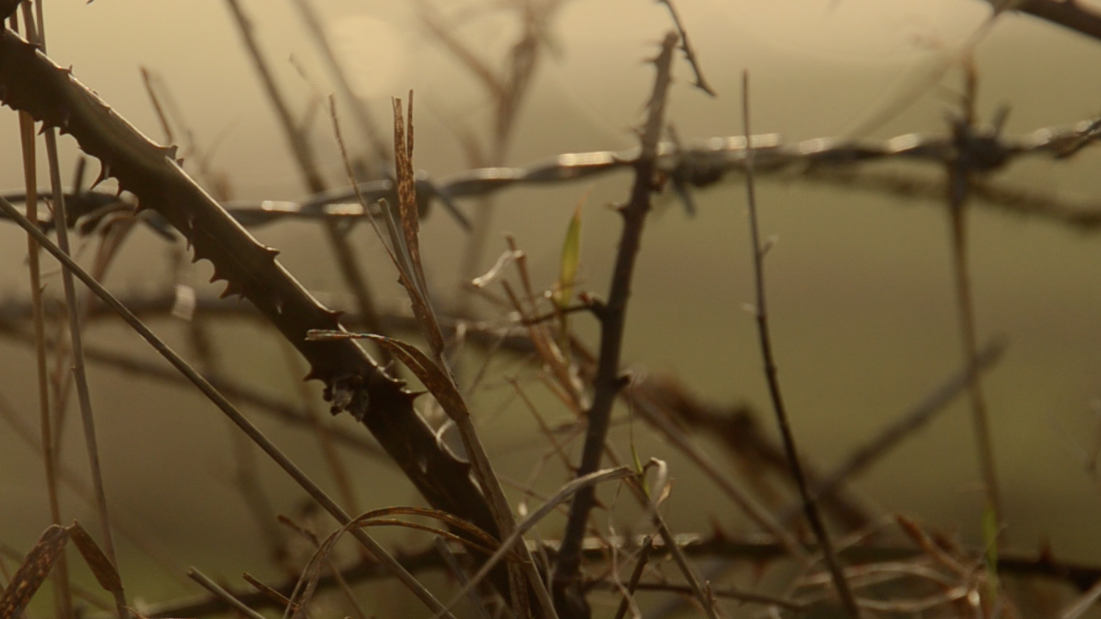
Aos Si
Aos Si is a documentary video-based installation that illuminates the presence of unseen agencies that influence life out on Ireland’s most south-westerly point – Mizen Head. Mizen Head has done its best to keep the old ways alive, but times are changing and the rural lifestyle the peninsula once offered is becoming lost in the name of modernity and development. Rituals and folklore that once prevailed with the belief of the mystical, magical and supernatural are lost in Mizen Head and Aos Si immerses the audience in the sites and scenarios that once nurtured this lost way of thinking. Playing with elements of the fantastical, the installation asks the audience to extend its imagination, letting go of adherence to reality, fact and truth.

Indie Womyn
Indie Womyn is a documentary film that examines the experiences and challenges of being an independent female performer in the music industry. Alysha Brilla is a young, award-winning singer/songwriter and self-identifying feminist who left her record label to work independently, and subsequently released a debut album that met with critical acclaim. The film follows Brilla's progress as she crafts her follow-up album WOMYN - which focuses on issues of empowerment, feminism and human rights - and engages with the artist's political views as expressed through her song-writing and in interviews.

A Positive From a Negative: Coping with Mental Illness
A Positive from a Negative: Coping with Mental Illness is a multi-media documentary about the resilience of people coping with mental illness in Canada. The project consists of interviews with individuals in each province and showcases the power of art and storytelling. The documentary contributes to a vital discussion about mental health by creating a space for people to observe, listen and talk about their own personal experiences. It becomes a safe space for people to learn and for people to teach about mental illness. Through photography, audio and online presence, the documentary provides some understanding of living successfully with mental illness and acknowledges the ongoing hardships involved in the process.
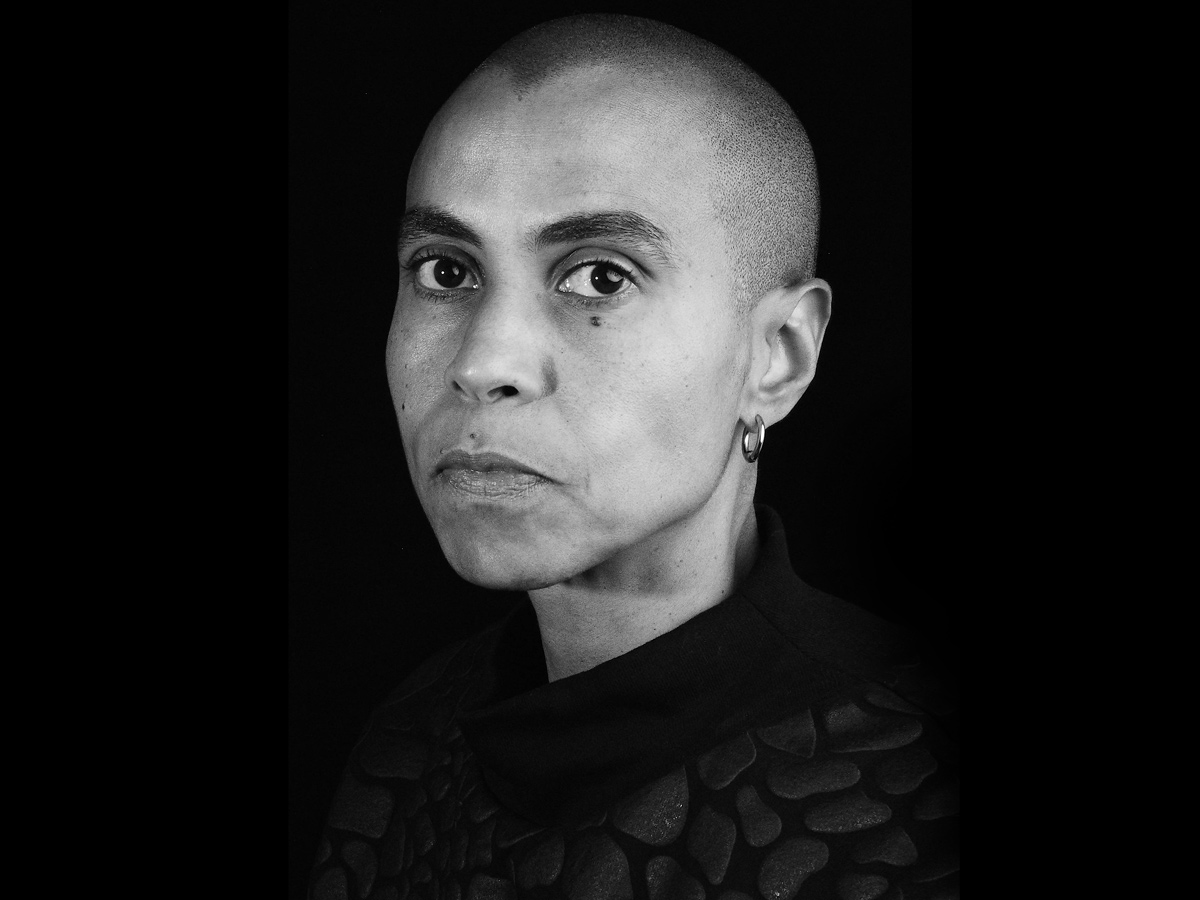
Parade of Champions
Parade of Champions is a three-channel video installation that explores grief experiences of three black queer people following the deaths of their mothers. Employing still video portraits and audio interviews, this immersive three-channel installation invites viewers to bear witness to this black queer grief.

Parallel Lines
Parallel Lines is a story about Gorton’s decision to actively search for her biological parents with the hope of resolving historical questions and satisfy curiosities that come with adulthood. Her adoption was never kept secret, and she grew up in a loving home that always affirmed her decision to look for her natural parents. Discussions about her adoption however, take an unexpected turn when her parents reveal their discomfort at the thought of someone else being present in her lift. Gorton is faced with gently balancing concerns of the family she knows and loves with preparing for unknown consequences of her search and what will happen when Parallel Lines meet.

Boom, Baby, Boom
Boom, Baby, Boom is a short documentary that explores the meaning of mortality and creativity in a time of crisis. In Boom, Baby, Boom we meet Banuta, a highly successful and eclectic theatre director, writer and performer. Two years previously, Banuta and her husband Nic – a saxophonist and composer – were informed that Nic had terminal cancer and would not live for more than a year. During his last 12 months, in an effort to blur the lines between life and death with the power of art, Nic and Banuta created more than they ever thought imaginable. In this film, Banuta reflects on the very last day of Nic’s life, and the surprising lessons she has learned since.

Etima
Etima is an autobiographical film in which a single mother attempts to build a new life with her seven-year-old daughter as the pair travel from their previous life in Uganda and Cameroon to their current life in Canada. The film reflects on the impact of sexual assault and family violence on parenting a young, mixed-race child. Using home movies and footage shot over the span of a decade, Etima explores the complexities of family life before and after the director’s husband is accused of rape and sexual assault. Under the shadow of the father’s actions, the mother must decide what her daughter will know about their family’s past and how she will interact with her father in the future.

Text to Play
Text to Play is a portrait of emerging video game artist Kara Stone, an aspiring digital media artist striving to make a name for herself in a predominantly masculine videogame industry. Stone, and game designers like her, are revealing the potential for games to create unique experiences and speak to otherwise marginalized audiences. As independent games like Stone’s become more common, the question of what defines a videogame will be more contentious. Text to Play explores this question as it follows Stone to California where she shows her text-based game, Sext Adventure, at a gaming festival. Text to Play draws on familiar arcade aesthetics while challenging expectations about videogames and highlighting issues of gender and sexuality in videogames and in the gaming industry more broadly.

Don't Fix It
Don’t Fix It is a short documentary that reveals physical insecurities and body image struggles between female members of a family. It begins with a simple question from a daughter to a mother, “When you look at your daughters and they’re never happy with the way they look, ever, none of us are, what do you think about that?” To which she replies, “To me they’re all just beautiful.” Her own physical insecurities and denials are reflected upon alongside two of her daughters.
The conversation is visually represented with sketched stop motion animation, reflective video and collage. The sketches represent how the three family members navigate their own physical insecurities. They discuss their own self-monitoring and restrictions and how body image struggles can be passed down from mother to daughter. They also reflect upon a larger narrative around a system and culture that denies bodily self-love.
In a time where the body image discourse has moved into the mainstream, and there is an abundance of theories, films and movements targeted at creating positive self-image, there is also a sense of hopelessness. That even with all this knowledge nothing seems to change. Don’t Fix It is an attempt to create an honest conversation to show the multitude of layers that affect body image and reflect upon personal insecurities within a complicated system.

Moving Still Life
Moving Still Life is a short documentary film about the plight of homeless youth in Toronto. On any given night, 1,500 - 2,000 youth are homeless in Toronto, but the current shelters can house only 418. Often misunderstood as rebellious, the primary reason for their homelessness is, in fact, family conflict. Moving Still Life follows two youth, Joel and Brandon, each in a different stage of the shelter experience, and shows how a connection to the arts can play a positive and dramatic role in helping one to thrive, not just survive. The research conducted on this film expands on the serious issues homeless youth face, as well as how the arts can be a crucial tool in their search for independence.

The Unspoken Known
The Unspoken Known is an interview-based documentary that explores the presence, or lack thereof, of individuals who have physical disabilities within the Canadian workforce. The documentary focuses on the depiction of such issues as social stigma, corporate outlook and myths and miscomprehensions of physical disabilities.

Ritual: Good Friday in Toronto’s Italian Immigrant Community 1969-2015
Ritual: Good Friday in Toronto’s Italian Immigrant Community 1969-2015 is a book of some 100 photographs and texts, as well as an accompanying exhibition that document the Good Friday procession – an elaborate event that takes place annually in the streets of the historic Italian community in Toronto. Consisting of multiple re-enactments with amateur actors and statues of Biblical tableaux depicting the “Via Crucis” (the Way of the Cross), the event commemorates the passion and death of Jesus Christ, one of the most fundamental rituals of Christianity. Tens of thousands of people attend each year to walk in reverence or to stand on the sidelines as observers. Since 1969, year after year, Vincenzo Pietropaolo is there drifting among the crowds, interacting with the participants, and photographing the event in this annual pilgrimage which has become his own personal ritual as a documentary photo artist.

Beautiful Waters
Tis paper supports the work Beautiful Waters presented in May 2014 at Artscape Gibraltar Point and Artscape Youngplace, Toronto, Canada. Beautiful Waters is an immersive video-sculpture that challenges the ongoing separation between nature and culture while exploring the necessity for a reconciliation between the residents of Toronto and Lake Ontario. Te luminescent sculpture seduces visitors, inviting them to enter and be mesmerized. Once inside, visitors are immersed in a multi sensorial experience that combines abstract images of Lake Ontario with hypnotic electronic melodies.

Light of my Eyes
This paper is written in support of Light of My Eyes, a short documentary that portrays Zahra, an eleven-year-old Iranian girl who was born blind. Zahra’s mother, Masumeh, plays a significant role in her life; on a personal level she teaches her how to become an independent woman, and on a social level, she encourages Zahra to challenge the social barriers and presumptions about blindness. The film offers a different perspective from the mainstream view on how a blind girl is “supposed” to live and other issues related to blindness in Iran. By letting Zahra and her family tell their story in an open and direct manner, the film attempts to create a dialogue between the disabled and able-bodied individuals in society.
The print and visual media have always projected a manipulated image of disability well into the twentieth century until disabled people began to create their own images, mainly through autobiographies. This paper discusses the concept of disability through the social model of disability studies and it focuses on the strategies used in the film to build a relationship with the subjects that reflect this model. Key is how to build trust and consider all ethical issues involved in making a film about a sensitive and complex topic as how to live one’s life as a blind girl in Iran.

A Ghost in our House
This paper is written in support of my 45 minute !lm, A Ghost in Our House, which investigates my family’s past in relation to my father’s AIDS-related death in 1995. e story is summarized and a cultural context is provided. Ethical issues in autobiographical !lm are discussed with regard to motive, consent, and disclosure. Issues speci!c to !lming family, treatment of archival material, and use of place and landscape are considered. The !lm’s social relevance is contextually set in reference to domestic ethnography, mourning, autoethnography, and an existing body of works concerning AIDS.
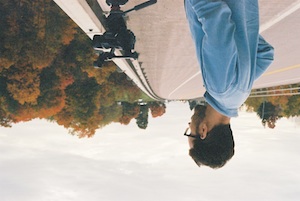
Love and Genealogy
My time at Image Centre was a time of searching for a meaningful thesis matter. While I explored several ideas, I ended up meeting the love of my life, a fellow Documentary Media student, Sarah Gladki, and we embarked on a road trip together retracing the footsteps of my paternal grandfather, Samuel (nee Solomon) Jacobs. This paper presents a critical analysis of my thesis film, Love and Genealogy, which was crafted from our journey. Inspired by essay and journey documentary films, avant-garde cinema and the New Hollywood fiction films of the 1960’s and 1970’s, my film uses different film mediums to explore diverse aspects of documentary through the use of voice over and genre fusion, in telling a narrative of two people who needed to look to the past in order to live in the present and look forward to the future.
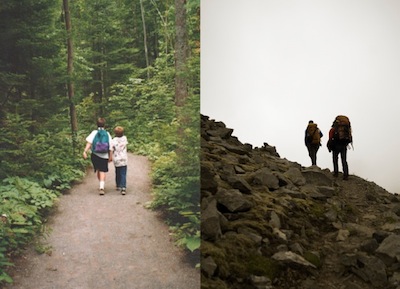
As Brothers We Grow
This film is but a glimpse of an unusually complicated coming of age tale of a single autistic individual. Tommy Des Brisay is a person with autism spectrum disorder (ASD) now reaching adulthood, and Paul is Tommy’s older brother, alive with the spirit of independence and travel. Tommy’s favourite teachers are Walt Disney and Dr. Seuss. Paul learns about life differently, favouring Charles Darwin and Gregor Mendel. Through a fusion of home video, backcountry camping trips, and short animated sequences, As Brothers We Grow is an intimate portrait of two brothers which reveals what it means for one brother to grow up with ASD and what this means for the brother by his side.

Trapped Light
Trapped Light is a Major Research Project (MRP) that takes light as its subject and explores it with holography and interferometry. This paper situates Trapped Light (and specifically holography) in its historical and theoretical context, while casting holography as a medium that not only represents the experience of visible energy, but also broadens the existing definitions of documentary. Trapped Light also examines leading artists who work with light as their subject or as the material of their works, including August Muth, James Turrell, Paula Dawson, Margaret Benyon, and Tim Otto Roth.

El Settat: Beyond the Blue Bra
Feminist documentaries advanced in the 1960s and 1970s as a result of feminists theory dedicated to analyzing the practice of creating feminist works, and the image of women widely present in mainstream art and broadcast culture.The documentary El Settat considers these origins and theories of feminist documentary by putting them into practice. El Settat demystifies images and ideas of women in the male dominant culture in Egypt. Additionally, El Settat serves to comment on the role women in Egypt have taken in progressing women's rights in recent Egyptian history. This paper explores elements shaping feminist film in Egypt and the West primarily in the 1960s and 1970s, the foundations of women's rights in Egypt and the documentary I made as a result of these considerations.

Redonda
The installation project, Redonda is the result of research, online image sourcing and the production of new photographic “documents” based on the history of an island called Redonda. For a short time in the 19th century phosphates were mined on the island, which is located in the Caribbean Sea close to Antigua. Since 1929, it has been uninhabited except for birds, plant life and a few goats. Despite the fact that Redonda remains unpopulated, it has a unique history shaped by both truthful and fictional events. Currently, there are four men who claim to be the King of Redonda. The “Kingdom of Redonda” lives in cyber space on websites created by the “Kings”. They are dreamers who have wandered into the world of the Internet where virtual geography is limitless. The Internet provides a virtual archive in an ephemeral capacity, similar to the Kingdom itself. Developments in media and technology play a significant role in how a document can be defined.
My fascination with mining the unique history of the island is that it provides the opportunity to experiment with perceptions of ‘reality’ and to question the authority, authenticity, context and meaning of the document. My role in the project is not only that of image maker, but also collector and curator. The exhibition of the work borrows the form of a timeline using image and text to present a curated history of the island that combines truth and fiction.
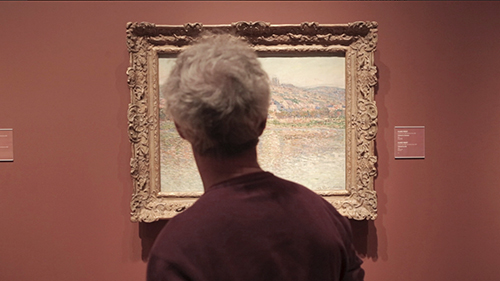
HIS SIGHT OUR VISION: COLLABORATION BETWEEN ARTISTS
This paper explores the collaboration between a filmmaker and the film’s ‘subject’ who together push the boundaries of authorship and documentary truth through the production of a short film. As this paper examines the key themes, documentary relevance and methodologies associated with the production of said film, the unique use of fictional techniques paired with a goal for honestly is revealed. This paper is meant to be read in conjunction with the viewing of Persistence of Vision.

Photos by Kirk
Photos by Kirk tells the story of an Armenian Genocide survivor who immigrated to America in 1920 and worked as a photographer in the Bronx from the 1920’s to 1970’s. Kourken Hovsepian (professionally known as Kirk) photographed weddings, bar mitzvahs, confirmations and local events. His photographs document a unique period in New York City’s history and the ethnically diverse inhabitants. Though he lost his whole family in the tragic events of 1915 in Turkey, Kirk’s story revives the American Dream and what it means to document generations of celebratory events in other people’s lives and families.

Landed: Together in Canada
Landed: Together in Canada is a multimedia installation by artist Sarah Foy. It was shown in Toronto, Ontario in May-June 2014 as part of the DOC NOW Festival and the WorldPride/ Toronto Pride Festival. Landed is composed of photographs and audio recordings that tell the stories of same-sex binational couples who immigrated to Canada because they could not live together in the United States. The project explores how these couples struggled to stay together, how they decided to immigrate to Canada, and how recent changes in U.S. law will (or will not) affect their plans for the future.

three rivers: monument to an oil spill foretold
three rivers: monument to an oil spill foretold is an interactive documentary installation addressing the consequences of having an oil pipeline transporting diluted bitumen across the northern border of Toronto. It utilizes abstract visuals in conjunction with gesture-based motion controls to foster a space of contemplation for viewers, with additional informational graphics and text providing factual specificity. Contextualized as a memorial to the Humber, Don, and Rouge Rivers, this project challenges viewers to reflect upon the high potential for a future pipeline disaster in order to stress the ramifications of inaction in the present.
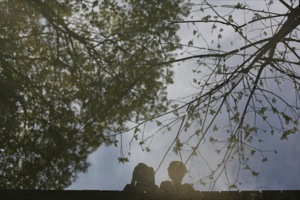
The Suitcases
The Suitcases is a mixed-media installation that explores multi-layered visual/aural discourses of forced migration and displacement. Through the oral histories of three immigrant women from three different transnational communities (Palestine, Sri Lanka, and the former Yugoslavia), it deconstructs the rhetoric of war/conflict and locates the human voice amid grand narratives of forced migration and displacement. The Suitcases is both a personal and political journey to comprehend and reflect upon how being denied the right to belong—to a place, to a culture, to a language—has ruptured lives and suspended people between borders/markets/polities, between here and nowhere.
The Suitcases engages in questions relating to these complex dislocations: what does it mean to arrive in an alien country with only two suitcases—not knowing the language, landscape, weather, knowing nothing, planning nothing? What does it mean to leave behind everything—home, the place in which you were born and raised, family, friends, familiar food—suddenly—fleeing from persecution/ torture/ threat to life? What does it mean to arrive when you do not even know when you can go back or whether you can return at all?
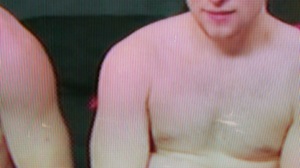
Straight Guys
“Straight-Guy Porn” is a wildly popular subgenre of online amateur pornography that features supposedly heterosexual men having sex with other men for a gay male audience. Why do some gay men prefer to watch sex between two heterosexual men? Where does this desire come from? Is it innate or is it learned? And why would men who identify as straight choose to perform in gay porn? Straight Guys follows filmmaker Daniel Laurin on his journey to answer these questions and reconcile his own relationship to this type of pornography. Daniel speaks to porn historians, porn theorists, porn producers and the performers themselves.
Straight Guys is a lighthearted look at a very real and pressing set of questions. As children and teenagers get more and more of their information from the Internet, pornography has become an increasingly prevalent source of sexual education. It is an even more influential resource for gay/ bisexual/questioning teens, who have very few examples of gay sexuality in mainstream media. This film uses Straight-Guy Porn as an entry point into deeper questions about gay desire in a very straight world.
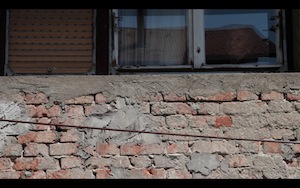
Close the Door
Close The Door is a poetic, magic-realist film about the space between an ending and a beginning as told through the story of a grandfather in possibly his last moments of life and a grandmother in constant waiting, juxtaposed with images of their house in Bosnia damaged by war. Time moves forwards and backwards in an unpredictable manner determined by memory, loss, longing, sorrow and love. How can we move forward when the past has such a strong hold on us?
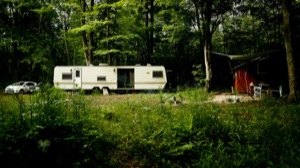
Every Story has a Twist
Idiopathic scoliosis is a condition that is unknown to many people, in spite of about 4% of the population being afflicted with it. This thesis paper is written in support of the documentary, Every story has a twist, a film that I wrote, produced, directed and edited. It is a portrait of Angola Murdoch, an aerial artist who was diagnosed with Scoliosis at the age of 11. Several techniques and documentary modes are used throughout the film to tell her story, including projections, aerial dance and dramatization; interviews; observational and voice-over.
This was an important film for me to make because I also have a personal connection with scoliosis through my daughter Suhani who went through a similar journey as Angola. I hope that the film will be a useful tool for people to understand a condition that is not well known and inspire those who are living with it.

A Shift in the Landscape: A Documentary Film about Richard Serra's Shift
A Shift in the Landscape explores the ongoing battle to protect Shift, one of pioneering American sculptor Richard Serra’s earliest site-specific artworks. In 1970, a young Serra began to create this monumental sculpture composed of six concrete walls— each measuring 1.5 metres high and 20 centimetres wide—that zigzag across a farming field in King City, Ontario. Since then, Shift has remained tucked away in this remote Canadian field. Shortly after art collector Roger Davidson commissioned Shift on his family’s farmland, he sold the land to a development company, which inadvertently became the sculpture’s lawful owner.
This documentary is particularly timely because, while Shift has been left undisturbed for more than 40 years, the developer has recently started to build houses on the adjacent land. In June 2013, Shift was made even more inaccessible by a chain-link fence that the landowners put up around the property, cutting the work off from the outside world. Through interviews with art historian Rosalind Krauss, King City councillor Cleve Mortelliti and Richard Serra himself, as well as panoramic footage of Shift, viewers are given unprecedented access to this now-threatened masterpiece and the creative process behind it. A Shift in the Landscape shows why it is vital that this artwork be protected from encroaching housing development by highlighting what it means to the King City community and, on a broader scale, the international art world.
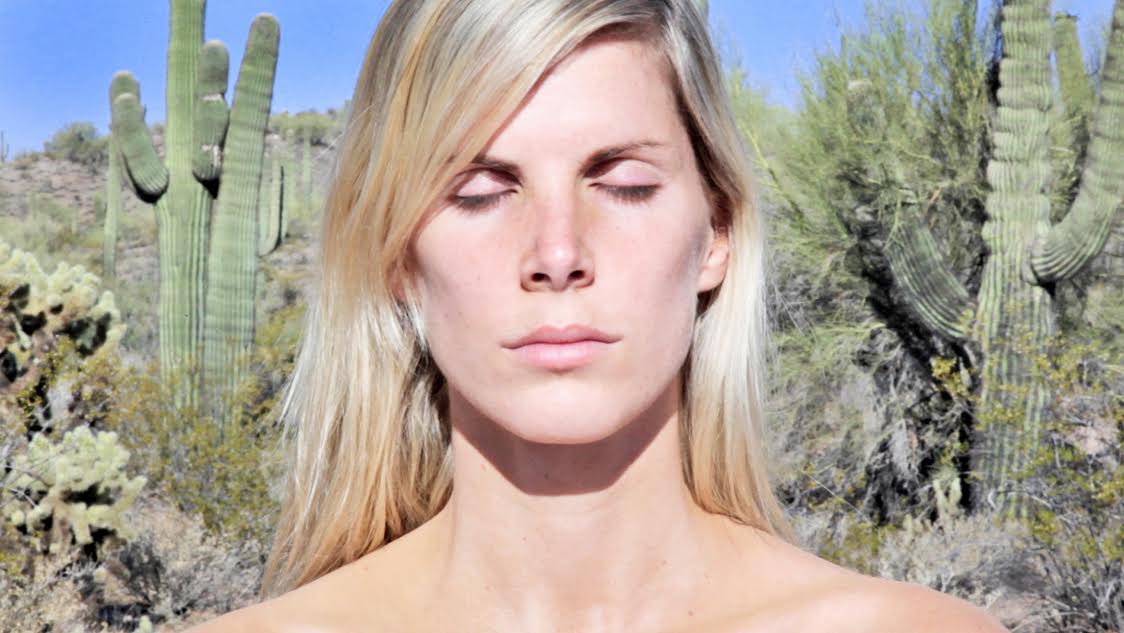
Imprint
This paper functions as a companion to the MFA project. In structure, content, and style, the purpose of this paper is to reflect the work of art and expound upon the many theories and philosophies that inform the project. The paper is structured by the same three central elements that constitute the artwork, which should read as a kind of equation: landscape + body = imprint. Each chapter is meant to contextualize its respective topic: the concept of landscape is unpacked through discussions of place, space, time, beauty, the sublime, and culture; the body is fleshed out through an exploration of performance art history, the nude, gender, and the relationship between the worlds of matter and spirit; the significance and ephemerality of the physical imprint are considered through a study of the index (a visual imprint), the voice (an audible imprint), language, and metaphor.
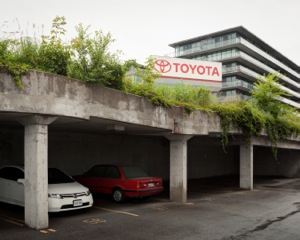
Other Spaces
Other Spaces is a landscape photography project examining the paradoxical relationship between natural space and built space in urban environments. The project explores various sites which stage odd collisions, juxtapositions, and interplays between human-built elements and natural elements, and is strongly influenced by the aesthetics and subject matter associated with the seminal New Topographics exhibition.
The project culminated in a gallery show which was on display at Toronto Image Works during the month of June 2014, and the purpose of this paper is to introduce the ideas that the work comes into contact with in order to help locate the project within several diverse fields of academic discourse such as human geography, cultural studies, and photography studies.
The project’s title derives from Michel Foucault’s concept of the heterotopia, which is used as a conceptual anchor for the project based on the notion that when seemingly incompatible spaces collide, relationships invert and they can begin to mirror one another. While little has been written about the heterotopia in relation to landscape photography, there are several areas of overlap that make it a useful conceptual tool in analyzing the representation of space, which deserves further exploration.

Consumption Overload
Every human action has consequences for the environment and the ecosystem. Often we are not aware of our negative effects on the environment and the globe. Consumption Overload is a multifaceted documentary project about the environmental and social issues we currently face. The project combines photomontages, headlines from news articles, HD video projections, and a photographic book to represent the challenges involved in sustainable living. Consumption Overload presents a range of problems such as air pollution, climate change, and deforestation. These complex, layered photomontages explore the altered landscapes and ecosystems that we inhabit and which we have manipulated for our needs. As we are faced with uncertainty and confusion by the overload of mixed opinions and information provided by mass media, the project re-appropriates images and news articles to create a new interpretation of contemporary environmental and social issues.
Situating this work in a broader field, this paper also looks at the work of photographers who have used documentary photography as a tool for social reform and to communicate social and environmental statements. Furthermore, the paper is a detailed analysis of what I have learned and discovered in the process of creating Consumption Overload, a project that seeks to show the ways in which the human race is disturbing the environment and the vastness of anthropogenic impacts – offering, in the end, no single solution to the problems we face today.

Year One
Despite the reported decrease in birthrates in Canada, having children remains a common life choice. Year One is a web-based documentary about one couple’s decision to start a family and their parental experiences in the first year. The viewer is able to observe daily and overnight events unfolding around the couple and their new family, both the ordinary and extraordinary movements of raising a child. A compilation of photographs, interviews and domestic sounds join together on an interactive platform to shed light on the couple’s experience, allowing the viewer to partake in the couple’s journey throughout the year.
Year One reveals their changing lifestyles, evolving relationships, and how they negotiate their new roles as mother and father. Through these changes and mutual support in a life-altering situation comes the development of a cohesive family. The viewer is taken on a chaotic ride of infinite questions, sleepless nights, and ultimately the strengthening bond between husband and wife, parent and child.

Adam
We live in an age of scientific revelation. Headlines announce the discovery of the “God particle” and proclaim visible evidence of the first tremors after the Big Bang. Ours is a time in which science and religion are often pitted against one another in a narrative of opposing forces. But are there ways in which gospel truths and scientific proofs intersect? Adam is a short documentary that looks beyond us, towards the stars and the firmament above. The film follows the voice of an eponymous guide. Adam has his PhD in astrophysics from Princeton University and works in the field of physical cosmology. He also happens to be a young Jesuit training to become a priest. In the film, Adam relates his motivations to enter the Society of Jesus and describes the work that he does in astrophysics: building telescopes that go far above the atmosphere to capture images of the distant past. Using found footage from various sources, including NASA’s bank of heavenly images, the film explores ideas about the stars, and asks us to reconsider whether science and religion are as contradictory as they may appear. Adam examines the roots of our universal search for knowledge, and is ultimately a hymn to that most basic human desire to understand what we are made of and why we are here.
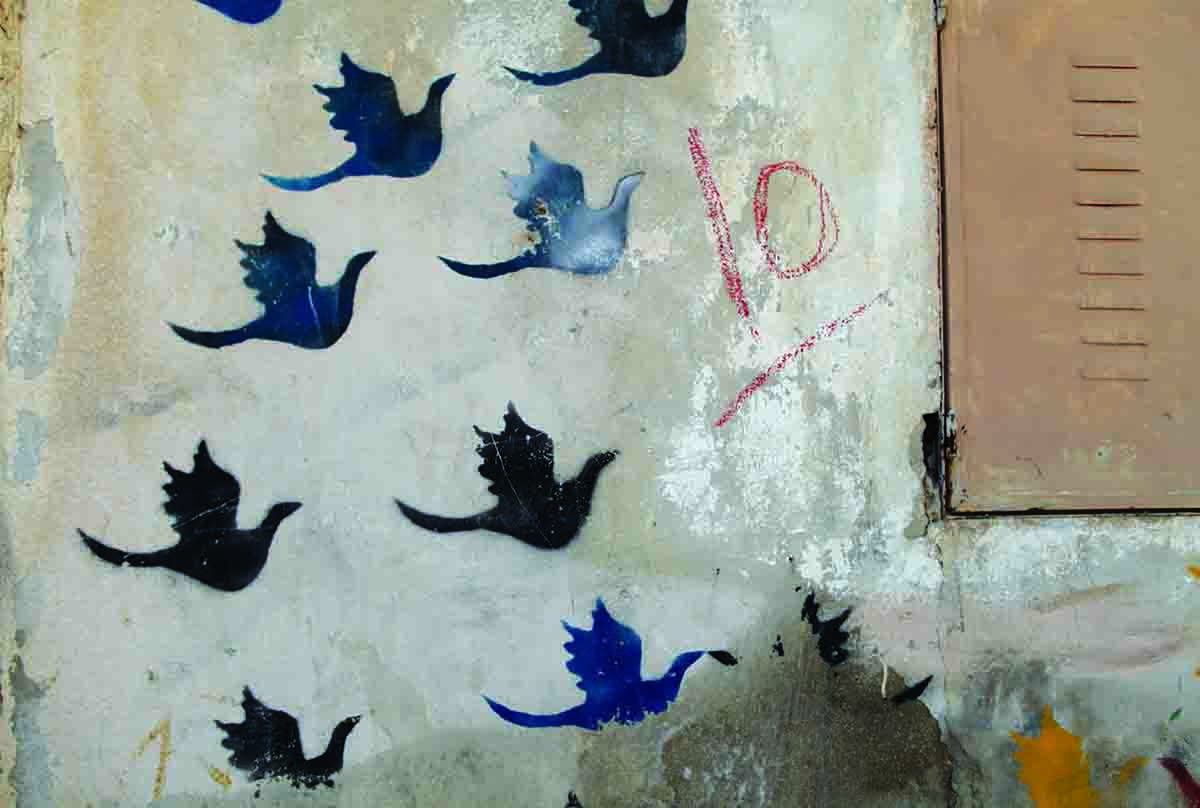
Zinco
Zinco is a short documentary film that chronicles the evolution of construction material used in building Palestinian houses in Talbieh Refugee Camp in Jordan. The film documents the transformation of refugee houses from tents of canvas to buildings of reinforced concrete over the 45-year lifetime of the camp. Using the construction material as a signifier of exile and loss, the film looks for visual manifestations of displacement. Its title ‘Zinco’ is an Arabic slang word for the corrugated tin that still covers most of the camp’s habitats today.

87 Percival
“We shape our buildings, and afterwards our buildings shape us.” —Winston Churchill. 87 Percival investigates notions of space, identity, memory, and loss in relation to the childhood home. The work contemplates the dualistic nature of our domestic spaces as places of belonging, but also as sites of unresolved histories. It does this using the theoretical framework of the German concepts of heimlich and unheimlich, identifying the domestic as homely but simultaneously un-homely. Five years after Broadhurst’s parents’ divorce, her childhood home was hastily renovated and sold, marking the fracture of over 60 years of family heritage in this location. The installation questions the role of art as a method of coming to terms with loss, informed by Broadhurst’s experience mediating on loss through her artistic process. 87 Percival holds out the hope that acts of family reconciliation may be multi-generational and cumulative in nature. The work also reflects on the childhood home as a significant site for the formation of our adult identities, acknowledging that dwellings have a role in manifesting personal histories. 87 Percival attempts to raise universal questions regarding what it means for an ageing house to be cleansed of the markers of its past, asking whether it is ever possible to return home.

The Edible Indian
The Edible Indian is a short documentary film that takes an intimate look at the issues of First Nation’s identity in Canada through the lens of food. Three aboriginal chefs of different backgrounds are asked the same question, “What is your favourite meal?” and asked to prepare that meal in their kitchens. The Edible Indian re-examines the traditional role of the kitchen as not only a space for cooking but also a place of storytelling and cultural exploration. While cooking, these chefs share stories of their personal relationship to their cultural heritage, their culinary passions, and what being First Nation’s in the twenty-first century means to them.

Going Beyond Myself
Going Beyond Myself links the stories of two women from post-industrial European societies with that of a woman from rural Mexico. Lucy Cherrington of London, England and Izaskun Cassanova of the Basque country of northern Spain travel to the small Mexican town of Zipolite in La Costa Chica on the Pacific. They set out to shed their preconceived identities as single working women and to build new, different lives. We also meet Miriam del Angel Garcia, a Zipolite local who finds strength in her independence as a tamale vendor. From different worlds, with different opportunities in life, these women share similar stories of the struggle to redefine themselves in a rugged environment. Going Beyond Myself questions why women from post-industrial societies chose to leave their families, histories, and lives to settle in a remote area with few modern comforts and overt violence against women. It documents the possibility of “being at home anywhere” and exposes the difficulties this choice brings. How these three women deal with the local macho culture underlines their similarity. Their testimonies reveal how this struggle has brought more meaning to their existence, raising questions about exceeding limitations no matter where one is.

The (Real) Mean Girls
The (Real) Mean Girls explores female bullying among teenage girls. Audio interviews of women recounting their experiences of being bullied as adolescents are woven with recollections from the artist’s memory of being a bystander during a bullying incident as a teenager. The work employs visual collage– incorporating live-action re-enactments, animation, archival footage, and images from an old high school yearbook- representing that time in a girl’s adolescence when she cobbles together a cohesive identity from the many forces trying to shape her. The work addresses themes of memory, guilt, trauma, and girlhood.

The Silent War
The Silent War is a photography and video installation inspired by the cemetery for martyrs of the Iran-Iraq War, one of the bloodiest wars of the twentieth century. Momeni recreates a cemetery by simulation, to illustrate the effects of the war and its subsequent memorialization. As a metaphoric translation of this unique space, Momeni’s installation presents gravestones made of the pictures of the cemetery, video projections, soldiers’ letters, and the wills written for their families. This material was collected from actual graves and the Iran War Museum archives or obtained directly from the families of martyrs. The installation is mounted in a dark space to create an unsettling experience for the viewers, to evoke respect, and provide a contemplative atmosphere. The Iran-Iraq War was an armed conflict between the armed forces of Iraq and Iran, lasting from September 1980 to August 1988. In this conflict, the estimated casualties were 1,000,000 for Iran and 500,000 for Iraq. It was the intercession of the United States in1988 that was crucial in bringing the war to an end.
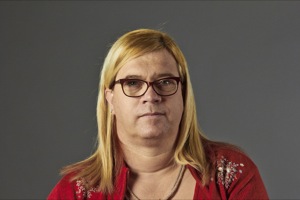
The Order of Things
Gender plays a central role in the creation of social identity. It is fundamental to how we see ourselves and how we order the world around us. We learn to read and decode gender from a young age. Conventional wisdom holds that sex, as designated at birth, determines gender but in fact gender is a construct. It is learned, idealized, and reinvented. The transgender exist outside the binary of man or woman and, consequently, are often relegated to the periphery of mainstream society. The changes they undergo emphasize how gender is a continuum. However, having moved along this continuum, the transgender are in a paradoxically privileged position to understand things about the gendered world that most do not. A video installation, The Order of Things explores the relationships between gender, identity, and society. Transgender individuals from a range of ages, backgrounds, and circumstances share their observations of, and lived experience in, our gendered world. Inspired by Levinas’ claim that “the face presents itself and demands justice,” these individuals turn to face the audience only when a viewer is close to the screen. This rudimentary interaction reframes the image as an encounter that challenges one to contemplate the notion that the ways in which we do not understand things are as important as the ways in which we do—that, perhaps, there exists some order beyond the binary.
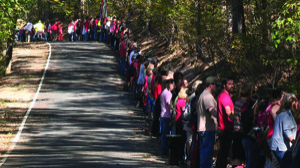
SEEKERS
SEEKERS is a film that explores a movement by a growing number of people in the West disillusioned with the direction the world is taking politically, economically, and environmentally. The film documents their attempts to seek deeper spiritual meaning in their lives. As the director sets out on her own journey to discover what’s missing in our world and to understand the seekers, she delves into the connection between two of the world’s oldest wisdom traditions, Buddhism and Native American spirituality, leading us on a larger journey of interconnected consciousness. The film explores whether the answer to shifting our worldview is found in science or spirituality, or both. Filmed in Arkansas, Colorado, Ontario, and elsewhere, SEEKERS is centred on two events: an 800-person gathering at the base of a mountain sacred to Native Americans in Hot Springs, Arkansas, to raise worldwide spiritual consciousness, and a gathering of 800 at the Wake Up Festival, an inaugural assembly of seekers and spiritual teachers in the Rocky Mountains of Colorado. SEEKERS documents a growing counter-tradition, a weave of voices and ideas that have nothing to do with today’s mainstream consumer society.

Entangled Spaces
As a photographer who has worked in the advertising world for over 20 years, Andrew Waller is drawn to the impact visual branding and advertising have on the world around him. The form of the natural world is changing around us—with the urban environment becoming the predominant natural environment for most of humanity. More than 3.5 billion people live in cities. Understanding how this environment is formed and how it affects us is essential to understanding both personal and cultural identity. Through the installation Entangled Spaces, Waller explores the impact of visual branding and advertising on forming that environment. Often the sheer volume of visual branding material in our daily environment is overwhelming, obscuring the city it is built on, producing new architectural forms and spaces. We need new ways of seeing and analyzing these spaces. By highlighting the presence of visual branding, this project seeks to engage the viewer in a discourse with these new architectural forms, and present new critical ways of understanding them. By exposing the spaces formed by urban signs and symbols and removing the environment that supports them,Entangled Spaces hopes to reveal the complexity of the branded space and its relationship in forming cultural and personal identity.
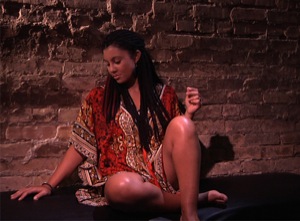
You're Not My Target Audience
You’re Not My Target Audience. is a documentary film, created by queer women and intended for queer women. Following three professional performers as they navigate their careers as queer women artists in Toronto, the documentary uses interviews, spoken word, and performance pieces to address issues of access, invisibility, and oppression. Theatre creator Moynan King, hip-hop artist MC Jazz, and performance artist Jess Dobkin discuss their artistic works and the mandates and uses of various performance spaces in Toronto. By no means are the women of the film victims. This is not a story of women defeated. You’re Not My Target Audience. demonstrates how women are still creating, producing, and supporting one another as they determine their own destinies despite the challenges they face. With a cast of all queer women, the film negotiates the obstacles and celebrates the achievements of queer women performers in Toronto.

Extended Portraits
The notion of the “extended portrait” has a long history in photography and implies capturing a multitude of revealing moments as well as the possibility of certain moments lasting longer than others.The exhibition, Extended Portraits: Bringing Artists Into Focus attempts to push the conventional boundaries of portraiture, documenting individual artists’ lives; utilizing still photography, motion picture, video and the hybrid “still-video.”Two of the artists Allen has documented are Québecois: legendary cineaste Michel Brault and sculptor Claire Brunet. Another sculptor, Catherine Heard, the poet Paul Dutton, and photo-based museologist Vid Ingelevics round out the list. The artists’ own works were taken into account as Allen considered the best approach to create their extended portrait. Allen痴 interaction with Catherine Heard was somewhat typical of his time with his other subjects. After an initial meeting to establish goals and comfort levels, Allen returned to photograph and videotape Heard in her studio on three occasions; first to make long-exposure 8x10 photographs that imply movement, again with the 8x10 to freeze her with flash, and finally with a smaller digital camera to capture more spontaneous, fleeting moments and details of her surroundings that give the viewer more awareness of Heard as a creative artist.

Well-fished
Grace and Fallon are no “shore captains.” They favour the salt, wind, and wet tresses of the sea to working ashore. Well-fished is a documentary film exploring the lives of two young women who, unlike other girls their age, have big dreams of living a life working on the Atlantic. The film portrays Grace and Fallon’s connection to the older and disappearing fishing traditions of Nova Scotia.Nova Scotia’s population and landscape have drastically changed throughout the decades. The role of women was also transformed with the passing of traditional gender roles and the decline of the male dominated fishing industry. Women have always participated in the ever-important shore work, but today it is becoming more common for women to be stepping onto boats as well. The film speaks to the rapidly changing society of Nova Scotia and the pride associated with working on the sea.The film was shot during the two-month lobster-fishing season in 2012. Through an intimate approach and point-of-view perspectives, the film follows the women’s daily work routines while drawing on anecdotes and scenes of maritime life. Well-fished champions the preservation of a way of life for younger generations who call the province of Nova Scotia their home.

Navigating, Fences
Navigating, Fences is an installation comprised of photographs, video, and hand-drawn maps. The subject matter of the installation is the everyday, overlooked fences that exist everywhere in the city of Toronto. What began as an exploration into artist Sarah Gladki’s obsession with looking at fences has evolved into a project that considers how seeing and studying elements of the overlooked can reveal new insights about the city and the self. To communicate this, the installation Navigating, Fences expresses Gladki’s experience as she travelled through the streets of Toronto in search of fences to photograph, while it also shows how Gladki sees fences: Each possesses its own unique character.Gladki’s focus on fences explores the emotive aspects of architectural structures and their innate connection to their geographical locations. This way of seeing introduces a new or unrealized experience of the city, bringing attention to a structure that is often overlooked, and commonly perceived of as an obstruction—limiting and barring. The interplay between architecture and individual perception is at work here, where both act to shape and influence the other.

Domestic Product
Domestic Product examines the border zones between art and anthropology, questioning the possibility of representing cultural differences and contiguities through landscape, routes, and kinetic motion. Regarding highland Guatemala—with its legacy of civil war, indigenous genocide, and land rights struggles—through the lens of domestic ethnography allows for a consideration of image ethics, privilege, proximity, and the codes of documentary representation, positing film-based visual art as a tool of decolonization.

This Way to the Beach
Travelling north along Highway 400 and west on 26 is a route familiar to thousands of Torontonians seeking to escape the city on weekends. A major point of interest is Wasaga Beach, Ontario – the longest freshwater beach in the world. Situated between the gentle Nottawasaga River and the ocean-like Georgian Bay, Wasaga Beach is a narrow stretch of shoreline offering shallow water, firm sand, and a spectacular view of the distant Blue Mountains. Its popularity peaked in the 1950s when a hodgepodge of amusements, accommodations, and snack bars sprung up along the shore. With the influx of weekenders and construction, the natural beachfront property quickly became overrun with traffic congestion, rowdy behaviour and poorly maintained operations. As the November 2007 fire has destroyed the famous beachfront strip, and the remaining operations require more amenities and higher standards, the future of Wasaga Beach as an iconic summer holiday destination has become uncertain. This Way to the Beach is a photographic exploration into this delicate microclimate where tourists, residents, and cottagers coexist, and where promises and failures are as frequent as the coming and going of weekend visitors. Photographs of the beachfront, the adjacent built environment, and the seasonally travelled pedestrian mall make up the series, in an examination of the collision of built and natural worlds.
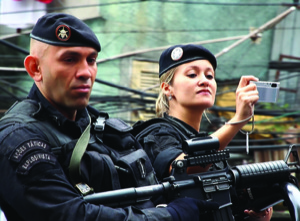
Rhythms of Resistance
The criminalization of poverty in Rio de Janeiro emerges from a history that began with slavery, continued via the economic servitude of the oppressed classes after emancipation, and culminated in the explosive growth of favelas (urban slums) in the second half of the twentieth century. Rhythms of Resistance explores the controversial new community policing program (UPP) in Rio, which purports to “pacify” communities previously dominated by drug traffickers. The film presents musicians living in recently “pacified” favelas who compose freedom songs recounting their experiences as victims of police violence and social exclusion. Internationally acclaimed samba composer Cathola is shot by police shortly after UPP forces arrive in his community of Cantagalo. Inspired by his near-death experience, Cathola posits a better future through his lyrics of resistance. Cathola’s story is woven together with a series of colourful vignettes in which politicized street artists unravel the rhetoric of the pacification program, charging that the UPP is exacerbating the criminalization of poverty in Rio. Imagining a more peaceful society promised by pacification, the film’s cast of characters has given up waiting for basic rights to be guaranteed by the state and is instead asserting those rights through music and performance art.

In Art We Trust
In Art We Trust is a documentary film about the last days of the art house Tacheles. After the fall of the Berlin Wall, Tacheles played an iconic role in the artistic life of the German capital. Located on Oranienburger Strasse in Mitte, the history of the art house reflected the changing social climate in Berlin. It was a place where diversity found free expression; where international artists flourished. It also provided an example for alternative centers around the world which were also experiencing the consequences of going against the grain of society. In Art We Trust explores the historical and socio-political impacts that affected the fate of Tacheles, while also portraying the art house as a symbolic reflection of Berlin’s contemporary alternative culture (from 1990–2012).
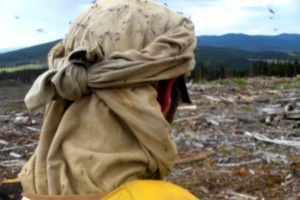
TREEPLANTER
In TREEPLANTERLAND, the viewer is made an honorary rookie on the crew of Foreman Nick, seasoned veteran of the British Columbian bush, and a man whose tutelage has “made a treeplanter” out of some of the most hapless sots Canadian society has yet produced.
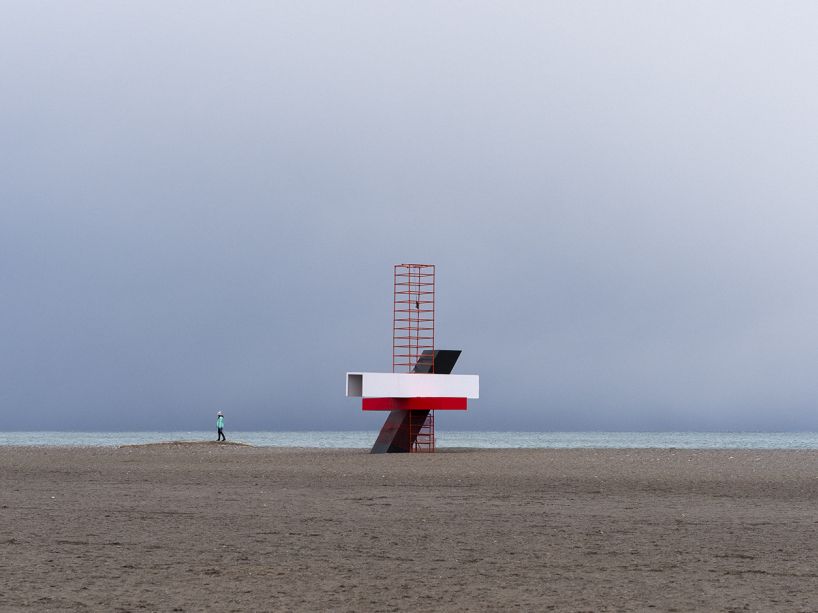
Cousin, We Have Grown Up
Cousin, We Have Grown Up provides an intimate exploration of nature, identity, and spirituality. The project focuses on Jon, a young man seeking an authentic connection with the land as he attempts to discover his true, raw self. Having lived in a tepee for three years, Jon adapted to a sustainable lifestyle as he directly participated in procuring his food, clothing and shelter - all the while developing an intimate connection with nature. During this time Jon began to reshape his identity to be harmonious with naturalistic spiritual beliefs. Though he assumed an untraditional lifestyle, Jon remained linked to the outside world through his job as a massage therapist. Initially intended as an examination of “back-to-the-land” sustainability and environmental stewardship, this project evolved as Jon’s life took an unexpected turn. Recently, he made the difficult decision to leave his tepee and start a new life in a house with his partner, Jess. Despite this, Jon intends to continue his physical, spiritual, and emotional relationship with the land as he seeks to maintain an existence encompassing two conflicting ways of life. Cousin, We Have Grown Up depicts the complexities and contradictions of a man coming to terms with larger questions that involve self-identity, rejection of modern society, and the difficulties in re-establishing an authentic connection with nature. The project combines photographs, video and candid journal entries, and is constructed with an awareness of the challenges in presenting imagery that some may construe as being appropriative of Aboriginal culture. Cousin, We Have Grown Up produces a layered portrait: an intimate adventure-misadventure story of a young man trying to live freely.
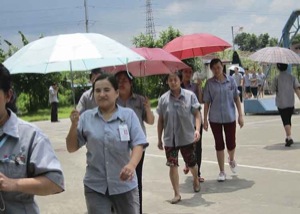
The Heart of the Dragon
The Heart of the Dragon is a photo-based essay film documenting the lives of factory workers in China. Still images of factory workers, their factories, and the products they make from factories in Dongguan and Shanghai—show the human side of manufacturing. Incorporating video footage and ambient sound recordings, the film aims to shift viewers’ pre-existing notions of what “Made in China” looks like. The visual and aural information presented aims to humanize the collective Chinese factory and draws attention to the human components of manufacturing that keep China’s economy powerful. The Heart of the Dragon also documents a process that does not regularly enter our consciousness. It is important to recognize the human labour behind the products we buy and sell, to show respect and understanding for the factory workers.
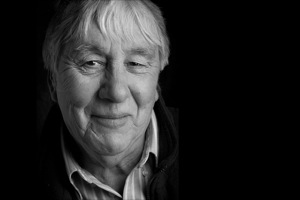
On Reserve
The relationship between First Nations people and broader Canadian society is hindered by a perpetual lack of understanding. Starting from this premise, On Reserve is a film imbued with belief in the transformative powers of storytelling. Influenced by the style of Allen King’s actuality dramas, On Reserve invites the viewer into an experience of reserve life. The film, set in Alderville First Nation, Ontario, home of Canada’s first industrial school (precursor of the residential school), explores the consequences of Canada’s aggressive assimilation policy. By following elder Carl Beaver, the film takes viewers through the life rhythms of the community, showing various characters along the way. Though directly affected by First Nations politics, it is curious how little Carl (like many others) knows about the history of aboriginal people in Canada. This begins to change as Carl’s curiosity is provoked by talk of the growing Idle No More movement. Carl begins to see that while Idle No More began as a First Nations effort, the issues at stake affect all Canadians. Our democracy and our environment are on the line. If there was ever a time for people to set aside their differences and unite, this is it.

Defenders
Dan Epstein's Defenders employs multimedia installation to paint a living ethnographic portrait of Canadian and American criminal defence lawyers in three cities: Detroit, New York, and Toronto. The project addresses the personal experience of criminal justice by focusing on the individuals who defend the accused. After more than a year of conducting interviews with his subjects, Epstein assembled a database of recorded video and still portraiture that depict lawyers in their work spaces. The stories that inform this work are diverse and engaging, ranging from firm indictments of the criminal justice system, to staunch defences of a lawyer’s work, to sad stories of justice gone sour. While Defenders seeks to address larger, systemic questions about criminal justice in the 21st century, it does so by offering an intimate window into the personalities and quirks of the people it portrays. As a portrait of a profession, Defenders hopes to provide an in-depth and informative look at an under-examined aspect of the complex world of crime and justice.

Open Water
Open Water follows endurance swimmer and coach Kim Lumsdon’s quest to swim 52 km across Lake Ontario. At age 56, in the twilight of her career, when most are making plans for retirement, Kim has planned to undertake one the most gruelling physical endeavours. The daughter of famed Canadian swimmer, the late Cliff Lumsdon, Kim has been involved in swimming since youth but is no typical athlete. Born with a congenital condition that turned her knees inward, even walking can challenge her. Water, on the other hand, sets her free. With an initial attempt scheduled for summer 2012, Kim was sidelined by a kneecap infection requiring emergency surgery. With shattered plans, questionable health, and her glory days long past, Kim faces immense obstacles in steeling herself for another attempt at Lake Ontario—and to become the oldest woman to swim across it. Following Kim over a two-year period from the start of her training in 2011, Open Water portrays a woman searching for meaning and defying expectations when confronted by seemingly impossible odds. In probing further into Kim痴 personal life, Open Water touches on universal truths about the strength of dreams, the power of will, and the harsh lessons of reality.

Astudillo: A Voice of Hope
Astudillo: A Voice of Hope is a documentary that follows the journey of a Latin American political refugee who became an Anglican Priest in Toronto. After escaping prosecution in Ecuador because of his political ideals of socialism and liberation theology, Padre Hernan Astudillo settled in downtown Toronto in the early 1990s, singing in subway stations and hoping to create a church that preaches solidarity, love, and social justice. Once he became a priest in Canada he made it his mission to help those in need. This commitment would lead him to his biggest initiative, the Caravan of Hope. The Caravan of Hope project was a response to the 2001 earthquake in El Salvador that left 100,000 people homeless. Padre Astudillo’s church, San Lorenzo Parish, began to drive ambulances from Toronto to El Salvador in support of its underfunded public health system. The film follows the journey of the caravan as it traverses 6,000 km of different countries and cultures with their own stories of social movements and their leaders. The stories encountered along the way exemplify Padre Astudillo’s vision of solidarity and social justice. Astudillo: A Voice of Hope explores Latin American immigrant storytelling by connecting Latin American myths and history with the experiences of Padre Astudillo
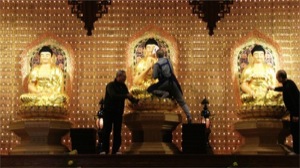
To Live as One
To Live as One is a self-reflexive documentary film that traces the changes of Liu’s perspective on Buddhism. Growing up in a Buddhist family gave the agnostic Liu extensive experience visiting temples and attending religious ceremonies. In those early years Liu was very skeptical about Buddhist beliefs because at first glance they appeared superstitious. In his early 20s, searching for the purpose of life, Liu rediscovered Buddhism and studied its tenets in more depth. He was impressed by some of the core ideas of its teachings, such as the notions of Impermanence, Dukkha, and Causality, which are self-justifiable without requiring blind faith. To Live as One employs a narrative driven by Liu’s inner change. The film addresses some often misinterpreted aspects in Buddhism, such as “worshipping,” burning incense, chanting, and “aversion to materialism.” Liu’s story is interwoven with footage shot in the Fo Guang Shan Temple (Mississauga, Ontario), including Buddhist ceremonies and daily practices. The film presents discussions with senior practitioners regarding some of the more confusing Buddhist concepts and also shows aspects of their secular life.

While We Wait
“The meaning of life is that it stops” -Franz Kafka. We are all going to die. Our bodies will cease to exist in their current form, and what will follow is uncertain. Regardless of the unavoidability, common understandings emphasize the prevention of death. The foods we eat, activities we participate in, and lifestyle choices we make are driven by a desire to extend life as long as possible. When we fall ill, those in the medical field assist in battling the disease in a steadfast evasion of death. We actively avoid its imminence. While We Wait is a film that navigates through three experiences with terminal illness and death. Edwardo, Augustina, and Donna, recall their personal encounters with the death of their loved ones, terminal diagnosis, and medical treatment. Their varied experiences paint a complex portrait of what it means to face loss, surrender control, and come to terms with the inevitability of death. While We Wait presents a poetic narrative that encourages its viewers to confront their own mortality.

Kathak in Motion
Kathak is an ancient Indian classical dance form dating back many centuries. Kathak was primarily performed by male dancers, who told the stories based on Hindu mythology in temple settings. Now it has been shaped by modern influences and gone through many iterations to come to the theatre stage. Kathak in Motion traces the dance’s journey using the life experiences of Sandhya Desai (72), exploring past and present dance practices, and how traditions evolve from one generation to another. Sandhya began dancing at age 24, after her marriage to Atul Desai—an Indian classical musician who played a significant role in her success as an established Kathak dancer, teacher, and choreographer. Atul was a music pioneer who introduced novel musical compositions that changed the focus of the Kathak repertoire from traditional temple stories to tales of contemporary life. He has worked closely with one of India’s renowned Kathak dancers and choreographers, Kumudini Lakhia. Set in Atul and Sandhya’s adopted hometown of Toronto, the film explores the journey of Kathak dance through conversations with Sandhya, her dedicated dance disciples, and their performances.

The World in Ten Blocks: Stories From Bloor Street
The World in Ten Blocks: Stories From Bloor Street is a documentary film (in interactive and theatrical versions) that presents the experiences of immigrant entrepreneurs who own and operate small businesses along the 10 blocks of Bloor Street West between Dufferin and Crawford Streets. Hailing from all over the world, the film’s participants share their stories in detail, relating why and how they came to Canada, the difficulties they faced along the way, and the transformations they’ve experienced as a result. In the interactive version, users can choose to hear from various participants as they progress through themes that trace a rough chronology through the immigration experience. The World in Ten Blocks creates a mosaic of personal narratives that explores the challenges and rewards of immigration to Canada.
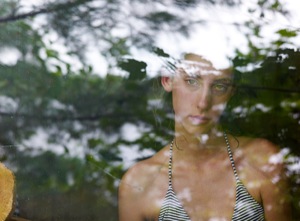
Hardscrabble
Now known as Golden Valley, Hardscrabble was the name European settlers first gave to this small northern Ontario community upon their arrival in the 1870s. These two names neatly bracket the combination of struggle and promise present in this rural location and its starkly beautiful, economically challenging terrain. Informed by the “city symphony” documentary film tradition, with its lyrical observation of people in urban environments, Hardscrabble is presented as a “country symphony” comprised of three movements. The first—“The Road In”—explores Woroner’s personal attachment to this place, which stretches back more than two decades. The second movement—“Survival”—branches out to explore the marks made on this locale in the short time that non-aboriginal people have inhabited the area, with emphasis on the centrality of family and the fluctuating clash between nature and humans. The final part—“The Road Out”—posits Golden Valley as a microcosm of the widespread disappearance of sustainable small-scale rural communities in Ontario. Straddling a divide between subjective concerns and empathetic engagement, this series of photographs blends personal reflection with social commentary. While disparate elements arc from introspection to wider perspectives, veiled references to intergenerational trauma imbue the work with a somber subtext. These images of Golden Valley focus on the struggle to survive—the hardscrabble

Safar
Safar (journey) is a film about Mariam Zaidi’s sister, Rabab, who has cerebral palsy. As part of the UAE’s expatriate population, Zaidi’s family is one of many that has no access to government healthcare and no option for permanent residency. Contrasting the opulence of Dubai with its absence of social benefits, Safar examines the lack of security felt by the UAE’s expatriate population. The film focuses on Zaidi’s family’s attempt to migrate from the UAE to Canada, and its subsequent rejection based on the “excessive burden” clause of the Immigration and Refugee Protection Act. With challenges from Canadian immigration, Zaidi attempts to embark on an alternate route by applying for citizenship alone, in the hopes of sponsoring Rabab as her dependent. The film addresses the loss of support the filmmaker’s family has felt in her absence. Questioning rigid Canadian immigration policies that do not consider the nuances of each family situation, Safar challenges the way we look at people with disabilities in and outside of Canada as a “burden.”
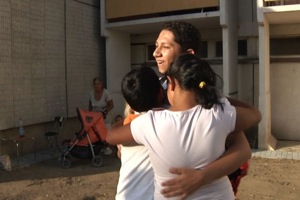
Romano Drom: A Story of Youth
Romano Drom: A Story of Youth looks at the lives of four Roma youth living in the Czech Republic and Slovakia. The youth share deeply personal stories about their experiences, passions, and opinions, and by doing so they examine the often painful political and social realities of being a Roma youth growing up in post-communist Czech Republic and Slovakia. These intimate reflections reveal the important issues and obstacles they deal with daily, such as racism, segregation, and access to education. The rise of right-wing extremism, nationalist parties, and neo-Nazi groups in Europe has adversely affected Roma community whose living standards have plunged significantly since the fall of communism. In Central and Eastern Europe Roma suffer from both the lowest education levels and the highest unemployment rates. They are often targeted and victimized by right-wing groups. The lack of communication and segregation between Roma and non-Roma in the Czech Republic and Slovakia enable discrimination and prejudice to flourish. Romano Drom: A Story of Youth is a personal attempt at bridging this divide and creating a space where respectful dialogue about the issues that affect these Roma youth can begin. At a time when media largely portray Roma youth as criminal and uneducated, the film's subjects challenge the negative and simplistic stereotypes imposed on them by actively seeking positive change in their communities.

Analogue
Analogue explores the resurgence of old-school, outdated, or historical processes in the digital age. The digital world promises speed, economy, and convenience — everything available at our fingertips on our computers. But as the convergence trend accelerates, many are starting to question the costs of this shift to digital, non-physical forms. By following several artists working in different media, Analogue uncovers what we might be losing. From luthiers handcrafting guitars, filmmakers hand-processing film, to a legendary record producer refusing to use computers in making a record, these artists are holding on to the old methods for qualities, processes, and experiences that are vanishing or leading precarious lives in the world of computers. Analogue explores what makes each medium unique, how physicality connects us to our world, why old forms might survive longer than their digital counterparts, and why the price we pay for the speed, convenience, and perfection of digital may be too high.
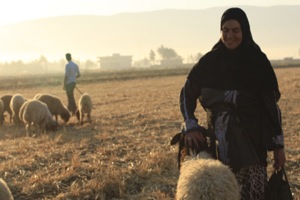
Waiting for Waladi
In the Middle East, tradition dictates that a couple’s status in family and community depends on their ability to bear children, preferably sons. Couples that experience difficulties conceiving are often stigmatized. Women are held responsible regardless of who the infertile spouse is. Waiting for Waladi is a film that tells the stories of three Bedouin women from the Lebanese Bekaa Valley who had to deal with their husbands’ infertility. The documentary aims to expose the cultural burdens of marriage on young women and the subsequent pressures by family members on newlywed couples to bear children. Not being able to bear children, the three women share a familiar story that is repeated throughout many parts of the world: They are immediately blamed for the infertility and are forced to live in shame. Waiting for Waladi is an intimate portrait that lets viewers hear the voices of women discussing a matter that is almost undiscussable in the Middle East.
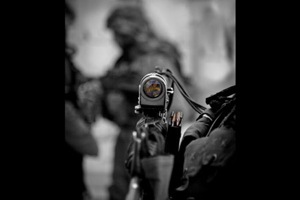
At Home
Interweaving personal experience and archival documents, and integrating individual and collective memory, the multi-video installation At Home addresses the continued violations of Palestinian human rights by the Israeli occupation forces. Employing still and moving images, and sound, At Home transmits the Palestinian struggle for freedom from the streets of Palestine to the space of a gallery in Toronto. The silent videos Mourning and Target commemorate Palestinian intellectuals, leaders, and activists who were assassinated by the Israeli intelligence agencies, including Mossad, inside the occupied Palestine and across the world. These two videos are juxtaposed with three additional video works. A Night at Home documents a night invasion by the occupation forces. In the absence of light, the camera captures only the sound of shooting and the whispers of a son, mother, and grandmother posing unanswerable questions. One Thousand Palestinian Political Prisoners depicts the portraits of one thousand Palestinian prisoners. Each portrait appears for a fraction of a second before it is wiped from view, questioning the value of human lives in times of war. BIL’IN dispatches the sound of local, international, and Israeli peace activists fleeing tear gas attacks by the Israeli occupation forces in the village of Bil’in located in the West Bank. The five videos together constitute a documentary-based installation that questions the silence surrounding Israel’s colonial practices in Palestine and its violations of international law. At Home places the viewers as witnesses to the loss of lives and peace in a land known as “Holy."

The Grass is Always Greener
It all started with a cow-pool. Arianne Persaud decided to buy a side of grass-fed beef with some friends in Toronto as a way of connecting with the food she ate. It was also a means of coping with paranoia about the state of factory farms and “conventional” meat. This simple act started the wheels turning as Persaud soon realized that this “grass-fed beef” which she had gone out of her way to obtain was something that was readily available in her home country — Guyana. The film continues with the paradox as Persaud meets with like-minded young people who are all similarly going out of their way to be involved in the production of their food. But the memory of home is ever-present and the effortless way that the closeness to food is maintained there is contrasted against the strivings of young Torontonians to find healthy food. In The Grass Is Always Greener two societies are joined together in a manner that highlights the shared history of human food production and consumption, and the psychology that separates those societies.

Brunswick St.
Brunswick St. tells the story of a group of young friends in Halifax in the 1970s. Amidst the ethos resulting from the civil rights movement, the feminist movement, and the opposition to the Vietnam War spilling over into Canada, the group found a commonality in each other — to “create a better world.” With the idea that one’s actions on a personal level can have a larger political impact, the group set out to work and live cooperatively, building a community based on shared ideals around equality and social justice in an effort to create this different, better world. Interweaving past and present-day footage, the filmmaker threads a story about her parents and their friends in their quest to live differently. Brunswick St. explores themes of youth engagement and community in working towards social change — a story that remains timeless.

Passages
Passages is a photographic documentary which explores the 179-year history of the Toronto Island Ferry and its interrelationship with the residents and non-residents of the Toronto Islands. The fifteen-minute ferry ride transports passengers from a busy and chaotic downtown core to an idyllic and peaceful landscape, creating an interesting psychological and physical shift. One aspect of this journey is a linear sequence of events in time (a beginning, middle, and end), while the other is non-linear involving inner thought and memory. In this vein, Passages explores how the external journey maps the internal world. A ferry not only transports people between geographical and psychological realities but also changes over time with advances in technology and modes of transportation (that is, the introduction of faster ferries and the building of bridges). Ferries can become historical relics offering a unique focus for exploring the evolving and dissolving connections between subject and place. Combining contemporary photographs with archival imagery, Passages examines time, place, and the archive’s role in documentary practice.

Agency
Agency is a documentary film that follows young Western women struggling to work as models in Osaka’s unforgiving fashion market. The film features two protagonists, Marta, a hardened twenty-year-old from Estonia and Holly a wide-eyed thirteen-year-old from Ottawa. Both stories intersect as Holly enters the world that Marta knows all too well. A modelling contract in Japan is often packaged as a lucrative and rare opportunity, but Wright’s footage hints at the questionable business transactions actually taking place. Having modelled extensively in Canada and abroad, the filmmaker is well versed in the ins and outs of the fashion industry. Her first-hand knowledge contributes to her emphatic gaze on the models as they oscillate between newfound independence and heart-breaking vulnerability. The Osaka fashion world is a lesser-known catalogue market specializing in bridal and lingerie work. Japan’s standard of femininity praises adolescent girls pouting in lingerie ads and posing in wedding gowns. To satisfy customer demand, young Western women are brought to Japan on modelling contracts lured by guarantees of wealth and glamour, with everyone profiting but the models themselves. Alone and far from home, models are especially susceptible to the exploitations inherent in the fashion business. Agency offers an intimate look into one of the obscure corners of the modelling industry. Wright’s film asks questions about regulations in the modelling world while exploring broader concepts of beauty in an age when young girls are raised on images of Photoshopped faces and airbrushed limbs.
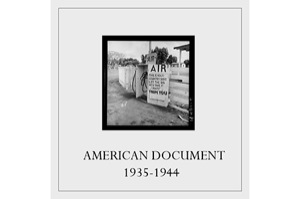
American Document
Since the conclusion of World War II, the ethos of the Roosevelt administration (1933-1945) and the achievements of the New Deal era have been celebrated by official rhetoric. American Document is a dynamic storytelling platform which deconstructs the validity of this long-sustained authority in the United States. Between 1935 and 1944, the United States Resettlement Administration (1935-1937), Farm Security Administration (1937-1942), and Office of War Information (1942-1944) contributed to the capture of a panoramic portrait of America in the form of a photographic survey. Collectively, these photographs constitute the Farm Security Administration-Office of War Information archive, and impart an unparalleled documentary account of the New Deal era. This Thesis engages archival evidence to question and illuminate how state socialism was imposed on an unsuspecting people at the expense of individual liberty, free enterprise, and the ebb and flow of the American dream.

Obskyura
In the documentary film, Obskyura, Melissa Gordon follows an up-and-coming burlesque performance artist in Toronto on her journey of creativity, madness, and longing. This film explores the unique work and life of “Obskyura,” the performance artist, who frequently delves into controversial themes stemming from real life experiences. At the beginning of the film, the character's identity is obscured. The main character is revealed through a series of candid exchanges between the filmmaker and subject in the confines of the performer’s apartment where she spent the summer of 2012 in relative seclusion. As the film progresses, Obskyura is completely unveiled. Obskyura is more than just a portrait of the artist; it is an investigation of the relationship between the subject, filmmaker, and audience. It also explores the multiple perspectives at play within the creative but sometimes isolating documentary film process.
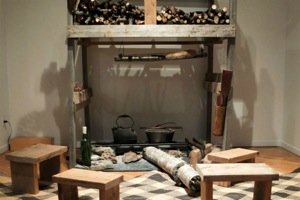
Stories Around the Tetel
Tetel, in the language of the indigenous Kelabit tribe of the interior highlands of Northeastern Sarawak, Borneo, means cooking hearth or fireplace. In Kelabit culture, the tetel was a place for mediation, negotiation, matchmaking and communal gatherings. Today, Kelabit language and culture are gradually disappearing as young Kelabits leave for urban centres to further their education. With this project Marcus Raja, herself a curious and eager member of the Kelabit tribe, aims to highlight the declining relevance of the tetel to the Kelabit community and to explore some of the causes and effects of the loss of its traditional function. For Marcus Raja, the tetelhas acted as a bridge to transfer knowledge about family structure, traditional culture, and social relationships. Its loss represents the loss of Kelabit language and culture in the race for progress, it represents changing realities. Her installation examines Kelabit concepts of individual, communal, and cultural identity as Kelabit voices, around the tetel, tell stories of continuity and change across the last few decades. As the Kelabit embrace development, the rapid disappearance of the tetel has affected Kelabit oral history and language, changing the social context and experience of communal gatherings. By reconstructing and humanizing the tetel in this installation, Marcus Raja explores the topic of cultural deterioration. Through it, she aims for a personal representation of a society in transition, and for a narrative balance between the forgotten past and the uncertainty of the future of her own identity.

Labeeb
Labeeb is an intimate portrait of Sumaya, a Somali trans-woman. The project consists of large-scale colour photographs, and a double-projection video. Some of the photographs are studio portraits where Sumaya sat for the artist; others depict Sumaya in her daily life. One video also documents aspects of her daily life, while the other portrays Sumaya performing a Somali ritual usually reserved for women. This practice is one that Somali women undertake when preparing for a special occasion or ceremony. The practice itself is a hybrid: traditional and religious. The double projection is meant to add texture and complexity to Osman’s attempt to engage with questions of gender, sexuality, and culture. The videos speak to the hybrid cultural expressions of Sumaya and other persons like her. These images place African-born trans-people directly within the traditions of their African/black cultural heritage. While posing questions concerning gender, culture, and religion, the videos examine how the body can move into new states of being. They are themselves “trans-ing” practices, crossing the traditional with the new all-in-one body. This work pushes back against claims made by some African leaders that there are no African queers in their countries. Osman’s work puts African/black trans-people on record. It questions how we understand the various roles bodies play or perform, and which bodies or genders are understood to perform them—in particular, assumptions we make about female, black, queer, and trans bodies.

As Far as the Eye Can See
A prairie field in Winnipeg is where a mystery occurred one summer night in 2001, and from this evening onward an obsession grew. As Far as the Eye Can See takes the audience on a journey back to Ptashnik’s home town, retracing familiar places and fading clues. For Ptashnik, home is a place of warm memories, but also one which evokes terrible recollections. In a field close to Ptashnik’s home, the body of a murdered aboriginal woman was dumped. A young girl at the time, Ptashnik considers the discovery of this grisly event a loss of innocence, and the story continues to haunt her. As Far as the Eye Can See documents Ptashnik’s journey back to her childhood neighbourhood. She endeavours to learn as much as she can about the murder and the the murder victim. As she walks in the the victim’s footsteps, her ideas about the beloved places she came from are forever changed, leaving her to confront dark truths about her community.

Timnadine Songs
Timnadine Songs is a film that depicts the journey of Hmad Laarossi, a young Amazigh (Berber) musician, songwriter, and activist living in the southeast of Morocco. Laarossi blends traditional songs with African desert blues music on electric guitars. His band, Imodda, uses music to preserve their cultural heritage, to inspire Amazigh youth to take pride in their language and culture, and to fight for Amazigh rights in North Africa. Spending the first years of his life in the backcountry of the Sahara Desert, Laarossi is profoundly influenced by the desert landscape, in both his life and work. He writes lyrics rich in metaphors about the natural world and uses them as a way to speak out against state policies aimed at erasing the identity and memory of his people. The story interweaves scenes of his band, lots of music, and discussions from community members, artists, and activists to reveal a flourishing Amazigh revival in Morocco led by artists and youths.

Fundamental Requirements
Fundamental Requirements of a Documentary Work: A Manifesto is a two-part, call-and-answer exploration of the artist's hypothesis that any creative work to be considered "documentary" must exhibit five particular fundamental characteristics. The audience first navigates a physical manifestation of a thoroughly researched paper exploring the nature of documentary forms across varied artistic disciplines. The research paper is reduced to a series of five statements describing each fundamental characteristic of documentary. Audience members experience each of the five characteristics sequentially as they pass through a series of doors—each door not only communicating a single characteristic but also alluding to the scholarship and theory in which the particular argument is grounded. Beyond the series of doors lies a collection of documentary art pieces which all exhibit the five fundamental characteristics of documentary. This collection of art exclaims that, "Yes, this is all documentary work," yet allows each work to speak for itself and makes no value judgments on any work. In addition to the thematic connection of "exhibiting documentary characteristics," both the series of doors and the various documentary art pieces explore notions of passages through space and time.

détente
détente is comparative account of World War II based on two sets of letters. A relaxation of tensions on a national scale is pursued through similar experiences found within the personal written documents of a German soldier and an American officer. Their private expressions concerning the separation of families during warfare are combined with the historical propaganda films from their own nations to create a possibility for compassion and understanding between any two sides at war. The narrative excerpts from these two military men and the visuals become abstractions of sight and sound through editing and animation. These abstractions seek to represent any one in any conflict. At its most basic, or perhaps most naive level of peaceful intent, détente suggests, “If you get to know someone, you probably won't want to kill them.” Hopefully.
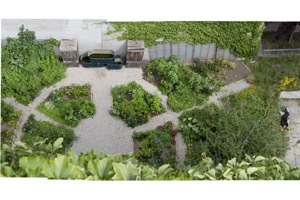
The Nature of Urbanity
The Nature of Urbanity explores and problematizes the human/nature dialectic as a cultural construct fundamental to the development of meaning, purpose, and security for the otherwise fragile human condition. Addressing historical and contemporary issues within the discourses of landscape, philosophy, and urban development, The Nature of Urbanity employs aerial photo-panoramic composites of urban vegetable gardens, exposing this relationship by juxtaposing the mathematical precision and control of constructed space with the organic chaos of foliage and greenery. The garden as a physical and intellectual space is essential to understanding the evolution of the nature concept in culture. The garden represents humanity's first organization into society bringing freedom from the tumults of life in the wilderness and allowing for the construction of our most romantic and idyllic notions of nature. Given the current global entropic crisis, we need to reconsider our integration in the global biosphere, which will require an empathic re-envisioning of our physical and metaphysical relationship with nature. Our understanding of nature emerges directly from a changing idea of what it means to be human. This ultimately determines how we think about and act toward the world. On the one hand, we have developed nature as a realm of physical "stuff" studied and defined by science, while on the other, we approach it through a transcendental reverence that invokes the sublime. What is routinely missed, ignored, feared, or disclaimed in an effort to maintain the intellectual purity of the binary is nature’s existence as a product of culture.

Drums and Feathers
Drums and Feathers juxtaposes pre-Columbian Mexican dances of three important ancient cultures (Conchero dance from the Nahuatl, Papantla flying from the Totonac, and Chinantec dances from the Oaxaca valley with original music compositions. The video examines self-representation, symbolism, and meaning in contemporary Mexico. The documentary intends to represent some of the interactions of the traditional music and dance performances in contemporary Mexican indigenous cultures. Through collective memory and performance as a social ritual, these interactions highlight identities and ethnicities, as well as the role of body language in cultural displays. The project reveals the distinctions of visual and aural codes through cultural syncretism.

Memories of Panjshir
Memories of Panjshir is a photo-based project that employs, through intimate testimony, the involuntary recurring memories of Abdul Rahman Mohammadi, 42, a war crime victim from Afghanistan who is struggling to adapt to life as a political refugee in Canada. Mohammadi is recognized in his native country as the president of the Afghan International Peace Federation. This makes him a target for the Taliban and other criminal organizations who believe in war-mongering policies and practices. Mohammadi has been a prisoner of war in Afghanistan. He has lost much of his immediate family through violent criminal acts and has been critically wounded three separate times in his journey to discover a life without the threat of violence. In 2010 Abdul was forced to escape from his native country and leave behind his family—who now wait for his unlikely remittance under the strict surveillance of the government. Through the fragmented representation of Canada’s urban peripheries as unfamiliar territory, Memories of Panjshir blends Mohammadi’s tangible surroundings with the invisible force of the recollections he is unable to control. By encouraging dialogue around flashbulb memories triggered by the ordinary, this project highlights the problem of post-traumatic stress disorder in victims of war and torture as they struggle to adapt to refugee life in Canada.

Trust Your Eyes
Trust Your Eyes is a reflection on photographic images and the challenges of representation in contemporary documentary photography. In this project Raivitz questions documentary’s claim on the truth, impartiality, and the ability of photographs to represent different realities. To challenge the conventional view of documentary images, Raivitz uses his gaze to question our ability to grasp reality, in particular by interrogating the act of looking at the world as a failed means of understanding it. While exploring the limitations of representation, Raivitz is also looking for new ways of representing the world through images. His hope is that such ways will enable photographs to point to the complexity and uncertainty of the human condition. Trust Your Eyes aims to expose the unwritten agreement that exists between image makers and their audiences. The project breaks down the standard photographer/viewer relationship as a means of asking us to rethink how we look at pictures. In so doing, Trust Your Eyes highlights the role of viewers in giving images their significance and meaning, asking them to re-consider how they look at images, the preconceived perceptions they bring to them, and, therefore, what meaning they expect photographs to deliver. To explore these issues, Raivitz created pictures from a range of genres confirming that even the most mundane scene is packed with meaning.

Hands in Leash
Hand in Leash is a personal, exploratory documentary investigating the kinship between humans and dogs. Through observing and speaking with others, as well as turning the camera on her own relationship with her dog Stella, the filmmaker questions what we know about the human/animal dichotomy, while revealing how our relationships with these non-humans can reshape our philosophies on life. The film’s light-hearted style brings a new perspective to the documentary tradition by moving the camera to a new level and letting the dogs “speak” for themselves.

Here, There, and Nowhere: Imaginary Geography of Translocal Spaces
Here, There, and Nowhere: Imaginary Geography of Translocal Spaces brings together the artist’s backgrounds in anti-colonial social work and photographic practice to explore the themes of war, poverty, and globalization. On a political level, the creation of fictitious cityscapes highlights the interconnections between contexts and engages the viewer in a non-didactic deciphering of what lies in the interstices of here and there. By creating representations that highlight hybridity and translocality, the use of fictitious landscapes subverts the neocolonial gaze that imposes and demands cultural authenticity. Cities are presented as alive, inhabited, and bearing signs of resistance without being reproduced in images as exotic “others” and bucolic landscapes “untouched” by civilization—some of the familiar visual tropes of colonial and neocolonial photography. On a personal level, the creation of fictitious cityscapes reflects the artist’s experience of the contexts that she inhabits in Canada and Lebanon as being materially but not sensually distinct. It is a frequent occurrence that a smell, sight, or feeling she experiences in Toronto reminds her of Beirut. For many immigrants and others displaced by war, poverty, or other reasons, memories of place not only exist at an intellectual level, but also as an embodied sensation of being transposed to another place. The creation of fictitious cityscapes that bring together the here and there resonates on a level of understanding that goes beyond descriptions of place and time to a level of feeling, thinking, and experiencing, that encapsulates what it feels like to exist in more than one place at once.

House of God
House of God is a visual, musical, essay-style film that journeys through Toronto’s electronic music scene to examine states of trance facilitated through music, drugs, and dance. Through encounters with musicians, dancers, DJs, academics, and scientists, the film highlights and questions what it means to get lost in the music, and the human search for something more. The experiences of individuals who use song and dance as a way to experience God, including Christian, Native American, Baha’i and Ismaili Muslim, are also paralleled with those who live for the dance floor. A collaborative collage of sound and image, including original music by local and international DJs, as well as video footage, photos, and performance art, House of God aims to propel viewers, eyes wide open, into the realm of the mysterious and mind-altering.

Unfriend
There's something happening to language as a result of social media like Facebook. The word “friend” isn’t just a noun anymore. It’s also a verb. You can be friends with someone, and you can friend someone. You can also unfriend someone. This is a totally new term, a verb for the action of breaking off a friendship, and it was the Oxford dictionary’s top addition to the lexicon in 2009. Unfriend is a radio documentary exploring the sometimes painful, shameful, and (let’s face it) often funny world of friendship breakups, be they digital or otherwise. Using interviews, found sound, and narration, Unfriend will resonate with anyone who’s ever had a friend.

The Flood and the Mountain
Interweaving fact and fiction, myth and history, travelogue and historical documentary, The Flood and the Mountain traces the journey of an unnamed narrator on a pilgrimage to Mt. Ararat. Following in the path of the late astronaut James Irwin, who led two expeditions in search of the remains of Noah's ark, the narrator inadvertently stumbles across the remains of the often catastrophic history of the surrounding territory, from the iconoclastic period of the Byzantine Empire to the Armenian Genocide of the twentieth century. At the centre of it all lies the highest peak in the region, a mountain imbued with holy status but witness to the violence of countless civilizations. As the opportunities for climbing Mt. Ararat become more precarious, the distant dream of the ark is replaced by the ever-present disaster of the Armenians and the continual denial of the events in modern Turkey. More than a crash course in the history of Christianity in the Near East, The Flood and the Mountain is a philosophical inquiry into the often tenuous relationships between mass destruction, faith, and the image. The film is both an indictment of those who transpose their own order onto God and re-write history for political power, as well as a desperate first-person search for the ineffable - a portrait of an outsider lost in time.
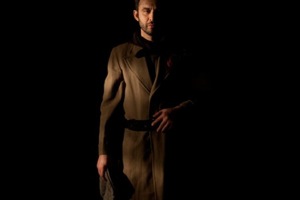
Miguel's Battlefield
Miguel’s Battlefield traces the life of the filmmaker’s grandfather, Miguel Gonzalez-Inestal (1901-1995), and his involvement in the Spanish Civil War, exploring the relationship between past and present. After his release from prison as a young man—a result of anti-government demonstration—he became involved in the anarchist organization CNT (Confederacion Nacional del Trabajo) as a union leader and military commissary fighting for the Republicans. By using archival footage, contemporary imagery, and reenactment, “traces” of his experiences and the personal consequences of his ideology are interpreted through a poetic form functioning within the boundaries of metaphor and meaning, history and memory.

Every Face in the Americans
As the amount of information we contend with multiplies daily, we rely increasingly on technology to help us keep up. The tools we use are often uncannily effective: For instance, Apple’s iPhoto, which (for the purpose of later helping us sort our photos) silently and without our instruction applies a face detection routine to every photograph added to its library. On our behalf, the software takes on some of the “heavy lifting” involved in understanding an ever-expanding world. Every Face in The Americans is the result of this procedure, as performed on scans of the 1977 edition of Robert Frank’s seminal book The Americans. In capturing faces (or in some cases, what it thinks are faces), iPhoto intervenes in our reading process, assuming some of the responsibilities we traditionally assume ourselves. The result is a set of 58 low-quality, heavily cropped images, selected, framed, and sequenced according to the software’s algorithms. In some cases, we see the actual “Americans,” but reduced, removed from their context. In others, iPhoto’s skill at recognizing a pattern of shapes and contrasts—a syntactic recognition—is subverted by its lack of semantic ability; where it sees a face, we see nothing. Despite their separation from their contexts, the images retain a connection to the photographs from which they are drawn. They invite us to look through them to the original work, focusing on the periphery, considering what has been left out, and reconsidering the processes of selection, framing, sequencing, and seeing.
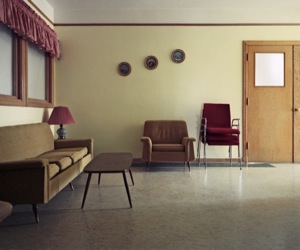
Three Women
The documentary project Three Women centres on the creative lives of three women McCarroll came to know while living in the farming community of Bruno, Saskatchewan (population 600). All three grew up in rural Saskatchewan and each succeeded in creating a unique path in a place and at a time of limited options. For each woman the surrounding landscape is intrinsic to her existence. Bernadette Greuel writes and recites poetry inspired by her role as a mother and farmer’s wife. Susanna Bauer makes art from whatever she finds around her—whether it is pine cones, seeds, bark, feathers, or road kill. Sister Maureen Maier worked tirelessly to save the environment that she felt saved her, the convent where she became a nun at age 18, and continues to help preserve the history of her prairie sisterhood. These three women are strongly defined by rural life. What gives them their voice also nearly renders them invisible in its vastness; they are restricted by it while simultaneously inspired by it. Rather than allow themselves to be devoured by isolation and tradition, they’ve used resourcefulness and determination to surpass expectation. Until now their audience has been small. This project aims to expand it.

Savage Gold
The documentary film Savage Gold was inspired by my recent trip to Guatemala where I became aware of a human rights issue that changed the way I perceived Canada. Goldcorp Inc., a Canadian gold mining company operating in Guatemala, has stirred up community conflict, brought agricultural destruction, effected water contamination, and caused illness in the affected communities of San Marcos and Sipacapa. A powerful Canadian mining lobby, and the existence of public funding for Goldcorp Inc., makes us all complicit. Scant media attention leaves most Canadians unaware of the ugly legacy being left behind by one of our own companies. The resistance effort in Guatemala and Canada is receiving more attention in its attempt to hold Goldcorp Inc. accountable to human rights ideals and environmental law. In the film, human rights organizations, Liberal MP John McKay, Guatemalan citizens—including indigenous leaders speak out against the company’s influence in Guatemala and explore the potential for a brighter future.

Toronto Souvenir
This project explores photography’s role in memory and history. It is about revisiting sites of memory In Toronto containing little or no visible traces of their public and private significance. Using the public library and archives, and consulting regional historical societies, Walker collected stories warranting inclusion and perpetuation in the community’s living memory. The sites and stories range from early aviation history and Hurricane Hazel to the marginalized history of women’s efforts in World War II and the neglected cemetery site of an early Toronto psychiatric hospital. By photographing these sites and re-presenting them with their hidden histories, this project intends to provoke dialogue about the intangible place of memories and their relationship to photographs and documentary studies. Using the postcard as a vehicle furthers this project’s intent to be distributed and absorbed into the personal archives of the audience. The souvenir postcards reproduced from the photographs are intended to activate the possessor’s faculty of memory along with personal and collective narratives at a later point in the ritual of remembering and story-telling. Toronto Souvenir encourages a deeper exploration of place, beyond the visible landscape into the living memories of people and their landscapes of memory.
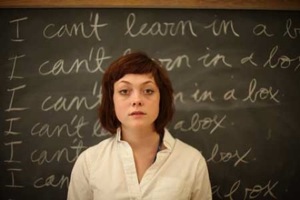
Wired to Learn
Is high school education a valuable source of learning? Does it help us reach our full potential as human beings, or to become part of a “;normalized” society? Wired to Learn is a documentary media website, and a site-specific mixed-media installation that addresses these questions and invites the audience to partake in the conversation. While the website invites the audience to follow the production of the installation, it is also a space that is used to share stories about Ayoup's own learning experiences, disseminate audio and video interviews with educators and learners regarding their feelings about education, and aggregate Web sources that offer innovative ideas and opinions about learning and instructing. The mixed-media art installation which takes place in a high school is a means of infusing Ayoup's audio and video media with nostalgia and sensory experiences which a two-dimensional screen cannot reproduce, in order to heighten the memories and conversational urges about one's own educational experiences. Within the installation, learners and educators from seven schools- from the public, private, and alternative sectors within Montreal and Toronto- share their views about how their institution is, or could be, a success or a failure. They also reflect upon their own behaviours as high school participants. The media within the installation are intended to act as mirrors for the subjects and audience within a high school milieu. Ayoup's hope is that they see and hear one another's opinions, observe their own, and bridge a communication gap that typically exists between learners and educators.

Next-door Neighbour
Next-door Neighbour examines the reasons that brought seven immigrants to Canada and their impressions about the country they now call home. Every year approximately 250,000 newcomers arrive in Canada. Between 2001 and 2006, Canada received 1,109,980 new immigrants. Toronto alone welcomed about one quarter of them (267,855) during this period, enhancing the Ontario capital’s status as one of the most culturally diverse cities in the world. But what did they think when they first arrived? How difficult was it to start over again? Did they have second thoughts? By interviewing people who came from countries such as Lebanon, Burma, and the Congo this project aims to explore these questions and also to understand the reason behind the subjects’ life-changing decisions. As an immigrant himself, Lima conceived Next-door Neighbour as a personal exploration, to understand more about this country and to find parallels between his experience and that of his subjects. The exhibition presents photographs with accompanying voice recordings conveying the identities of the subjects, their stories, and the emotional aspects of their life in Canada. Both mediums present the viewer with different perspectives about that new life.
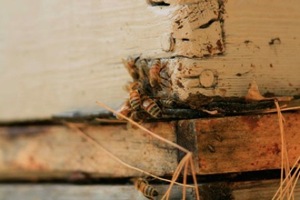
The Last Dance
This project examines the unique world of honeybees and the impact of declining populations on the environment and the global food supply dependent on them. Honeybees offer a unique perspective for exploring the numerous ways in which humans interact with, understand, and manage nature. They are a crucial aspect of modern agriculture’s sophisticated management systems, tasked with producing large amounts of honey and pollinating billions of dollars worth of crops each year. Beekeeping therefore provides a basis for exploring broader social and environmental issues through elaboration on the function of apiculture and the increasingly complex social and environmental constraints beekeepers face. In the gallery, an observation hive allows viewers to safely witness honeybee colony structure and organization. The hive installation is outfitted with audio and video allowing the viewer to hear and see the inner workings of the hive from the bee’s point of view in real time.
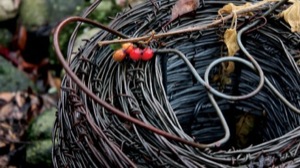
Humphries Road
Humphries Road is a personal journey that examines contemporary agricultural practices in Eastern Ontario and the future of small-scale farming in that region. This small county road, named after the filmmaker’s family for their long history in the area, is a microcosm of agricultural trends that are widespread across Canada. Through conversations with former rural youth from Humphries Road, the film explores their opinions around land development, local organic farming, and the potential of succeeding their family farms. Filmed over four seasons, Humphries Road examines the barriers of farm succession and ultimately the director’s own future in agriculture that manifests itself in the question: If the youth of Canada do not want to succeed their family farms, what are we supposed to eat?

This is Just Batting Practice: A Tale About G.I. Joes, Tomato Boxes, Rivers & Reincarnation
This is Just Batting Practice: A Tale About G.I. Joes, Tomato Boxes, Rivers & Reincarnation is a film inspired by a cache of 8 mm family films that were hidden away in dusty old tomato boxes in a far off corner of Brooklyn. Spanning six decades and five countries, while fusing 8 mm, VHS and digital video, This is Just Batting Practice explores moments of memory found in home movies. Integrating interviews, found footage, and recorded sounds, while straddling the past, present and future, This is Just Batting Practice drifts through time, rushing fast from the source of the river, navigating tributaries, and finally meandering to the sea, through wide and fertile delta soil.

Type 1 Teen
Type 1 Teen is a photo-based documentary project illustrating the life—the ups and downs—of Heather Choi, a seventeen-year-old girl living with type 1 diabetes in Toronto. As the birthplace of insulin, Toronto symbolizes both the optimistic side of diabetes and also the reality of its continued presence in the world. Today, more than 2.4 million Canadians have some form of diabetes, and over 240,000 live with type 1. Formerly known as insulin-dependent or childhood-onset diabetes, type 1 diabetes is a lifelong disease that cannot be prevented. Its sufferers are usually diagnosed before the age of 30, most often, like Choi, during childhood or their teen years. With irregular daytime schedules, variable diets, exposure to alcohol, and inconsistent sleeping patterns, teenagers with diabetes must remember that neglecting to successfully manage their self-administered treatment can cause serious complications and even death. This is the extreme side of the illness. Through hard work and vigilance, patients can maintain control of their blood sugar and experience long periods of good health. Through a combination of text and imagery, the book Type 1 Teen follows Choi over the period of one year as she contemplates the next stage in her young life: university, and a transition from adolescent to adult diabetes care.
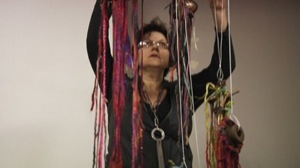
Art Works
Art Works explores the transformative, regenerative, and healing power of the arts through a look at the practices of three Toronto artists: Annalise, Melissa, and Miles. The lives of these artists intersect through their use of Workman Arts, a not-for-profit professional arts company working in partnership with Toronto’s Centre for Addiction and Mental Health. Each artist uses the facilities to explore different methods of creation, developing, or in some instances reconnecting with, various facets of their practices: Annalise and Melissa through visual arts, and Miles through theatre. The artists discuss the therapeutic qualities of their chosen media, meditating on ideas of art and healing.
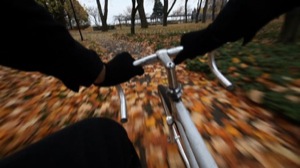
Spoke
Spoke is a documentary project consisting of a short film and an interactive installation. Spoke examines cycling as a viable form of transportation while addressing the infrastructure enhancements needed to improve Toronto’s quality of life. In the film, by addressing the difficulties faced by the cycling community, through first-person accounts and chronicles of the city’s cycling infrastructure, Spoke identifies the need for citizen involvement in municipal politics. Juxtaposing the different perspectives of city representatives and cycling advocates the film facilitates candid dialogue between these separate communities. Spoke promotes change and raises awareness by presenting contentious issues. The film’s accompanying installation communicates the vulnerability and experience of the urban cyclist by providing a simulated first-person perspective. The journey of the filmmaker and project is explored in this paper. The project presents a historical background of cycling and issues of safety and politics, in hopes that the viewer can decide what kind of future they would like to live in.

Voices Silenced by Fear
Blakout.ca: Voices Silenced by Fear investigates how stories from an oppressed public can affect a democracy if voices that were silenced are facilitated and heard. It explores social justice change through the electoral process by combining film and new media to “simulate a democracy.” The website, Blakout.ca, serves both as a public archive and as a conduit to collect stories from people who have been bullied and unjustly silenced by public servants and authority figures. Select stories are produced into short documentary films and juxtaposed with interviews by field experts. Site visitors can speak out by uploading their own stories, read other people’s stories, or engage with the films. The intent is to demonstrate systemic issues by deconstruct¬ing complex topics into engaging “bite size” audiovisual capsules of information. To demonstrate accountability, films are organized into themes and linked to elected politicians who manage the corresponding government ministry. The viewer can navigate the documentary according to their “trigger,” jumping from film to film and subject to subject, or watch a topic in a linear format.
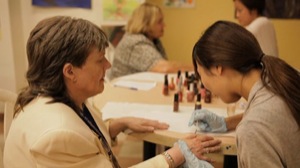
Skin Deep
Skin Deep explores issues of empowerment, feminine identity, and self-worth in Vancouver’s Downtown Eastside. Visual representation of the Downtown Eastside and its residents is often problematic, focusing largely on the shock value of the neighbourhood’s most well-known issues: prostitution, drug addiction, HIV and, perhaps most notoriously, the missing women. While these issues certainly deserve attention, the focus tends to be on individuals-at-risk, rather than the area’s demonstrably strong sense of community, particularly within a feminine context. This multi-screen, non-linear documentary project is a re-creation of “Beauty Night,” a drop-in event which provides beauty services to self-identified, including transgendered, women in Vancouver’s Downtown Eastside. The project includes short video portraits of the women who attend “Beauty Night,” shown through two-way mirrors, as well as projections of the neighbourhood shot on Super 8 film. The goal of the installation, including the mirrored reflections, is to create a sense of self-reflexivity in the audience, and help to physically close the psychological gap in the social hierarchy.

The Portrait of David
Grinberg’s father was an engineer, an actor, a bakery cleaner, and a documentarian. In the summer of 1986, after her grandfather passed away prompting her father to begin a family tradition, he sat down and wrote a memoir of his father. On the bottom of the cover page it is written: “to be continued by my children.” In the summer of 2009 Grinberg’s father died, leaving her with the responsibility of preserving a memory of him that could be passed on to the next generation. The Portrait of David is a first-person documentary that shows the effort of creating a visual memoir of a loved one. The film captures the challenges of collecting material, selecting memories, and struggling to find the courage to be honest.
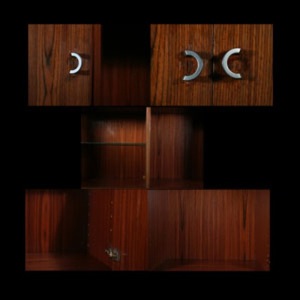
The Wall Unit
The Wall Unit is a mixed-media, multi-layered installation project inspired by Greczny's mother's death in 2006. The project explores the process of memory in relation to dementia as well as the complexities of the mother-daughter relationship. Challenging notions of public and private, The Wall Unit is an intimate portrayal of this difficult life experience. The use of the actual wall unit that belonged to her mother is the focal point of the installation. With the wall unit isolated off-centre, in a large empty gallery space, the physical viewing environment has the sensation of a strange remoteness surrounding its core, much like the feelings of loneliness dementia patients experience. The wall unit is metaphorically the keeper of memories and the witness to her mother's demise. The use of the actual object and not a replica brings another layer of meaning into the installation, representing Greczny's personal experience with her mother's illness and denial of her condition. By incorporating other people's experiences with dementia through video and audio interviews displayed on monitors nestled in the wall unit and on its shelves, the problems associated with the disease are more broadly explored. The wall unit, designed to hold various small objects and mementos, becomes a symbol of the fragility of memory and the fractured or fragmented memory of a person who has dementia.

Out of the Darkness
Out of the Darkness is a collection of autobiographical projects exploring the experience of mental illness. Through the production of several projects John had the opportunity to examine and come to terms with the breakdown she suffered at age 15 and her subsequent diagnosis with severe clinical depression. Themes such as lost memory, stigma, catharsis, destruction, and family relationships are investigated from a feminist perspective. The culmination of these projects is a mixed-media gallery installation. Out of the Darkness makes a strong case for the healing potential of making art. In its open exploration of mental illness, this project allowed John to reclaim a sense of agency and dignity countering the continued social stigma associated with mental illness. The installation also aims to challenge the viewer’s notion of what constitutes a documentary by presenting decidedly avant-garde documentary forms.

In God's Keeping
In God’s Keeping is a personal documentary about Moore’s spiritual journey towards Judaism. Conversion to Judaism is neither easy nor straightforward. It requires one-to-three years of study. Converts must navigate thousands of years of patriarchal tradition and accept the nightmare of anti-Semitism as their own. Through a series of conversations and interviews, In God’s Keeping looks at different aspects of Moore’s life as she reviews where her quest for a relationship with God began, how she veered off course, and why she is hesitant about becoming Jewish despite being drawn to Judaism. In God’s Keeping documents one woman’s journey towards Judaism, but it adds a voice to the growing number of autobiographical films and books about conversion. Traditionally not talked about, converts to Judaism now often refer to themselves as “Jews-by-choice” and are eager to share their stories and experiences of love for tradition and ritual and acceptance in a community that, throughout history, has turned prospective converts away three times in order to ensure their sincerity.

Finding Barakah - An Auto-Ethnographic Sensory Remembrance of a Year in Yemen
Weaving through personal antidotes and self-reflection, this project is about Turnbull as a student and how she navigated, and understood, living in Yemen for a year. As a student of anthropology, political science, and Arabic, the experience, like this documentary installation, directly engages with the value of auto-ethnography and its place in academic scholarship. Finding Barakah addresses issues of otherness, the gaze, and the politics of place and space, along with a personal and bitter-sweet sensory experience of living in the Republic of Yemen. Finding Barakah is situated in the mafraj, an area in the Yemeni home often used for entertaining guests and watching television. Alluding to, rather than reconstructing, an actual Yemeni space, the project includes objects brought back from Yemen. Engaging with sensory memory, the installation evokes taste, touch, and smell, sight and hearing to create and recreate experiences as it straddles the binaries of here and there, them and us.

Postcards from Utila
Postcards from Utila is a series of photographs and postcards from the island of Utila, located off the northern Honduran coast. As the main contributor to the Utilan economy, tourism is important to the livelihood of the local population. Many efforts are being made by the Honduran government to promote Utila and the Bay Islands as top tourist destinations through the use of images representing idealized notions of beauty, without much regard for the potential negative social and environmental after-effects of the industry. Less than 500m from Main Street lies barrio Camponado—the poorest part of Utila—an area that has been sold to Hispanic migrants from the mainland as low-income property. This is where large quantities of drugs are sold, literacy rates are the lowest, and a considerable amount of crime occurs. Yet nowhere in the plentiful tourist guidebooks or colourful Utilan postcards is Camponado mentioned or commemorated. Similarly, problems such as over-fishing, drinking water shortages, racially-motivated caste systems, mangrove and coral reef devastation, and the illegal killing of endangered animals (including the Swamper iguana and several shark species) are also kept from such literature, despite the role of tourism in exacerbating them. Zonjic’s project urges the audience to recognize the ways in which framing dictates our perceptions and negates different types of realities excluded in the process.

No Place. Nowhere
My work takes a position in-between; I'm an astronaut encountering the world from above, an archaeologist digging into the earth, a wanderer in time and space. I'm drawing, writing, filming, photographing, collecting and connecting things together in the way that I see and don't see the world. The viewer must listen closely, become encompassed by the work that offers a view about life and experience which is fluid and uncertain.

A Fragile Exchange
My photography is rooted in a fascination with the human face. We present ourselves with our faces; we judge others based on their faces. A face can tell a colossal lie or a potent truth. The tenuous power of the visage is both captivating and deceptive. Through a series of portraits accompanied by audio excerpts of the subjects’ reflections on their own faces, A Fragile Exchange uncovers the dynamic nature of the face-to-face encounter and the fragility of first impressions. As our societal boundaries for looking remain unclear, we function in two self-opposed extremes: consuming images of the face in commercial culture, meanwhile averting our eyes from strangers’ faces in our daily routines. Creating a meditation on the act of looking, this project encourages an engaged way of seeing as viewers look, listen, learn, and look again. Approaching a life through the face reveals both its self-contained power and the risk inherent in assigning it too much authority. Although a face cannot represent a life, it can be a wonderful place from which to begin an acquaintance. A Fragile Exchange allows me to present a series of engaged likenesses, while inviting my subjects to share their perspectives from the other side of the portrait.

Eternity Rolls
Eternity Rolls is a character-driven documentary about the Reverend Dorian Baxter (also known as “Elvis Priestly”) and the faithful congregation of his Elvis-themed Independent Anglican Church, Christ the King, Graceland. Shot in an observational style, Eternity Rolls follows Baxter from his home in Newmarket, Ontario to the gates of Graceland in Memphis, Tennessee. Besides telling the personal story of Baxter’s struggles to realize his own church, Eternity Rolls also examines our cultural obsession with Elvis Presley, the quest for the sacred in everyday life, and how performance and celebrity affect the sanctity and tradition of religion.

The Canadian: A train ride across Canada (almost) and back again in May 2009
The Canadian explores the myth of the railroad through my experience of taking the train (almost) across Canada for the first time. My installation is a meditation on the notion of nostalgia, explored through this romanticized and perceived as old-fashioned method of transport and the landscape it travels through. The work seeks to enable the viewer to relish in the experience of lingering, savouring, and absorbing each stage of the journey, from the initial desire to travel, through to the journey itself. Photography and train travel, both invented in the first half of the nineteenth century, enabled a new way of seeing and experiencing the world. Introducing unparalleled speed, the train condensed space by shortening the time it took to cover the distance between two points. The romantic notion of travel by train to “far off” lands was fuelled by the picturesque images that the photographer produced and brought into the home, developing a notion that still exists today. Through the ability to see and travel, and explore new terrains, the train and photography led to the growth of tourism, facilitating industrial development and urban expansion. With its role in linking Canada from shore to shore, the train has played a symbolic role in the evolution of Canada’s identity as a nation.

Seats of Power
The ubiquitous chair. Utilitarian object. Object of design. Symbol of power. Chairs are everywhere. We spend many hours a day sitting in chairs, at work and at home. Chair imagery pervades our everyday language and is embedded in a network of symbols. The chair as metaphor appears in such common uses as: Chairman of the Board, to have a seat on the stock exchange, the witness chair, to be on the hot seat. Descartes wrote about the seat of the soul. The title of Chair is bestowed upon high-ranking academics at universities. But why the chair? What is it about chairs? And why should we care? Seats of Power is a collection of portraits of the chairs upon which sit political, business, cultural, spiritual, and media icons in Canada—from the grassroots, to municipal, provincial, and national levels of prominence. The work asks the viewer to consider whether these chairs, both individual seats and institutional ones, are worthy of those who use them and how they function as symbols of power, hierarchy, and status. By examining the objects themselves, what if anything, can we learn about the individuals who occupy them, or the expectations, responsibilities, or promise (or lack thereof) a chair can inspire?

Not Just Boy's Fun: The Rad Ladies Project
Inspired by my female friends and a personal interest in researching subcultures, the online video work Not Just Boy’s Fun: The Rad Ladies Project offers an alternative to traditional documentary form by shifting the director’s role to that of a facilitator and creating a space for expression of self through online media. Highlighting my personal experiences and those of other women connected to underground music scenes, Not Just Boy’s Fun: The Rad Ladies Project attempts to bridge the gap between filmmaker and subjects. What began as an idea for a film in response to “rockumentaries” centered around male subjects quickly evolved into a collaborative Web-based project that allows participants to upload their own audiovisual content, building an archive of stories and discussion. Through the use of social media and peer-to-peer networks, I am documenting experiences and untold stories, building an online community and offering a fresh take on the relationships between artistic forms, documentary practices, and technology.
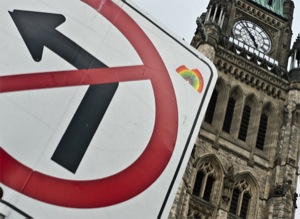
Gay Rights: Politics, Activism and Canada's Gay Conservatives
The identity of the gay Conservative party supporter is one often seen by many Canadians as hypocritical and contradictory, a seemingly rational judgment given the popular association of the political right with more traditional, often religious, views towards sexuality. For gay Conservatives, though, this is a sweeping misconception: Many consider their right-wing political views as completely and naturally congruent with their sexual identities. For the devoted left, these gays are traitors to the historical ties of Gay Liberation to the political left. Through interviews with a range of gay Conservatives complemented by an examination of archival images and media representations, this film seeks to inform viewers of the complex range of issues surrounding the growing population of gay right-wingers and their roles within the larger contexts of the queer activist movement and contemporary mainstream politics.
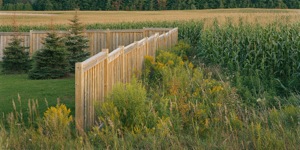
Between Desire
Suburbia and sustainability: two loaded words that, when placed in the same sentence, forge an uncomfortable and antagonistic relationship. Visions of waste, environmental appropriation, homogeneity, and sprawl come to mind. Between Desire is a photography project examining the space between our needs and desires while situating sustainability at the crossroads of these two paradigms. My photographs point towards the constant outward push of suburban expansion and the inevitable collision of the human-made and natural landscapes. I have asked myself this one question. Does this push exceed the limits of the environment’s natural and self-sustaining entropic flows? The project examines a desire to return to Arcadia, albeit an increasingly unattainable dreamscape. The tragedy is, the further we push and disrupt, the very Arcadia we long for moves farther toward the horizon. The photographs point towards two possibilities: one of sustainability and the other, of a desired return to a mythical and pastoral ideal.

Some Kind of Divine
My MRP, Some Kind of Divine, is an exploration of the nature of religious faith. Photographing parishioners in a variety of local churches, I’ve attempted to document the pose of believers through the physical expression of spiritual passion. As a way of addressing issues surrounding exoticism through the display of large-scale black and white prints, I have shot a series of low-resolution video interviews with a wide range of participants expressing views on the nature of God. These views range from atheist to deeply religious, with expressions of doubt and confusion in between. Juxtaposed against traditional photographic presentation, the two media together challenge the language of documentary image making and its implied authenticity.

Mapping our Histories: A Visual History of Black Lesbians in Post-Apartheid South Africa
This paper is both a textual and a visual analysis of the making/mapping/ preserving of radical black lesbian visual history in post-Apartheid South Africa.
Using my own works of photography, I explore how visual activism can be employed by socially, culturally and economically marginalized women as a site of resistance to not only return the gaze of our colonizers, but to develop what Bell Hooks has called a “critical gaze” into heteropatriarchal constructions of black women’s bodies and their sexualities. With thematic projects evoked by women’s own experiences, I partly address the epidemic of hate crimes that has escalated in the past few years, claiming many black lesbian lives in the townships. I argue that queerphobia and hate crimes have further silenced and sanctioned our voices. I reflect on such issues through my previous works entitled Only Half the Picture (2003-2005) and ongoing visual explorations like the Being series (2007), Faces & Phases (2007–2009) and Massa & Mina(h) (2008–2009). I also explore how I have moved from being a lesbian and human rights activist to becoming a visual activist and artist, tracing how my work has developed. Much of this is about reflecting on my work over the past six years, and taking stock of the many complexities of being both an insider and an outsider.

Feeding the Brain
Mental illness is an increasingly pressing issue for Canadians. Over 1 in 5 Canadians will be diagnosed with a mental health disorder in their lifetime, and millions of dollars will be spent on healthcare and prescription drugs to treat these individuals. The documentary film, Feeding the Brain, explores the urgent need to find treatments for mental illness that do more than merely mask the symptoms.This film tells a story of the struggles that many face in an effort to treat their mental illness, and presents some of the most promising, albeit less conventional solutions that have been found. Mental illness survivors, researchers and healthcare practitioners tell their compelling stories and share the hope of a new paradigm in treating mental illness. Feeding the Brain is a film that addresses the need to re-evaluate the causes of mental illness and the corresponding treatments.
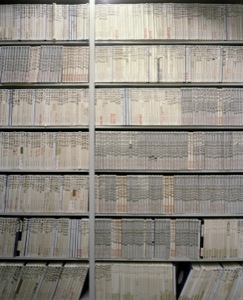
Behind Closed Doors
Behind Closed Doors explores the relationship between photography and the archive. By using photography, the medium instrumental in creating the archive, I have effected a visual dialogue about the boundaries and definitions of both documents and archives. By documenting the systems that are central to our creation and perpetuation of collective memory and history, this work examines the authority, power, and fear surrounding these objects and spaces. The images illuminate institutional accumulation and reveal what is often closed to public access.
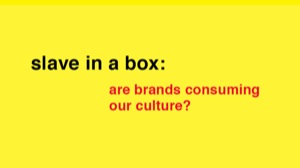
Slave in a Box: Are Brands Consuming our Culture?
Slave in a Box: Are Brands Consuming our Culture? explores the complex relationship between branding, popular culture, and democracy at a time of profound cultural changes brought on by social media. This film explores the fundamental issue of the balance between private desires and public good. The film’s commentary, tracing the rise of branding, as the latest stage of capitalism, is illustrated with advertising and promotional materials for brands such as Pepsi, Nike, and Aunt Jemima. Key arguments from Naomi Klein’s book No Logo, as well as interviews with authors Benjamin Barber, Grant McCracken, and Henry Jenkins feature in the documentary.
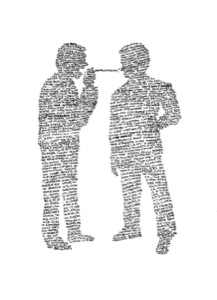
So You're Going Crazy...
Having suffered from mental illness, I know how terrifying, bewildering, and isolating the experience can be. Even after years of recovery, I continue my attempts to somehow process it. Because the subject is frightening to people, and carries with it a deeply entrenched cultural stigma, few people want to talk about “going crazy.” In my experience, talking to others who have been through similar trauma was what helped me the most. Their stories gave me hope and a sense of connection at a time when I felt very much alone. I tried to make my film in the spirit of support and collaboration, and was extremely lucky to have met such amazing, lovely people who were willing to speak openly about their experiences. I hope that this film will provide an understanding of the internal experience of mental illness, and offer some new insights for anyone who relates to it directly.

Nostalgia for an Unknown Land
In the performance installation Nostalgia for an Unknown Land we have chosen to use the metaphorical meaning of the boat to explore the duality of nostalgia as both a desire to escape from and a yearning to return to one’s perceived idea of home. Caught on an irreconcilable ocean of longing, we attempt a re-enactment, to find or lose ourselves in each other’s respective countries: Germany and Canada. Through personal reflections and childhood memories, Nostalgia for an Unknown Land offers a mythical journey that explores the irreconcilability of nostalgia and its complex relationship to our utopian dreams of a better place, be it past or future, somewhere we’ve been or some place we long to go.

Remembering Inninimowin: The Cree Language, The Language of the Human Beings
Inninimowin is spoken in several Native communities across Canada. Although it is considered one of the most preserved Native languages; it is also at risk of disappearing. The language is the vehicle for carrying forth our traditional knowledge, customary laws, identity, spirituality, as well as the arts. Inninimowin holds the sacred stories, ceremonial practices and ancient teaching of the land and the Inninuwak. In a direct act of cultural genocide against Native peoples, the Canadian government, with the aid of the church are responsible for violently imposing the Indian Act, Reserve and Residential School systems on Native peoples leaving a detrimental impact on our communities, shattering our identities and way of life. As a peoples, we did not let our language and culture lapse, we were severed from them and we are now in the process of remembering and putting the pieces of our culture back together. Consequently, in both rural and urban Native communities, fewer people are using Inninimowin, which poses major challenges for the future of the Inninuwak nationwide. Yet with growing and changing perspectives towards how to preserve the truth of our identities come new ideas and approaches. Self-representation and regaining control over our misrepresented images in the mass media can result in positive change by breaking down racial barriers and facing stereotypes dead on. Using the medium of documentary film, I have explored the Inninuwak experience of sustaining Inninuwon from inside the communities, from an Inninu perspective. This film seeks to mend the gaps in understanding between generations by exposing the harsh treatment of Native peoples and moving towards reconciliation and healing.

Secret Selves
Secret Selves is a photographic and audio documentary focusing on four disabled residents living in a group home. Using sound, this project goes beyond stereotypical charity imagery and engages the viewer in a multi-sensory experience. Audio, layered with photographs, produces a complex depiction of the lives of these individuals. The multiple and sequential presentation of the images echoes a filmstrip, calling attention to the inability to know someone through a single photograph. These sequences along with the accompanying soundtrack provide a larger window into the complex, secret, and often misunderstood lives of the disabled. Secret Selves depicts the lives of Richard, Mary, Michael, and Rosemary. Empathetic in nature, this project allows the viewer to engage with the residents and recognize some fundamental differences between disabled and non-disabled lives. The audience is also provoked into exploring its own reactions and feelings, and perhaps facing prejudices or fears relating to the disabled. Just as the images take both a broad and intimate view of the subjects’ living space and daily lives, the audio includes personal conversations and public dialogue. Secret Selves presents the viewer with a glimpse into the personal space of these four individuals, hoping to offer new insights, while recognizing the limitations of media to translate lived experience.

Weston Public
Weston Public is a site-specific collaborative research project that investigates the complexity of youth experience in public space in Weston-Mount Dennis, Toronto. The project brings together architecture and documentary film as a form of spatial and social practice. Weston Public was made in collaboration with Mariangela Piccione, a graduate student in the Faculty of Architecture at the University of Toronto. Weston Public uses a participatory creation strategy and is comprised of a series of short documentaries about the relationship between people and place in multiple sites within Weston-Mount Dennis including; an abandoned Kodak building, a barbershop, a public pool, etc. The short videos are projected through architectural models and exhibited as a site-specific multi-channel video installation. Weston Public facilitates a neighbourhood’s participation in its own story and transformation. It makes an interventionist proposition by engaging people in dialogue about where they live, who they are, and how they are represented. It provides a new analytical basis for approaching documentary and design that privileges the dreams, desires, and experiences of a community.
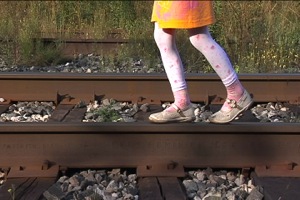
21st Century Calling
This film examines a controversial rail expansion currently underway in west Toronto. On opposing sides of the issue are the Ontario government, seeking to expand the public transit network, and the local communities, who want to protect their health. Events of the film take place in the Junction Triangle, once a notoriously toxic industrial neighbourhood that will now be re-polluted by the province’s eight-fold increase in diesel train traffic. Citizens have mobilized against a plan they don’t want, and against the politicians they elected to represent them. The government is pushing forward with diesel trains for the expansion, citing financial constraints as the main reason. Local residents want clean electric trains used on the line, arguing that the long-term damage to health negates the short-term savings of going diesel. The community keeps on fighting, but time is running out.
Elaine Brodie
Kenneth Chou
Erin Clarke
Christine Engel
Victoria Foster
Ryan Gauvin
Davoud Geramifard
Gail Hammer
Estelle Herbert
Randy Horton
Cole Janis
Erine Kestler
Stephanie Kloibhofer
Mark Laurie
Robert Lendrum
Heather Lidberg
Joanne Loton
Lyndsay Maynard
Sadia Mir
Lum Morris
Lyndall Musselman
Lara Rosenoff
Graham Runciman
Mike Sage
Melanie Saumure
Katherine Schneider
Mark Tollefson
Inger Whist
Marie Wustner
